








NEW MEXICO STOCKMAN
P.O. Box 7127, Albuquerque, NM 87194 505-243-9515 Fax: 505-349-3060
E-mail: caren@aaalivestock.com
Official publication of ...
n New Mexico Cattle Growers’ Association Email: nmwgi@nmagriculture.org 2231 Rio Grande NW, P.O. Box 7517, Albuquerque, NM 87194 505-247-0584, Fax: 505-842-1766
President, Loren Patterson n New Mexico Wool Growers, Inc. P.O. Box 7520, Albuquerque, NM 87194 505-247-0584
President James Duffy
Publisher: Caren Cowan
Publisher Emeritus: Chuck Stocks
Advertising Representatives: Chris Martinez Melinda Martinez
Contributing Editors: Carol Wilson Callie Gnatkowski-Gibson Howard Hutchinson Lee Pitts
Production Coordinator: Carol Pendleton Editorial & Advertising Design: Kristy Hinds
Chris Martinez at 505-243-9515 or chris@aaalivestock.com
New Mexico Stockman (USPS 381-580) is published monthly by Caren Cowan, 2231 Rio Grande, NW, Albuquerque, NM 87104-2529

Subscription price: 1 year - $30 / 2 years - $40 Single issue price $10, Directory price $30 Subscriptions are non-refundable
POSTMASTER: Send address changes to New Mexico Stockman, P.O. Box 7127, Albuquerque, NM 87194. Periodicals Postage paid at Albuquerque, New Mexico, and additional mailing offices. Copyright© 2015 by New Mexico Stockman. Material may not be used without permission of the publisher. Deadline for editorial and advertising copy, changes and cancellations is the 10th of the month preceding publication. Advertising rates on request.
18 New Mexico Ranch Earns Certified Angus Beef Sustainability Award by Kylee Kohls Sellnow
Certified Angus Beef Accepting Applications for Its
Summer Communications Internships by Lauren Mosher, 2022 Communications Intern
Weigh?
Brittley Bowers, Kansas State University Research & Education
38 Fake Meat Company ‘Beyond Meat’ Announces Mass Layoffs, Departure of 3 Executives by Abby Liebing, The Western Journal
Impossible Foods to Cut Workforce by Melissa Sue Sorrells, meatingplace.com
Healthy Soil Program Awards $1.1 Million in Funding for 51 Projects
Going Green Requires Using Fossil Fuels, Says New Study by Bonner R. Cohen
New Mexico Adopts Rule to Protect Cultural Sites by Scott Wyland, Santa Fe New Mexican
Public Input Requested on New Mexico Conservation Definitions
Joint Stockmen’s Convention Program
Brangus Research Proves Conventional Wisdom Isn’t Always Right by By Dr. Darrell L. Wilkes, Executive Vice President, International Brangus Breeders Association
Genetics Valued Over Hide Color
Red Angus Association of America
Tom Sidwell, 2022 Cattleman of the Year by Carol Wilson
Counties Try to Help with Cattle Loss by Cathy Cook, El Defensor Chieftain editor

Authorities Investigate Killing of Mexican Wolf by Jake Frederico, Arizona Republic
Casper Baca Rodeo Company 2022 Renegade
Winners
10 NMCGA President’s Message
Loren Patterson
12 Just the Facts ... & Then Some by Caren Cowan, Publisher, New Mexico Stockman
16 New Mexico CowBelles Jingle Jangle
30 Beef — It’s What’s for Dinner Recipe
36 News Update– Final Rule to H-2A Visa Program, Cattle Growers’ & Purina Scholarships
40 View From the Backside by Barry Denton
49 Riding Herd by Lee Pitts
88 New Mexico Beef Council Bullhorn
90 New Mexico’s Old Times & Old Timers by Don Bullis
94 Food & Fodder by Deanna Dickinson McCall
Real Estate Guide
Marketplace 103 Seedstock Guide
Home at the Ranch by Connie Mitchell
In Memoriam
Collector’s Corner by Jim Olson
In the Arena by Sage Faulkner
126 New Mexico Federal Lands News by Frank DuBois
Advertisers’ Index
Tom Sidwell, 2022 Cattleman of the Year, Photo by Carol Wilson

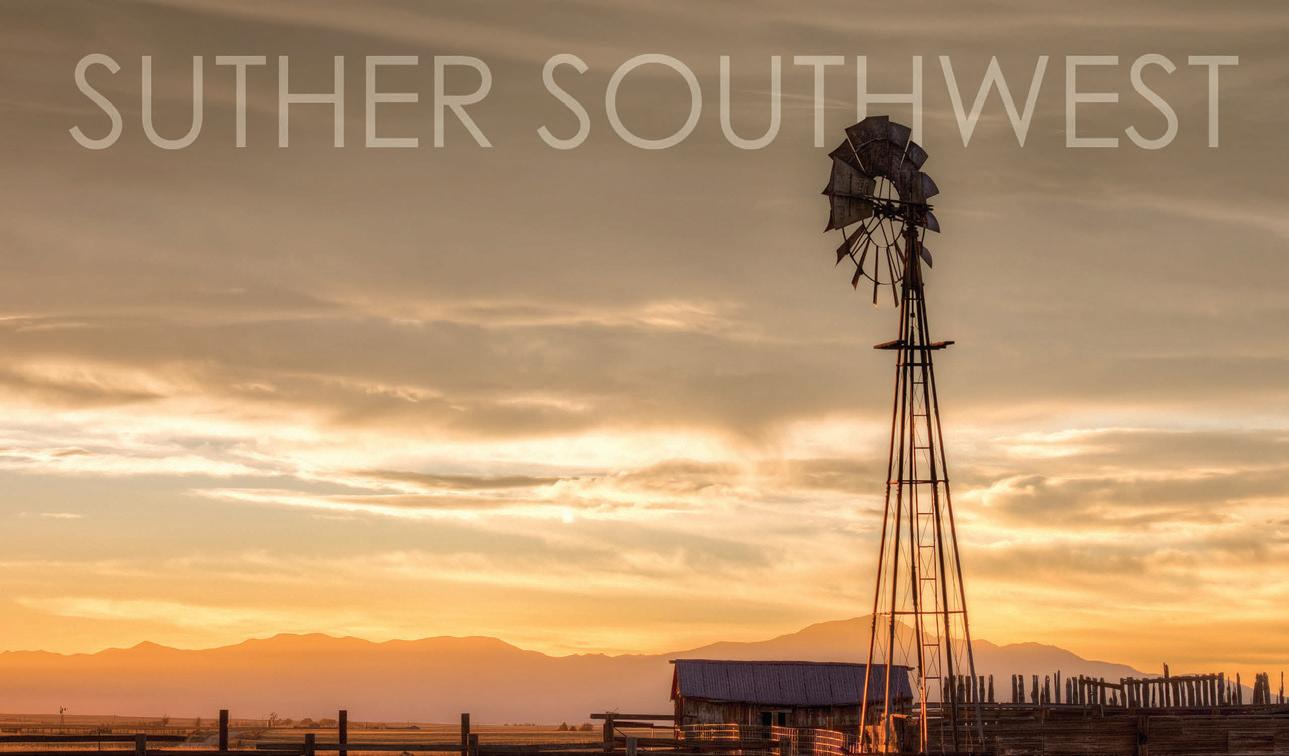








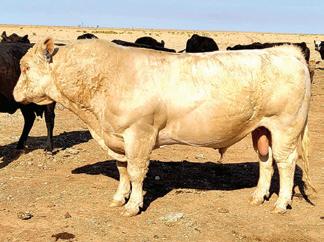

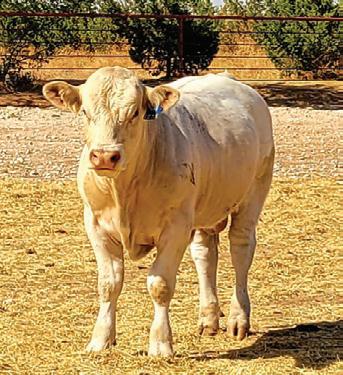
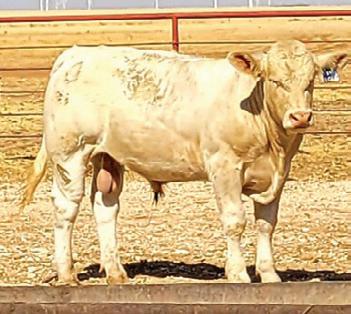



A USDA subsidized crop insurance policy designed to offset some of the costs
operation incurs due to the lack of rain. This policy provides 90% coverage on both rented and owned acres intended for grazing and
A USDA subsidized crop insurance policy designed to offset some of the costs
A USDA subsidized crop insurance policy designed to off set some of the costs your operation incurs due to the lack

rain. This policy provides 90% coverage on both rented
operation incurs due to the lack of rain. This
owned acres intended for grazing and haying.
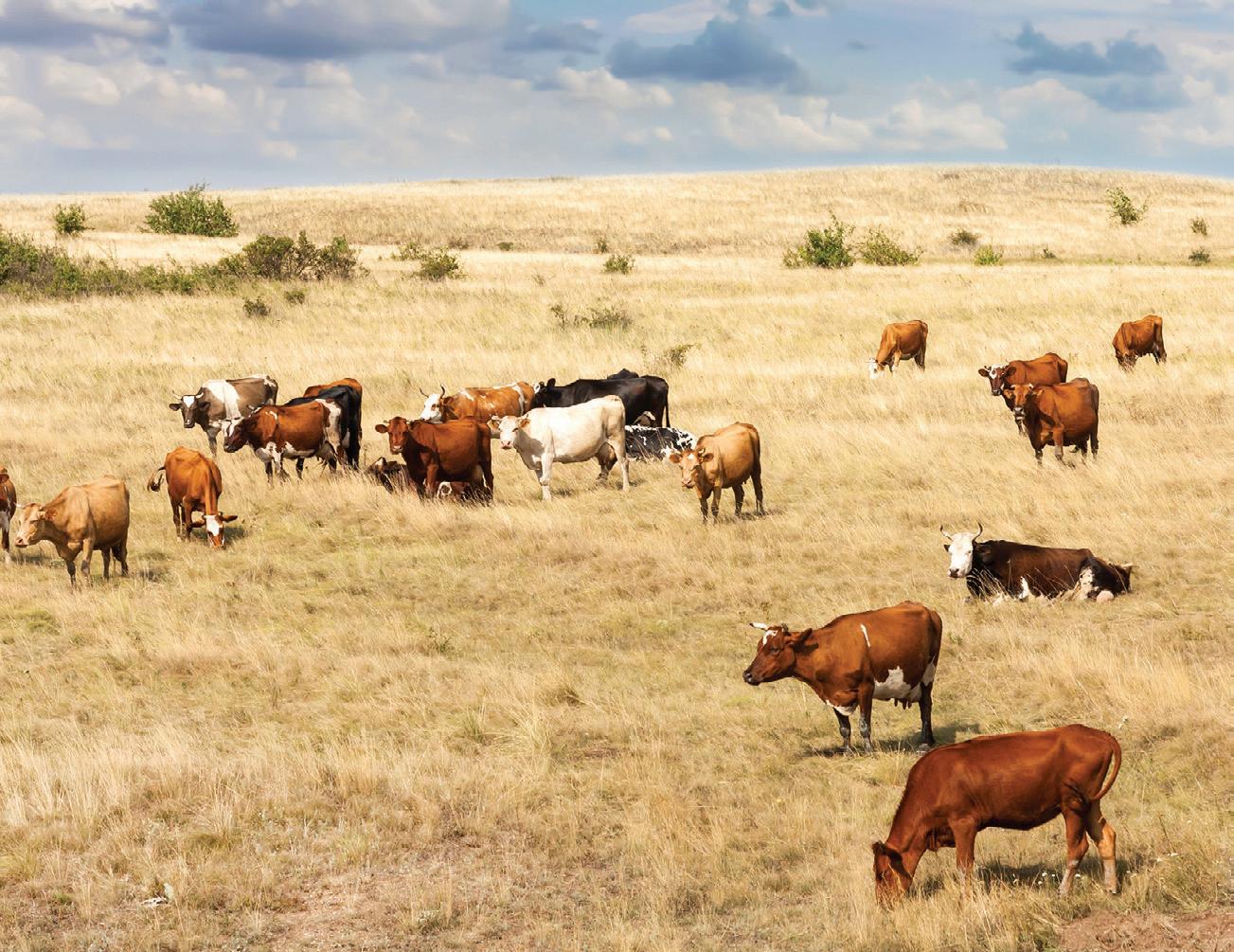
rented and owned
on
When it comes to a
matters.
the wrong move can
When it comes to a PRF policy, planning matters. Making the wrong move can cost you. In the federal crop insur ance program, the prices are set by the government. One can’t shop for a better deal. Agents compete on service and knowledge. Let us show you how SCI sets the benchmark in both, and why so many choose and stay with us.
In the federal
program, the
are set by the
a better
can’t
intended for
When it comes to a PRF policy, planning matters. Making the wrong move can cost you. In the federal crop insurance program, the prices are set by the government. One can’t shop for a better deal.
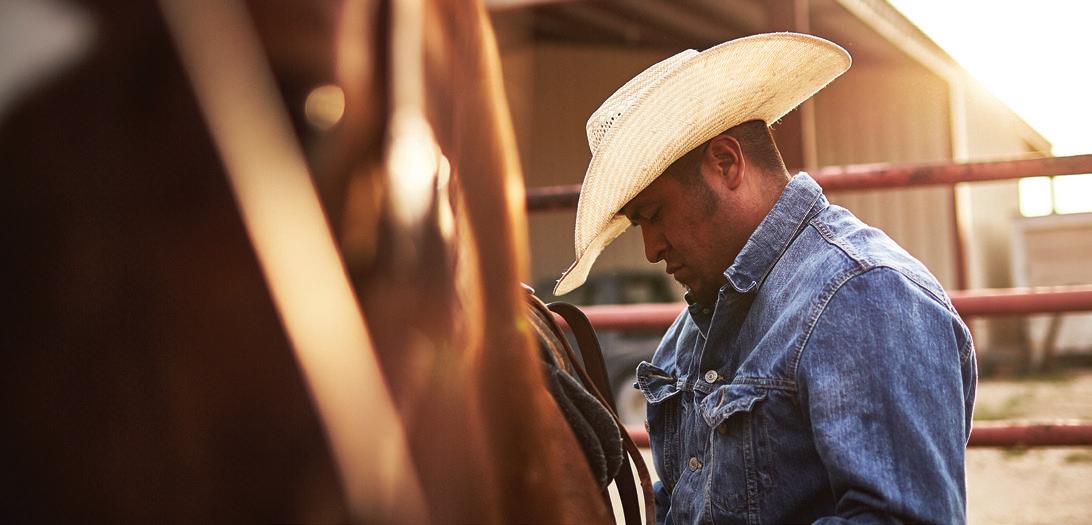


Farm Credit of New Mexico has been farmer and rancher owned for more than a century. Year in and year out, we’ve provided financial services to family-owned businesses of all sizes, helping them grow and prosper. That’s the di erence between being a bank and being customer owned. What can we do for



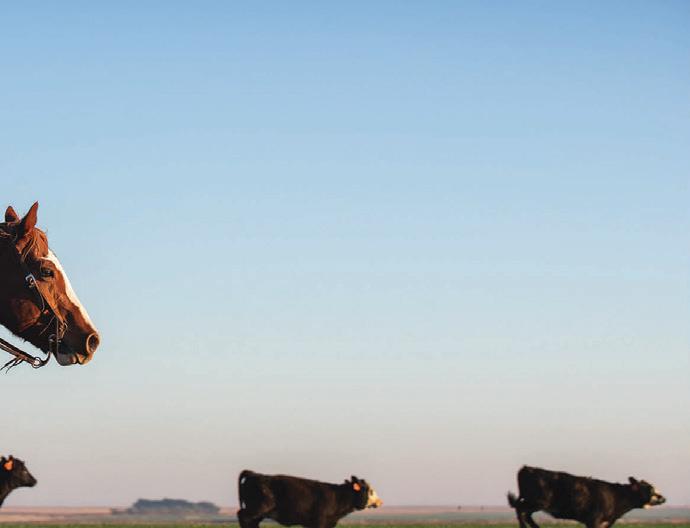
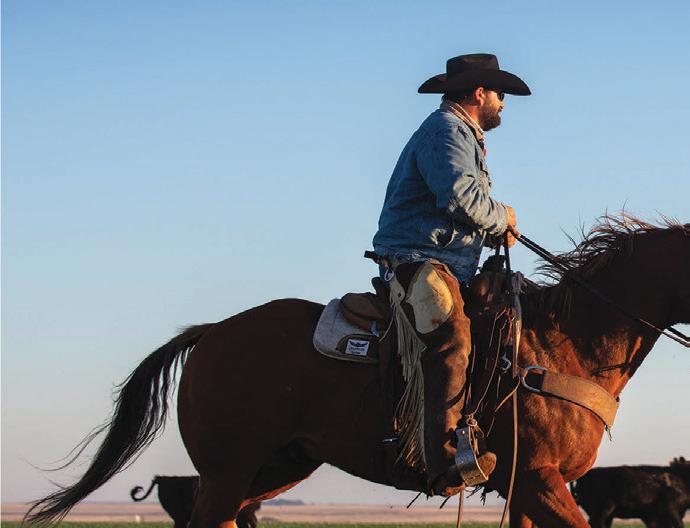


 by Loren Patterson NMCGA President
by Loren Patterson NMCGA President
 Loren Patterson President Corona Bronson Corn President-Elect Roswell
Loren Patterson President Corona Bronson Corn President-Elect Roswell
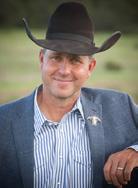
Dave Kenneke
NW Vice President Cimarron
Cliff Copeland
NE Vice President Nara Visa
Jeff Decker
SE Vice President Lovington
Roy Farr
SW Vice President Datil
Joe Culbertson Vice President at Large Amistad
Shacey Sullivan Secretary / Treasurer Peralta
Randell Major
Immediate Past President Magadalena
Tom Sidwell Past President Quay
If you are like me, the decision of what to wear for the day is easy. It depends where in the state I’m going and what the weather is, subject to change on a fifteen minute basis. I carry everything from a vest to a heavy wool mackinaw coat. I usually keep a pressed dress shirt and sports coat these days along with a handful of old shirts suitable to weld or paint in. I never know what kind of ranch emergency I might get myself into or if a meeting is going to pop up on the schedule. The back seat of my pickup catches it all and probably won’t get cleaned out until the truck has to go to the mechanic or the end of May, whichever comes first.
I think our weather is one of the greatest aspects of living in New Mexico, often swinging between extremes within hours or just a few miles. With that in mind, how anybody can discuss climate change or have any idea what ‘climate normal’ might be is beyond me. The one thing I do know is that I have never seen P-Values mentioned in any of the so-called climate change models ever quoted. In graduate school at Texas Tech, our research was never quoted as defin itive without being 99.99 percent correct, if it was less than that we used words like “Tend” or “Trend” but never “Definitive”.
The reason I mention this is because everything can influence our climate on a year to year basis from solar flares, the elliptical nature of the Earth’s orbit, volcanic eruptions and wildfire smoke. To regulate human activity and industry in the name of ‘climate change’ is disingenuous and based on a narrative, not science. Still we see climate change being pushed in nearly every government program, bill or department mission on the national and state level.
As a rancher, I believe in stewardship. I acknowledge that natural resources are finite and have to be managed to become multigenerational renewable resources. What I don’t agree with is our tax money being spent on pseudo-science while the fundamental purpose of government is being ignored. I don’t agree with the Endangered Species Act or government agencies being weaponized to halt economic activity or take away personal rights. The results of our election will determine if the tempo of this incessant march towards absolute government power in the name of climate change is slowed or increased. If a vote is a great first step, then engaging our leaders or serving in positions that can influence government direction is a leap. I encourage each and every one to spend some time every month emailing your elected officials or attending commission and board meetings. Help change the narrative and help change the tempo!
I hope everyone has had a great fall and have plans to attend Joint Stockmen’s Convention. Our theme for this year’s convention is appropriate, Transforming Challenges into Opportunity. You will find we have a great lineup of speakers, discussions and topics with an agenda filled with information helping members meet that goal. Come and help celebrate our 2021 Cattleman of the Year, Tom Sidwell and fellowship with the all the great people in our industry.
Pray your neighbor gets rain, Loren

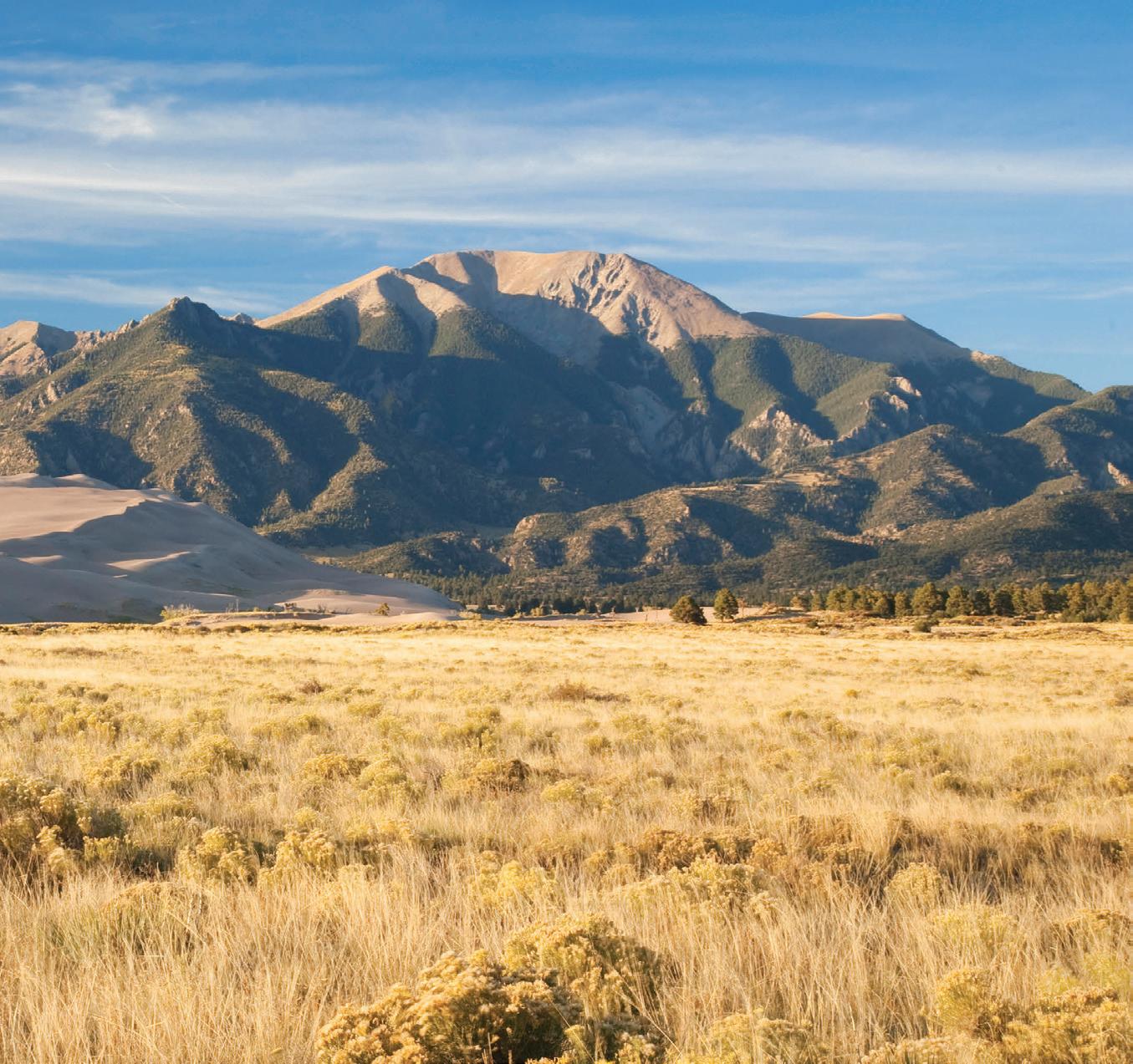

As we sit here days away from the Midterm Elections, there is no way to guess what comes next despite all the polls we hear about on Fox News. Like most everything else, the “popular” news net works tell us nothing.
Regardless of the election outcomes, there are numerous issues our country needs to face. The one top of mind for me today is the Mexican Border.
I can quote the statistics for FY 2022, which are staggering. But I’d rather rely on the experiences of my friends who live along the border in Arizona. I am relying on them because in New Mexico no one except Con gresswoman Yvette Herrell and gubernatorial candidate Mark Ronchetti are even talking about a crisis that is happening in Texas and Arizona, but seemingly are no problem in our state.
Below is a piece that one Arizonan wrote today. This incident took place near Apache, Arizona, a mere five miles as the crow flies from the New Mexico state line.
Does anyone really think the illegal aliens from around the world and violent cartels are side-stepping New Mexico to travel through Texas and Arizona where there are ongoing efforts to address the literal invasion our country is watching?
– Ed Ashurst, Apache, Arizona, October 28, 2022
Last night the gentle
man who works for me saw lights south of his house spread out across several miles of open country and moving. Illegal aliens walking with flashlights going north.
I doubt that it was seven individuals instead seven bunches but it was extremely dark and therefore impossible to say. I’ve never seen this in 25 years.
The man called Douglas border patrol and they said they wouldn’t respond. Next he called the Lordsburg border patrol and they said they would not respond. Next he called the Cochise County Sheriff dispatch and was told that it was an immigration issue and instructed him to call the border patrol.
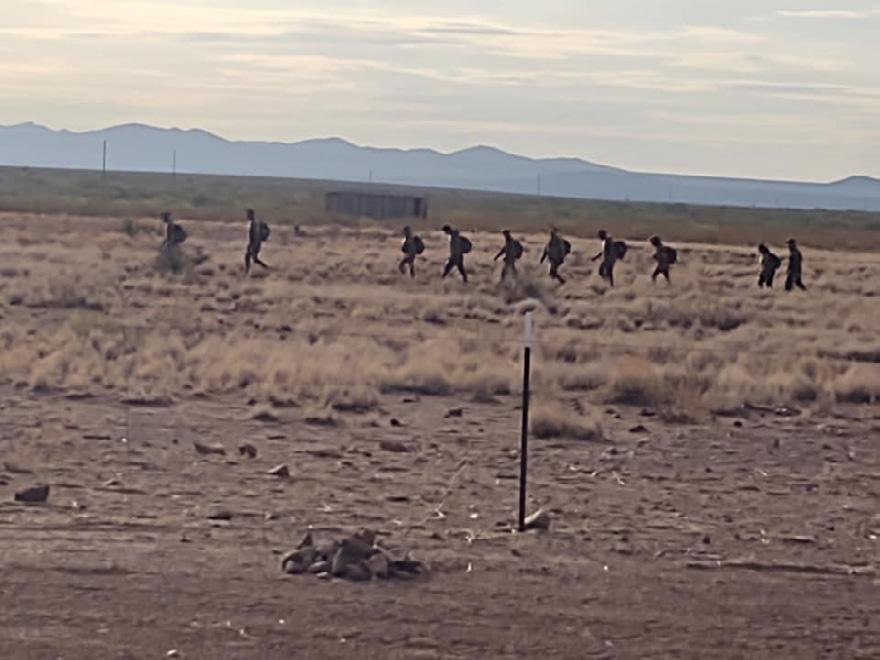
Finally a county deputy responded and my employee was repeatedly told to not “shoot anybody”. He had never told anyone he was going to start shooting.
All the deputy could do is drive down a dirt road with flashing lights in an attempt to scare the aliens who are not scared of anything. The aliens will be in your neighborhood in a few days. Activity on the border has escalated in the last several months.
This is not a rant to blame the border patrol or the county sheriff. It’s not their fault. They are out-gunned and overwhelmed and do not have Washington, DC support. This is the President and congress’s fault and they are completely to blame. Or are they?
Americans elected them! If you think more border patrol or more county deputy’s will fix
this then you are a fool. If you think Trump’s wall would have fixed this you are wrong.
As long as we give aliens free stuff they will come and nothing will stop them. Joe Biden knows this. Arizona U.S. Senator Mark Kelly knows this. As long as we thirst for Mexican drugs they will come and the outlaws will have the funds to win the war.
Joe Biden is as crazy as Putin [but] only half as intelligent. Congress needs a complete sweep – a washout. Total turnover. We are being governed by fools and knaves and it is our own fault.
Ed has written more than a dozen books on border issues, cowboys and the cowboy life.
On October 27, 2022 Fox News aired an interview on border issues that included Arizona rancher John Ladd, who lives just two miles from the Mexico border near Bisbee. John minced no words as he ripped Biden over the border: ‘We don’t have enough manpower’ to mitigate the crisis.”
The interview can be seen at: https:// www.foxnews.com/video/6314431067112
The border crisis is not just a southwest ern crisis. It is a major campaign issue for elections nationwide. ▫
THE FACTS ... & THEN SOME




Recruiting and retaining members, it’s a dilemma that many of our organiza tions are facing around our state and even at the national level. This was the topic of conversation at our recent October state member zoom meeting. We discussed the challenges we all face from hesitating to ask to making sure we make it easier for those willing to participate. We also discussed the solutions to these issues and what our members are doing in their local chapters. As we brainstormed and bounced ideas off each other, a big takeaway was making others feel welcome and not excluding anyone who may have new ideas or does not fit the mold of the stereotypical cattle owner.
Not only has the pandemic taken its toll on our organizations, but generations that have been our backbone for so long are now retiring. We are looking to the next genera tions to carry on their legacy. We must give them the space to make it their own. Now is the time to celebrate those who are eager to join in and volunteer. On that note, we would like to recognize and thank our new members who have joined since our Mid-
Year meeting in June. Cynthia Carpenter Alison Ballard

Liza Yazzie Jennifer Smyer Gail White Renee Nix Mary T. Christmas
We want to invite our local chapters to celebrate their new members and/or active members by featuring them in their future Jingle Jangle articles.
Please join us for the monthly state member zoom meetings mentioned above. They are welcome to all New Mexico Cow Belle members as well as those considering becoming a member. You can find meeting dates and more information on our Facebook page, New Mexico CowBelles.
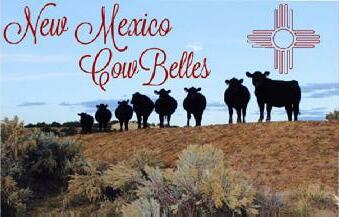
The Chuckwagon CowBelles met in the home of Tommie Aber. The meeting was called to order by Vice President Jean Stone at 10:30 a.m. with the introduc tion of the guest speaker Mr. John Taylor. Mr. Taylor brought a wonderful program on the Los Lunas Stone, which is located 17 miles west of Los Lunas. The group broke for an early lunch with the continuation of the meeting agenda. There was no unfinished business, no correspondents and no new business. The next meeting will be held at the Abo Monument October 10 with a program by Norma Pineda. Lunch at the Shafer will follow. Submitted by Welda Grider
Powderhorn Cattlewomen met at the First Baptist Church, Ft. Sumner, on the October 13, with Karen Cortese and Judy Byrd as hostesses. Ten members were present. Ann Sleep, President opened the meeting with invocation, Pledge and creed cited by all. Minutes and treasurer’s report were given and “thinking of you” cards were sent to several members. The finished cowboy quilt was displayed and is gorgeous. Tickets for the quilt were either handed out or mailed to members to buy or sell. The drawing will be at the November 10 meeting. New busi ness included the slate of officers retained for 2023, except for secretary. A wonderful lunch of favorite dishes and the lasagna, which Judy provided and was enjoyed by all. Everyone brought 10 copies of their recipe to share with others. Next meeting will be at Bosque Redondo Museum with Wayne Overton and Mary Gaye McClain as host esses. Touring the museum will be the program. Joan Key, Secretary
Mesilla Valley CowBelles met during Southern New Mexico State Fair. This year’s fair was a success with loads of Beef recipes being handed out and asked for at the Cow Belle booth. CowBelles participated in the annual Bake Sale donating baskets full of goodies for auction, the AgVentures program where elementary school aged students’ progress among a variety of stations learning about Agriculture. In addition, the ladies assisted with Stick Horse race, calf scramble and the Sale Dinner. The group sponsored the Beef Showmanship and Grand Cham pion Beef Heifer Buckles. Ag Literacy events approaching with anxious CowBelles ready to present on Beef! These include Hatch Pioneer Day and STEM and AG Career Fair. Submitted by Janet Witte
New Mexico CowBelles: Thank you to all who have submitted their news to Jingle Jangle. Please send minutes and/or newsletters to Jingle Jangle, Janet Witte, 1860 Foxboro Ct., Las Cruces, NM 88007 or email: janetwitte@msn.com by the 14th of every month.
▫
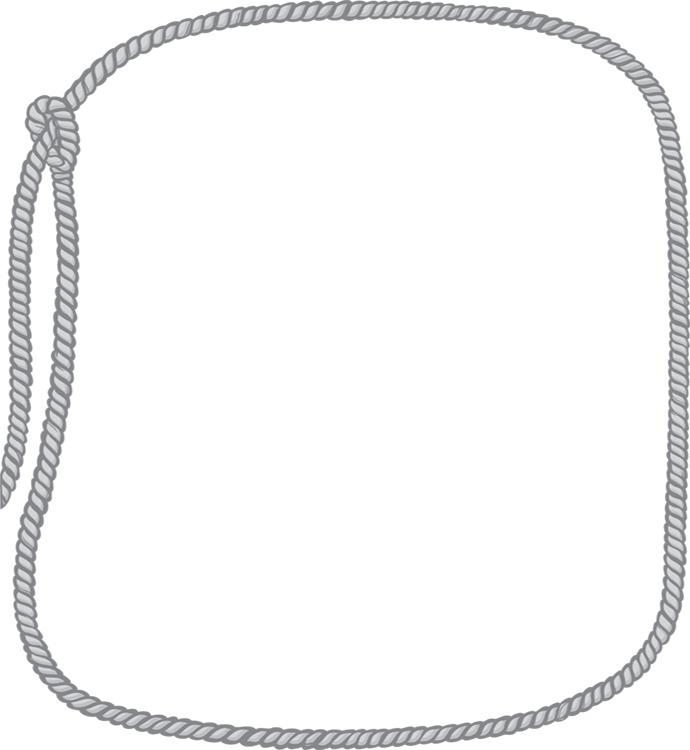

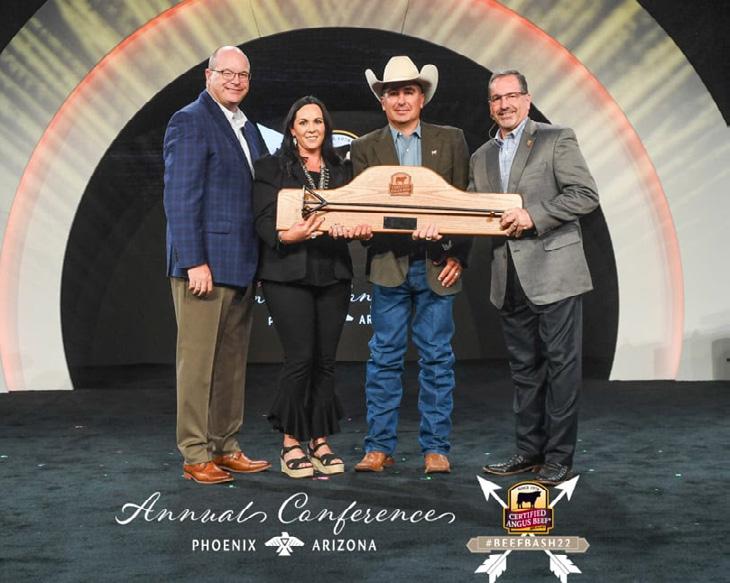 by Kylee Kohls Sellnow
by Kylee Kohls Sellnow
Producing beef in the desert Southwest takes a certain resolve, faith that the rain will come and grit to do the hard things and smile through the work when it doesn’t.
This is the grit engrained in Manny and Corina Encinias and their seven children operating Buffalo Creek Ranch.
Sustainability runs deep for these stew ards of a legacy that dates back to 1777, when the first generations of their family began herding sheep near Galisteo, New Mexico Today they focus on cattle well-suited to the harsh desert range east of Albuquerque, fos tering community strength and creating opportunities for others.
“My ranching philosophy is adapting to the ever-changing environment and market ing climates,” Encinias says.
Their holistic approach earned this ranching family the 2022 Certified Angus
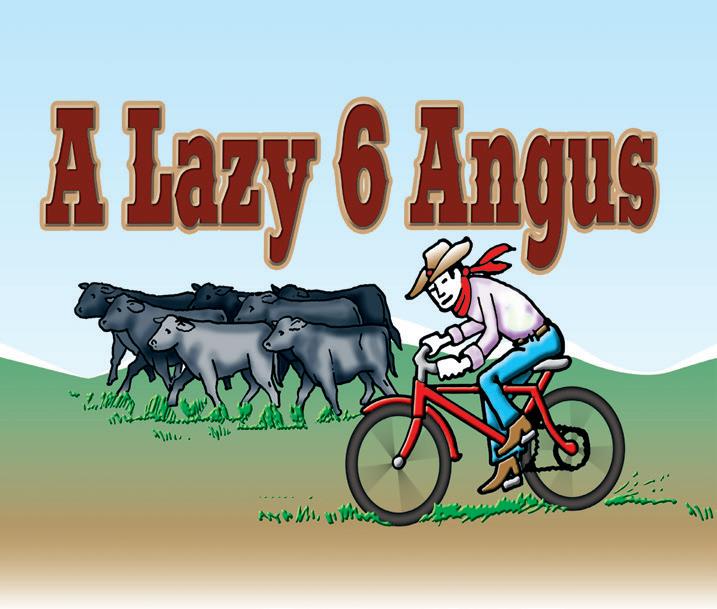
Beef (CAB) Sustainability Award. Restoring the Land
Manny and Corina purchased Buffalo Creek Ranch in 2016 with a vision to restore the land and help it flourish.
“The first part of sustainability is consid eration for the natural resources,” he says. “In the desert Southwest, those are fragile, yet resilient.”
Dormant grasses, the sound of a creek bed crunching beneath boots and a lone, green cottonwood point to the tenacity life requires in this part of the world. Named for the creek that typically runs through its heart, Buffalo Creek Ranch relies on water from a closed basin – and a monsoon season not seen in many years – to nourish its native grasses.
“Our gold in this country is water,” Encin ias says. “And it’s what keeps me up at night. Water will always be of concern, for myself and future generations, because it is so pre cious. I don’t believe people recognize it as a
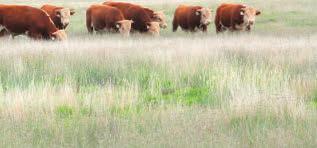
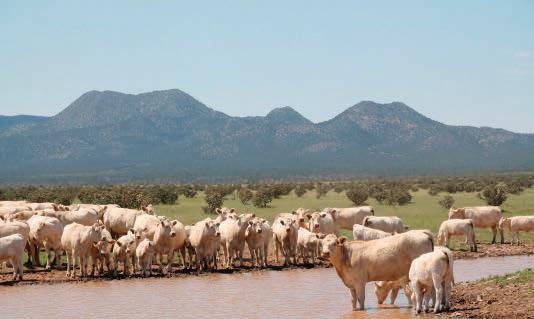

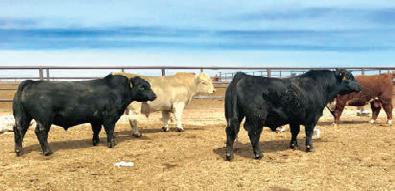
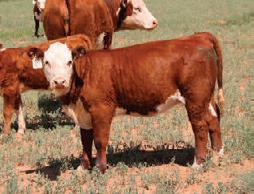
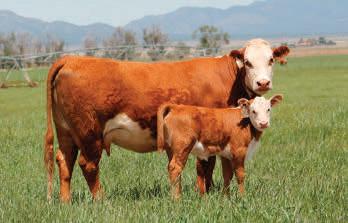


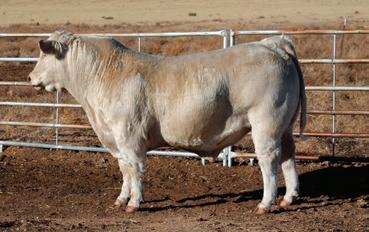
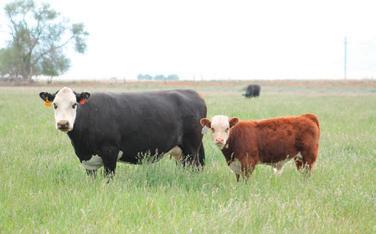
fragile resource in everyday living here in the United States.”
Cattle are part of his plan to restore the land, taking care to only stock as many as the acreage can maintain.

In 2021, the family responded to per sistent and extreme drought by downsizing to 90 of their best Angus-influenced cows. They stock at only 30 percent today – one cow for every 40 to 100 acres depending on the pasture.
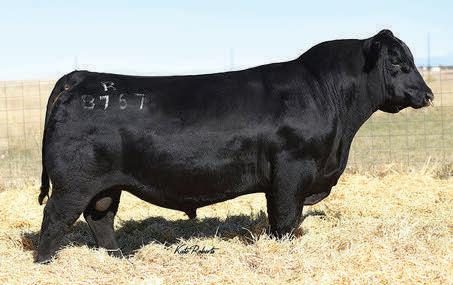
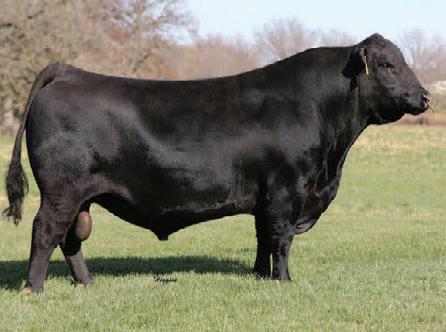
Their genetic goals are multifaceted. Key considerations include Angus cattle that can adapt to the unforgiving environment yet achieve carcass merit and qualify for the Certified Angus Beef ® brand. Cows that stay must be easy fleshing and structurally sound, with maternal instincts and adapted to handle the 6,300-foot elevation. Those still thriving prove Angus cows can meet con sumer demand for high quality in ways that work for both caretaker and landscape on which crops could never thrive.

“The consumer drives a lot of what we do,” Encinias says. “We have embraced that as a responsibility. I think it’s important to have a seat at the table with the 98 percent not directly involved in agriculture, not only as beef consumers but as policy makers.”
Transparency across varied platforms helps define responsibility to the industry and welcomes visitors.
Foodservice salespeople and chefs stop in as part of CAB Ranch Days, learning what goes into a day’s work and a long-term plan. For example, Encinias explains the effect of water-saving night irrigation to limit evap oration and the stewardship of rotational grazing.
His efforts go beyond simply opening the ranch gate. Further education and helping with beef industry programs fit in with the family’s own progress and readiness to share principles on or off the ranch.
“I think Beef Quality Assurance (BQA) as a program has evolved to really take in a lot more of the important consumer-based issues like animal welfare,” Encinias shares.
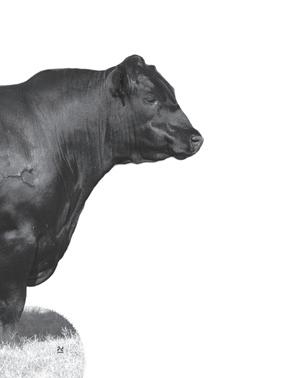
As a former BQA trainer and state exten sion beef cattle specialist, I can attest to the program being about evaluating systems through the BQA principles, he says.
“We can all lend ourselves to becoming better – better handlers of animals and our environments,” he says.

Encinias teaches animal and meat sci ences and ag business at Mesalands Community College, drawing on years of consulting on ranches from Hawaii to North Dakota. In the between hours, he also trans lates for Mexican veterinarians at U.S. feedyards and ranches.

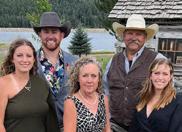
“Instead of just performance or profitabil ity, we try to be the kind of ranch you’d want to live next to if you weren’t in production agriculture,” the rancher and educator says. “This just expresses who we are, who we’ve always been, who we were when we first


Cattle



arrived here in this region. And it’s really being a good neighbor, caring for each other.”





Trailer load of fancy fall born registered heifers. Open and ready to breed.
Large selection of coming 2 year old bulls. Range raised in large pastures. Fully tested and ready for service. Good selection of performance tested yearling bulls to sell in March 2023 Tucumcari Bull Test. We invite you to the ranch to make your selections or we can deliver them to you. Give us a call today!


You’re handed a camera and told, “Just jump right in.” It’s a phrase heard on repeat as a Certified Angus Beef intern,
while gaining experience with photo, video, journalism, public relations and social media.
In a fast paced and dynamic communica tions space, Certified Angus Beef seeks three students aspiring for opportunities beyond the classroom and through the beef supply chain.
Essential for success before going to the workforce after college, the internship offers hands-on experience and effective commu nications skill building.
“Certified Angus Beef does a great job of helping you understand what a career is like and I’ve been able to gain real-life experi ence,” says Kindle Catching, 2022 digital
marketing intern. “I am going home with lots of knowledge and feeling inspired. They prepared me for life after college.”
Three internship positions are available for college students majoring in agricultural communications, public relations, journal ism, marketing or related areas.
The Producer Communications intern will engage farm and ranch audiences. This intern will write news releases, feature stories and create content for the brand’s rancher-facing social media accounts, website and email copy. Background knowl edge and experience in agriculture is preferred.
The Communications intern will support business and consumer audiences. This intern will write news releases, feature stories and create visual content with photos and videos for the brand’s consumer-facing social media accounts, website, and seasonal campaign efforts.
The Public Relations intern will monitor brand mentions and emerging issues in trade and top-tier media, generate media pitches and pitching strategies, and support any events as they arise. The secondary focus will be to create content for the brand newsroom.
The positions will be customized to match an intern’s interest in practicing multi-media storytelling and additional skills. Some assignments may include pho tography and video editing, generating pitch stories to media or traveling to off-site events at restaurants, grocery stores or ranches.
“You’re given opportunities to grow the skills you learned in the classroom and prac tice ones you haven’t yet had the chance to with this internship,” says Daniela Medina, 2022 public relations intern. “I would recom mend this internship to anyone. You will feel like a valued team member from day one.”
Junior or senior college students are encouraged to apply by November 15, 2022.
Summer interns will be expected to work for 10-12 weeks from the brand’s office in Wooster, Ohio, for 40 hours per week between mid-May and mid-August. Appli cations require a cover letter, resume, and online portfolio of work samples in commu nications. Attendance at the 2022 Youth Beef Leaders seminar, hosted by the brand December 14-16, is required as part of orientation.
Find more information about these internship opportunities and apply at Certi fiedAngusBeef.com/recruiting. ▫
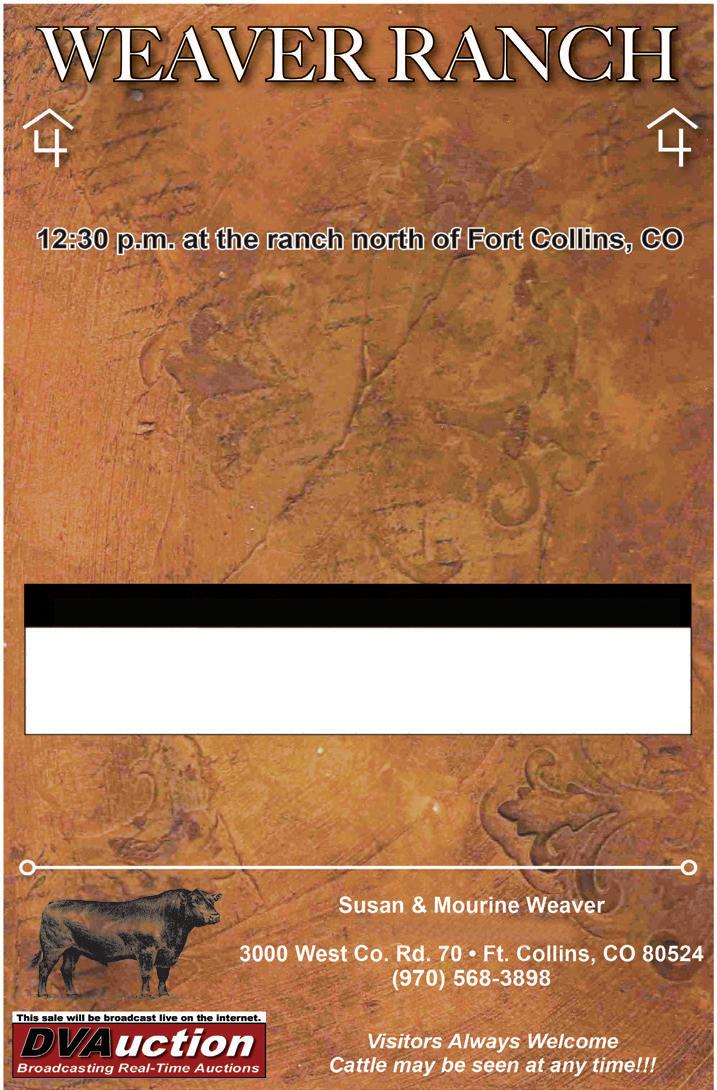




The 10 producers who registered the most Angus beef cattle in the state of New Mexico recorded a total of 1641 Angus with the American Angus Associa tion® during fiscal year 2022, which ended Sept. 30, according to Mark McCully, Asso ciation chief executive officer.
The 10 top recorders in New Mexico are: Bill Gardner, Estancia; Greg Smith, Elida;

Flying W Diamond Ranch, Capitan; Reverse Rocking R Cattle Co, Maxwell; U Bar Ranch, Silver City; Diamond Seven Angus Ranch, Newkirk; Heartstone Angus, Silver City; J-C Angus, Moriarty; Robert or Mitzi Miller, Floyd; A Lazy 6 Ranch, Ribera; Shane or Karla Lee, Portales.
Angus breeders across the nation in 2022 registered 304,822 head of Angus cattle. “Our Association members lead the industry in adopting new technology and breeding the most problem-free cattle for their cus tomers,” McCully said. “Cattlemen across the country continue to find registered Angus seedstock are the most profitable option for their herd.” ▫

Agroup of 24 U.S. organizations repre senting a variety of agricultural companies — including meat proces sors — want the U.S. Trade Representative (USTR) to reject a petition from members of Congress seeking an investigation into fresh produce from Mexico. Specifically, they have voiced concerns about potential retaliation that could hurt the U.S. meat industry.
In a letter to USTR Ambassador Kather ine Tai, the group claims that the petition for a Section 301 investigation would “under mine our relationship with one of our largest agricultural trading partners and create a substantial risk of retaliatory actions.”
The petition filed last month by U.S. Senator Marco Rubio (D-FL) and U.S. Rep resentative Al Lawson (D-FL) seeks a Section 301 probe of fruit and vegetable imports from Mexico in order to “secure trade relief for Florida (produce) growers,” among others.
The letter to reject the petition’s request was signed by such organizations as the Meat Import Council of America, the National Pork Producers Council (NPPC) and the North American Meat Institute (NAMI).
The letter also asked USTR to work instead to open new markets for U.S. ag exports “in the Indo-Pacific, Taiwan and elsewhere.” ▫


oral
the U.S. Supreme Court in NPPC v. Ross, either in support of or chal lenging the constitutionality of California’s
12 law.
feel confident that we are on the right side of history and that Proposition 12’s stan dards are consistent with broadly shared values that unite Americans of many persua sions,” wrote Humane Society of the U.S. CEO Kitty Block in a blog post on the orga nization’s website, co-authored with Sara Amundson, president of the Humane Society Legislative Fund. Jeffrey A. Lamken, an attorney for HSUS, argued before the Court in support of the state law.
On the other hand, “After today, we’ll win this deal,” Terry Wolters, president of the National Pork Producers Council, said at a media briefing Tuesday afternoon. “We feel very hopeful after today’s arguments” chal lenging the law, Travis Cushman, the American Farm Bureau Federation’s deputy general counsel, litigation and public policy, told the gathering. AFBF is a plaintiff in the case along with NPPC.
The arguments went on for just over two hours in the morning, with NPPC and AFBF arguing that the 2018 proposition approved by California voters violates the Constitu tion’s Commerce Clause from having one
state issue production mandates to others. Prop 12 bans the sale of pork in the state if the pigs were raised in breeding pens that don’t let them turn around.
The NPPC said if Prop 12 were upheld, it could lead to inspectors from California dictating the rules to producers in the other 49 states, not to mention Canada and Mexico, according to Michael Formica, the NPPC’s chief legal strategist.
Close questioning by all the justices in attendance sought clarity on how upholding, or striking down, California’s law would have a ripple effect on other interstate com merce, such as sales of vehicles made in one state that have to meet another state’s emis sions standards. The justices also indicated interest in the role of morals in the case; many Prop 12 supporters believe most exist ing swine production systems are inhumane, a position the industry rejects.
Lawyers for both sides acknowledged, in response to questions, that however the Court decides, Congress could render the decision moot by enacting federation legis lation that, for example standardized animal handling regulations nationwide.
While the case does not directly impact cattle producers, the National Cattlemen’s Beef Association reaffirmed its support for the NPPC’s position.
The Supreme Court is expected to rule in the case sometime in the first half of 2023. ▫
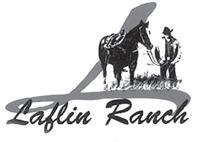
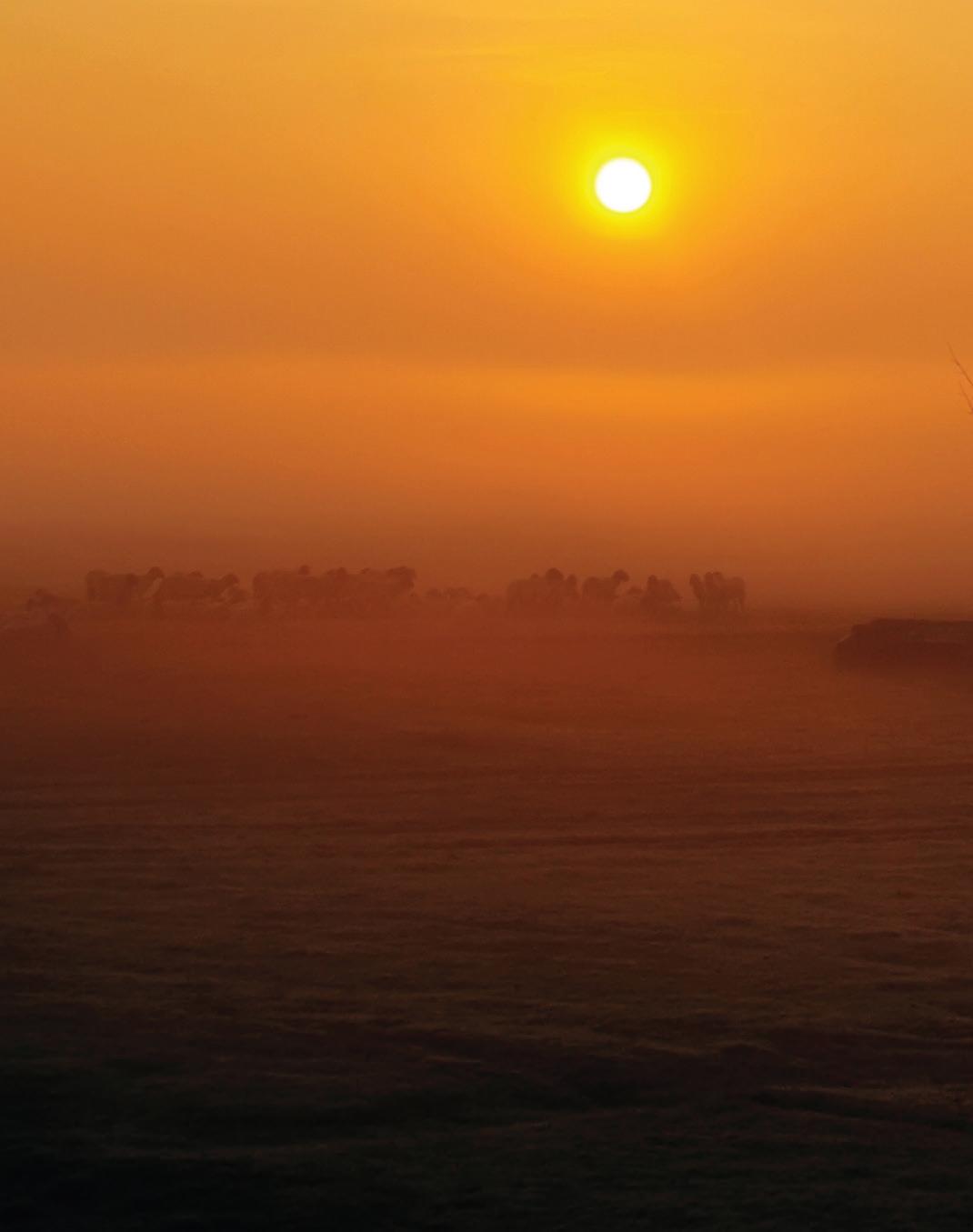
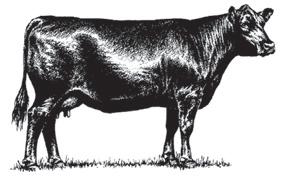



to 7 minutes, stirring frequently. If necessary, re-spray skillet with cooking spray. Add bell pepper; continue cooking 3 to 5 minutes or until onions are browned and bell pepper is crisp-tender, stirring frequently. Stir in sliced basil, pine nuts, 1 tablespoon vinegar and black pepper. Season with salt, as desired; keep warm.
Step 2

Meanwhile combine molasses, Worces tershire sauce and 1 tablespoon vinegar in small bowl.
Step 3
Heat second large nonstick skillet over medium heat until hot. Season steaks with black pepper. Place steaks in pan; cook 9 to 11 minutes (ranch steaks, 8 to 11 minutes) for medium rare (145°F) to medium (160°F) doneness, turning occasionally and brushing with molasses mixture during last 3 to 4 minutes of cooking.
Step 4

Season steaks with salt, as desired; serve with caramelized onions. Garnish with basil sprigs, if desired.

tablespoons pine nuts
tablespoon balsamic vinegar
teaspoon pepper
1

To prepare Caramelized Onions, spray medium nonstick skillet with nonstick cooking spray. Heat over medium to medi um-high heat until hot. Add onion; cook 5
Nutrition information per serving: 405 Calories; 162 Calories from fat; 18g Total Fat (6 g Saturated Fat; 7 g Monounsaturated Fat;) 119 mg Cholesterol; 186 mg Sodium; 24 g Total Carbohydrate; 1.7 g Dietary Fiber; 36 g Protein; 8.6 mg Iron; 3.7 mg NE Niacin; 0.6 mg Vitamin B6; 2.8 mcg Vitamin B12; 12.1 mg Zinc; 33.8 mcg Selenium.
NUTRITION TIP: This recipe is an excellent source of Protein, Iron, Niacin, Vitamin B6, Vitamin B12, Zinc, and Selenium. ▫



If there was one piece of equipment that would improve animal health, pay divi dends in marketing, and help stocking rates, would you invest in it? The simple action of adding scales and utilizing weight information can return big bucks according to industry experts. Weighing cattle can help save and make money, grow a better product, and gain efficiency throughout your herd.
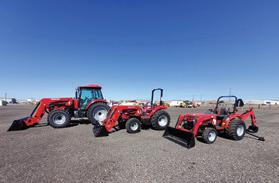
Having the right system allows for accu rate data to be collected while also bringing about productivity and efficiency of the cattle herd, according to Ray Williams from Gallagher Weigh Systems. Whether it be a squeeze chute or an alley way system, either can be efficient. There are four key elements of either weigh system. This includes: the squeeze chute/alleyway platform, load bars, EID reader, and scale head. It is important for each of these elements to be used cor rectly in order for the most accurate results.

Now, the question that still lies is “Why Weigh?” While there are several benefits that come into play, the three main ones for
stocker operators include monitoring animal performance, improving animal health, and forecasting optimum time to sell cattle. Monitoring animal performance is crucial when it comes to how much the cattle are gaining, and this can allow for changes to be made if necessary.

When one gets sick, accurate pharmaceu tical dosage is a huge part of beef quality assurance. It is no surprise that medicine for your herd can be very costly, but it is crucial in the management. Having an accurate body weight will allow each dosage to be precise for each individual calf. This not only is best for the calf, but is also more cost effec tive for the producer.
Lastly, weighing allows for forecasting the optimum time to sell cattle, especially when cattle are contracted to sell for a specific weight. The producer will be able to meet the contracted weight, and not receive penalties for cattle that come in overweight. Williams states that regularly weighing cattle aids in the timely selection of cattle for sale or slaughter and allows cattlemen to make sure penalties will not occur.
When
priate stock rates can be assisted by weighing the herd. There are several traits that can be managed when cattle are weighed. Breed, color, frame, average daily gain, muscling, preconditioning, sex, and vaccinations can be recorded in one sitting when cattle cross the scales, which improves data on the herd as a whole. Another reason to weigh your cows and calves is simply for feed. It is esti mated that fertilizer and feed are the biggest cost to the producer. With accurate weights on hand, over feeding the herd is decreased tremendously which helps save money in the long run. Williams indicated that weighing mature cows gives producers the opportu nity to fine tune management strategies among the herd.
The improvement of stocking rate can be easily fine tuned with weighing cattle. When “guessing” how much the cows weigh, being over or under the actual weight can hurt you immensely. Whether it be overgrazing or understocking the land, the producer will be cut one way or another. An accurate account of pounds per acre makes management deci sions easier when it comes to stocking rates. Inaccurate weights makes it extremely diffi cult to know if the pasture is able to efficiently




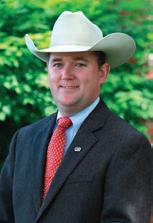

support the herd.
In the long run, weighing your cattle can pay off in more ways than one. Whether its raising the most profitable
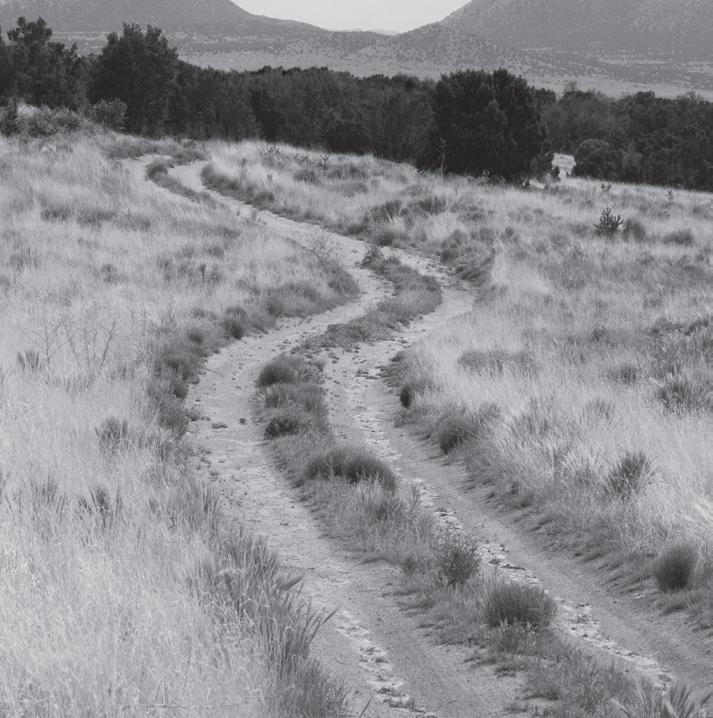
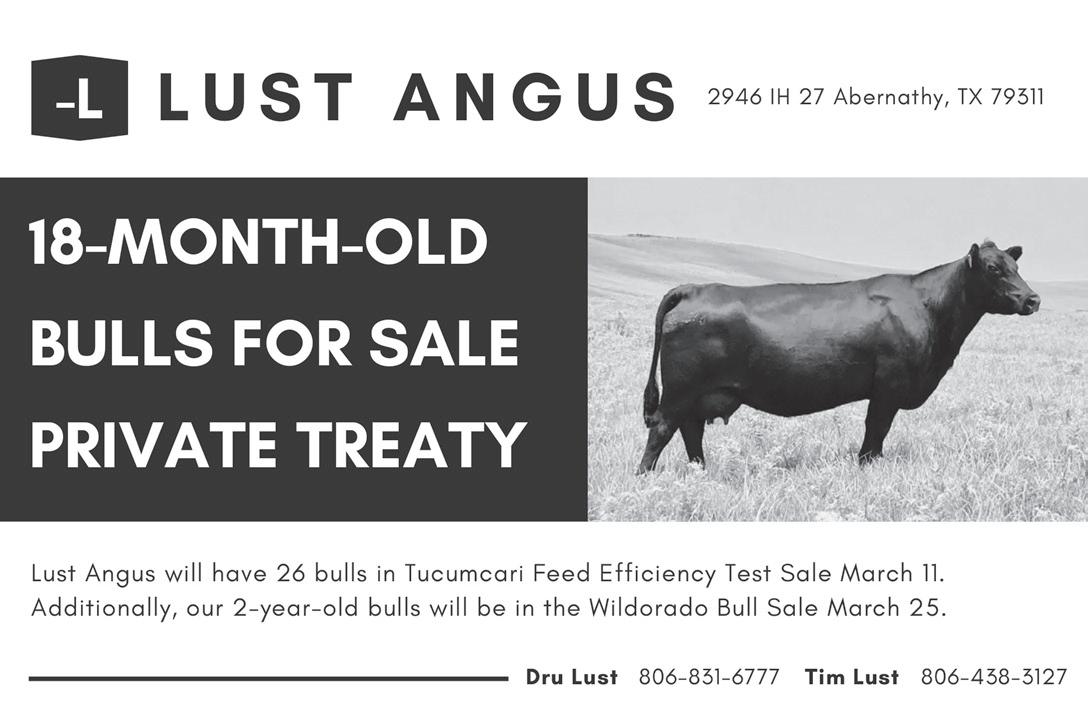
or gaining accurate data on your mature
the practice of weighing will help in return ing more for your bottom line.


Producers hauling
The U.S. Department of Labor announced in early October a final rule to the H-2A visa program, which allows employers to use foreign agricultural workers to address temporary labor needs.
Among other things, the new rule improves safety and health protections for workers housed in rental or pubic facilities, and mod ernizes the means for determining the prevailing wage, according to the DOL.
“By improving H-2A program regulations, we are strengthening work protections, meeting our core mission,” Secretary of Labor Marty Walsh said in a statement.
Hauling
answered 24 hours a day, 7 days a week.
20 Bar Livestock Highway #90 at NM #3 – East side of highway. Receiving cattle for transport 2nd & 4th Sunday of each month. Truck leaves Lordsburg on Sunday at 2:00 p.m. (MST) Smiley Wooton, 575/622-5580 office, 575/6266253 cell.
Jason Heritage is now receiving cattle every Sunday. For information to unload contact Jason Heritage 575/8409544 or Smiley Wooton 575/626-6253. NO PRIOR PERMITS REQUIRED. Trucks leave Sunday at 4:00 p.m. (CST)
800 West 2nd, 5 blocks west of Courthouse. Bob Kinford, 432/284-1553. Trucks leave 1st & 3rd Sunday at 3:00 p.m. (CST)
Two blocks east and one block south of Tillery Chevrolet. Smiley Wooton 575/622-5580 office, 575/626-6253 mobile. Trucks leave Sunday at 3:00 p.m. (MST)
River Cattle Co. Nine miles east of San Antonio on U.S. 380. Receiving cattle for transport 2nd & 4th Sunday of each month. Michael Taylor 575/418-7398. Trucks leave Sunday at 3:00 p.m. (MST)
The new rule does not address calls to expand the number of workers allowed, with the DOL indicating that would have to be determined by Congress.
The National Pork Producers Council (NPPC) has longed pushed for an expansion of the H-2A visa program to include year-round agricultural workers, including packing plant employees. The visa had only allowed for temporary, seasonal farm workers.
Amid labor shortages throughout the meat industry, the NPPC has also advocated for providing a pathway to legal status for for eign-born agricultural workers already in the U.S.
“We do not plan on issuing a statement at this time,” an NPPC spokesperson told meatingplace in an email.
The rule will be published in the federal register becomes effective on November 14.
Purina Mills and the New Mexico Cattle Growers’ Association Young Cattlemen’s Leadership Committee (YCLC) is proud to announce there will be two Purina Mills $1,000 scholarships and two YCLC $500 scholarships presented during the 2022 Joint Stockmen’s Convention.
“Enabling agricultural students to obtain education they may not otherwise have access to keeps our industry strong,” said Bronson Corn, President-Elect NMCGA. “We appreciate the coordinated effort between Purina Mills and our Allied Industries Committee in making these funds available to deserving students.
The two $1,000 Purina Mills scholarships will be awarded to a New Mexico student who is a member of the NMCGA, the New Mexico Junior Cattle Growers’ Association, or the child of an NMCGA member. Graduating high school seniors, and college fresh men, sophomores and juniors in good academic standing are eligible to apply for the award. In addition, the Young Cattlemen’s Leadership
Allied Industries Committee will also be pre
scholarships – one to a high school senior and one to a continuing college student.
ture.org.




Plant-based meat-substitute manufac turer Beyond Meat has announced a new round of layoffs in the wake of declining sales, according to news reports.
Several top executives have also left the company, including Chief Operating Officer Doug Ramsey, who was suspended in Sep tember after reportedly biting a man’s nose and threatening that he would kill him.
The new cuts come only two months after the company laid off about 40 of its 1,100 workers in August, Bloomberg reported. The news outlet added it is “unclear” how many people will be let go in this new round of layoffs.
“The onetime Wall Street darling faces mounting challenges as rising inflation drives consumers toward less-expensive animal proteins and competition intensifies,” Bloomberg reported.
“Major fast-food partnerships have failed to gain traction, and the company has strug gled to ramp up production.”
The most notable executive to leave the company was Ramsey, who was suspended in September after he was arrested for allegedly biting a man’s nose after a college football game in Arkansas, CNBC News reported.
Ramsey reportedly assaulted a driver in a parking garage in Fayetville, Arkansas, after the driver hit the front tire of Ramsey’s car.
Ramsey then allegedly punched through the back windshield of the other driver’s Subaru, punched and bit the driver, “ripping the flesh on the tip of the nose,” and threat ened to kill him, according to what the victim and a witness told the police, CNBC reported.
Beyond Meat then announced Ramsey was leaving the company as of October 14, according to a regulatory filing from the company.
Along with Ramsey, the company also announced that the vice president of its financial planning and analysis of investor relations, Lubi Kutua, would be taking over as the chief financial officer, the Wall Street Journal reported.
This comes after Philip Hardin’s step down from the role, the regulatory filing revealed.
The company is also eliminating the posi tion held by Deanne Jurgens, the global chief growth officer and president of North America, the Journal reported.
The layoffs and firings are part of Beyond Meat’s plan to cut costs by reducing its total employment by about 20 percent, the Journal added.
The company announced that it is hoping that planned cutbacks will save about $39 million in operational costs.
However, even with these measures taken, the company is still fighting falling stock prices.
The Wall Street Journal reported that Beyond Meat’s stock fell about 4.8 percent on the morning of October 14.
Overall, Bloomberg reported that meat alternative products have been struggling in the market.

In the 12 months since October 2021, the sales of refrigerated meat alternatives plum meted about 11 percent, Bloomberg reported.
“Beyond Meat-branded sausage substi tutes fell 19 percent in the period, while the company’s plant-based patties dropped 27 percent,” Bloomberg added. ▫
Following a recent change in founder Pat Brown’s role within the company, Impossible Foods is reorganizing its structure, dismissing about six percent of its 800-person workforce.
As reported by Bloomberg, CEO Peter McGuinness sent a memo to employees saying the reorganization has been in the works for two months, and that the new structure has “created clear supply-and-de mand functions” and is focused on research and development.
“We’ve made the very difficult decision to eliminate certain roles that have become
redundant to others in the organization or that are no longer aligned with our core busi ness priorities,” McGuinness said. Affected workers were to be notified.
Severed employees, according to the memo, will receive at least 12 weeks of salary plus an additional week for each year of tenure at Impossible. They’ll also receive a one-year extension for exercising stock options at the company.
While Impossible has said its experienc ing sales growth, the plant-based meat sector as a whole has cooled recently due in large part to high inflation and the cost of plantbased foods compared to traditional meat.
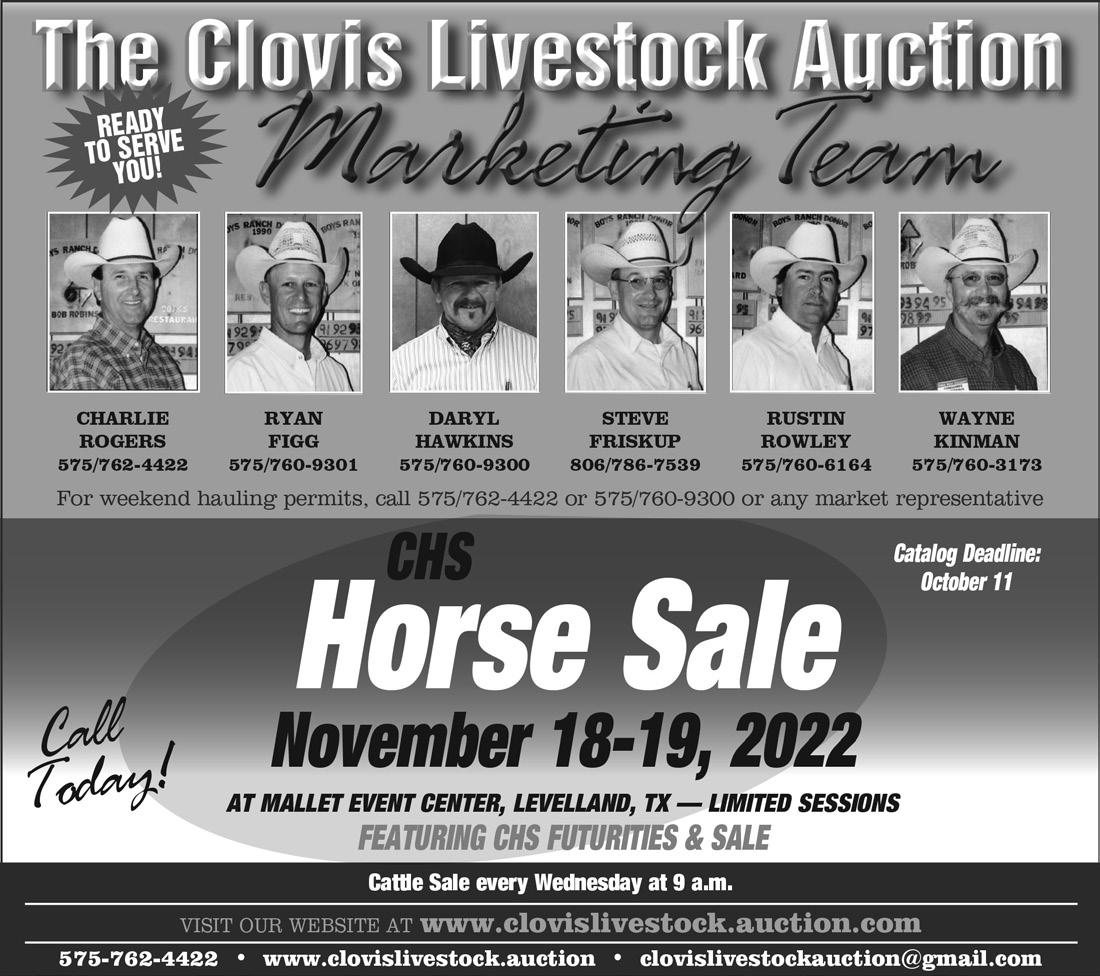
As growth in the plant-based meat space has slowed, many companies have been re-configuring their business plans. Recently JBS shuttered Planterra, and Motif Food
works and Maple Leaf Foods’ Greenleaf Foods have both recently cut employees.
Brown stepped down as CEO in March, after leading the company for 11 years. McGuinness took over as CEO from yogurt maker Chobani Inc., where he had been chief operating officer. ▫
This article has been tough to write as it’s been difficult to nail down facts. In other words, private citizens, and gov ernment sources agree on nothing.
According to the latest statistics private citizens would prove to be right about 85 percent of the time because they are living it, so I will go with them. I will try and explain to you what happened when DeSantis Air lines landed on Martha’s Vineyard with 50 illegal aliens from Venezuela and Peru.
My guess is that Florida Governor DeSan tis was trying hard to help those ranchers up there as he thought they were short on help, and this would help the illegals get good paying jobs at the same time.
The information that I got, is that there are now 2,280 head of cattle on 38 farms on

the island known as Martha’s Vineyard. It is located 7 miles off the coast of Massachusetts.
That’s about 60 head per farm which probably requires a retired cowboy to main tain each ranch of 60 head. He would probably get bored with that, but their cowboys are also required to help give tours on these ranches.

I am certain the job requires a cowboy with patience to answer questions from igno rant tourists. Tell me if I’m wrong, but I have never seen one of those. The good thing about this gig is that the average income there is $77,370 per year.

That’s a pretty good wage for a retired cowboy. The average price of a home there is $2,800,000. Martha’s Vineyard is the third largest island on the east coast at 97 square miles and a very expensive place to live.
I am also aware there are lots of other farm animals on the island as well, such as sheep, alpacas, chickens, and so on. You know a retired cowboy would never take care of those other animals so don’t those illegal immigrants sound perfect for that?
Besides, cowboys are used to working with illegals as they have for years, and most speak pretty good Spanish slang. This is a great deal for those folks that entered the
United States illegally.
I’m sure they would get the $77,370 per year plus the 2,350 square foot house. It looks to me like the genius of Governor DeSantis was putting them in a place where they could prosper.
After all that, I just got word that the cit izens of Martha’s Vineyard threw them out. Dukes County Massachusetts should be ashamed of themselves. They shipped the illegals off the island to the Joint Base Camp at Cape Cod.
Stop and think about it. There are 17,000 year-round residents. There are 17,800 homes, 63 percent of homes are owned by seasonal residents, meaning they are only there for the summer.
Get this, during the summer the island population explodes to 200,000. Are you telling me that they could not accommodate 50 illegal immigrants?
Obviously, the residents of Martha’s Vineyard are not very friendly to you unless you can spend some bucks with them. Now don’t quote me on this, but I heard that Pres ident Obama has an extra empty house on Martha’s Vineyard.
Heck that could have held at least 10 of them right there.
I remember him saying during his presi dential campaign that he wanted to be President to all the people. I would have expected more from the former President.
It sounded like Governor DeSantis had a brilliant idea to help everyone involved including residents, ranchers, cowboys, and illegals. Imagine that!
This just in, according to the New York Times the 50 illegals are trying to sue Gov ernor DeSantis and the state of Florida. It sounds to me like they ought to be suing Martha’s Vineyard. ▫
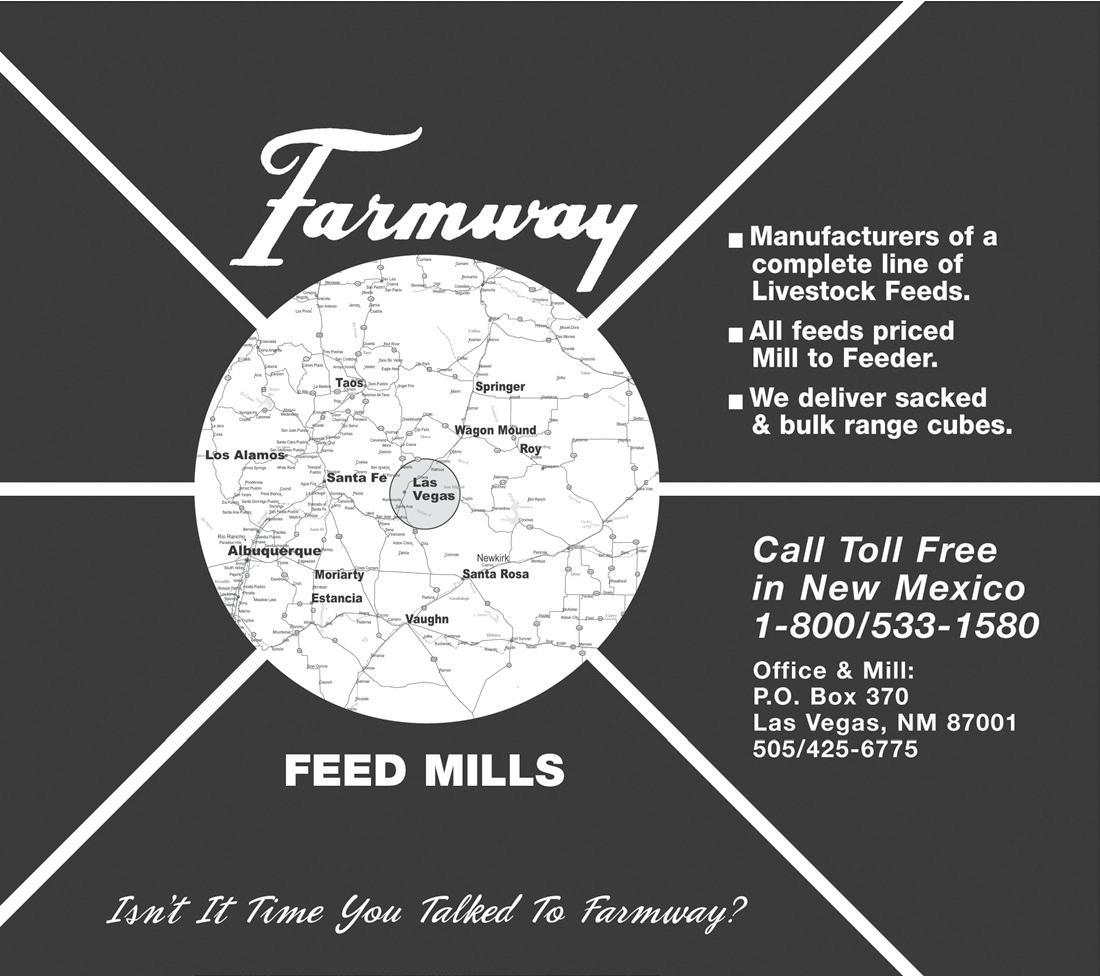

The New Mexico Department of Agri culture(NMDA) Las Cruces – has announced that $1.1 million in funding has been awarded to 51 projects through the state’s Healthy Soil Program for fiscal year 2023. Awardees include 38 individual appli cants and 13 eligible entities.
Enacted by Gov. Michelle Lujan Grisham in 2019, the Healthy Soil Act aims to promote and support farming and ranching systems and other forms of land management that increase soil organic matter, aggregate sta bility, microbiology and water retention to improve the state’s soil health, yield and profitability. In the program’s pilot year –fiscal year 2020 – NMDA awarded funding to 26 on-the-ground projects in the amount of $178,000. NMDA awarded funding to 19 on-the-ground projects in the amount of $237,000 in fiscal year 2021 and 17 on-the-
ground projects in the amount of $185,000 in fiscal year 2022.
“The projects funded by this program will greatly benefit New Mexico agriculture as a whole,” said New Mexico Agriculture Secre tary Jeff Witte. “We have doubled the number of projects funded in the past, and it’s exciting to learn about all of the awardees’ innovative approaches to improve soil health.”
Individual applicants include farmers, ranchers and other land managers, as well as businesses and nonprofits engaged in farming, ranching or other forms of land management. Eligible entities are defined in the 2019 Healthy Soil Act as “local govern mental [entities] with proven land management capacity to support healthy soil” and include pueblos, tribes, and nations; land grants; acequias; soil and water conser vation districts (SWCDs); and New Mexico State University’s (NMSU) Cooperative Extension Service.
One of the Individual Applicants, Regen eration Farm and Toots’ Shady Grove Orchard, will implement an intra-city project, planting cover crops and creating pollinator habitat borders on three acres of an overworked plot made up of a fallow field and an orchard.
Dair Obenshain, farm manager of Regen eration Farm and Toots’ Shady Grove Orchard, hopes to regenerate healthy soil microbial and plant communities with funding from the Healthy Soil Program.
“When I heard about the Healthy Soil Program grant, I was amazed and thrilled,” said Obenshain. Here were people offering support for just what I was hoping to do for our family land! The lovely thing about the grant is that the program specifically sup ports the practices that are hard to find the wherewithal and the faith to do: the cover crops, pollinators and other practices that don’t immediately result in a cash return. Even if farmers are committed to rebuilding their soil, it’s hard to commit cash and valu able field space to such a long-term investment.
“This year, everything that we plant with Healthy Soil Program support will be returned to the soil. Rebuilding the soil can be a slow process, but hopefully by jump starting things with compost and carefully tending the process – keeping it all covered and moist – we will be on our way to con verting these fallow, barren fields into oases, with, well, something for everyone: a healthy community below the soil for the roots, microbes and earthworms, and a healthy community above the soil line of plants, pol linators, birds, lizards, toads, snakes, livestock and people! With time, I hope that Regeneration Farm will always have areas that are devoted to rebuilding the soil, rotat ing with areas that provide sustenance for all of us.”
Included in the Eligible Entities projects are the Pueblo of Santa Ana and Middle Rio Grande Conservancy District. The Pueblo of Santa Ana plans to treat 9-and-a-half acres of degraded forest by composting onsite with woods chips and reseeding with native species. Nathan Schroeder, Pueblo of Santa Ana Restoration Division Manager, said the project is a proof of concept.
“We are evaluating composting mastica tion chips at the treatment site and using that created compost in the revegetation efforts of the Pueblo’s bosque,” said Schroeder. “My colleagues and I are interested in the final result. A treatment prescription of this type could change the way we treat dead and downed fuels in the future.”
The Middle Rio Grande Conservancy District will work with the New Mexico Department of Game and Fish to develop short and long-term soil health strategies that help farmers and irrigators manage salt-affected soils in the Middle Rio Grande.
Gabriella Coughlin, an agronomist with
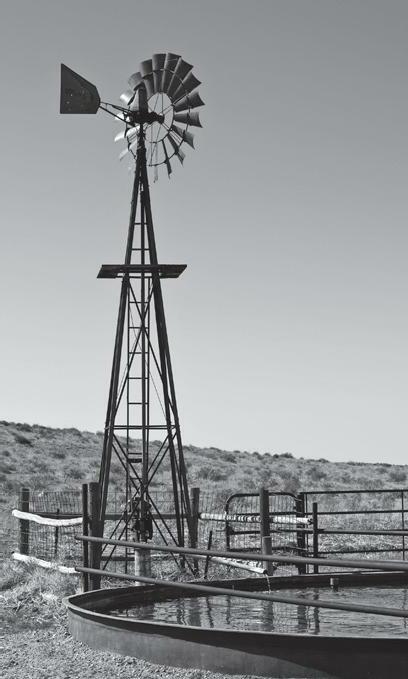
the Middle Rio Grande Conservancy Dis trict, said the project would achieve the following: refine irrigation water manage ment practices through soil-moisture monitoring, analyze soil organic matter interactions of different cover crop residues and amendments, evaluate reduced-till and cover crop termination techniques and assess performance of salt and drought-tol erant crop species and rotations.
“Through this project, we also look forward to connecting how past indigenous and Hispanic communities lived on and around these salt-affected soil landscapes and what we might glean from their use and management of these lands,” said Coughlin. “Salt played an important role in New Mexi co’s history as it helped support several trade routes and missions during the early 17th and 18th centuries.
“During our landowner workshops, we will learn about the rich salt history of the area from regional archaeologists and histo rians. Managing for salts during our current drought conditions is a difficult job. By inte grating a historical perspective on soil management, we hope to instill a more pro found appreciation for what it takes to grow and sustain life in these sometimes hostile, arid environments.”
Secretary Witte said drought affects all agriculturalists in the state, and he encour ages more people to apply for Healthy Soil Program funding when future grant appli cation periods open.
“Healthy soil is more resilient to drought, and I hope more farmers, ranchers, dairy producers and other land managers are inspired to apply for this funding in the future,” he said.
Grant funding from the Healthy Soil Program may be used for on-the-ground projects in New Mexico that focus on one or more of five basic soil health principles: keeping the soil covered; minimizing soil disturbance on cropland; maximizing bio diversity; maintaining a living root; and integrating animals into land management.
For more information and to subscribe to program updates, visit the NMDA Healthy Soil Program web page at: https://nmdeptag. nmsu.edu/healthy-soil-program. html. ▫
JANUARY

FEBRUARY
Wildlife; Gelbvieh;
Stockmen’s
Beefmasters; Texas
Gertrudis
MAY — News of the
JUNE — Sheepman of the Year

JULY — Directory of Agriculture

AUGUST — The Horse Industry
SEPTEMBER — Fairs Across the SW; Charolais OCTOBER — Hereford; NM State Fair Results
NOVEMBER — Cattleman of the Year; Angus; Brangus; Red Angus: Joint Stockmen’s Convention Preview

DECEMBER
Please call Colten Grau to arrange a visit.
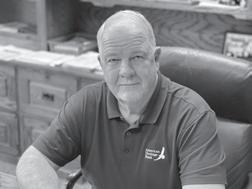
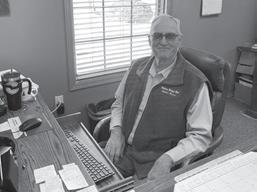

working hard for our ag community
he’s eager to go to work for you!
us a chance to compete for your land and
Colten will attend the NMCGA Convention, Dec. 14-17. He hopes to see you there.
linkedin.com/american-heritage-bank-nm facebook.com/americanheritagebanknm www.ahbnm.com

“Contrary to the claims of proponents of the Green New Deal and Net Zero, fossil fuels are the greenest fuels.
First, uniquely among energy sources, fossil fuel use emits CO2, which is the ulti mate source of the elemental building block, carbon, found in all carbon-based life, i.e., almost all life on Earth.”
These two sentences, which run counter to everything you may have heard about the “climate crisis” said to be plaguing the planet, introduce a provocative new study by Indur Goklany, Ph. D. A widely published author and longtime researcher into a variety of scientific fields, Goklany strips carbon dioxide of its status as an environmental villain as decreed by modern-day climate orthodoxy. He also shows that rising atmo spheric levels of CO 2 , including those produced by fossil fuels, are highly beneficial to biodiversity.
Goklany’s study, “Fossil Fuels are the Greenest Energy Sources,” was published by the CO2 Coalition, an Arlington, Va.-based organization dedicated to enlightening the public on the role carbon dioxide plays in biodiversity.
“The increased amplitude of the seasonal cycle in atmospheric CO2 and satellite-borne instrumentation to measure solar-induced chlorophyll fluorescence from plants provide direct evidence that global photosynthetic activity (or Gross Primary Production, GPP, a measure of the change in global biomass) increased over the past several decades,” Goklany writes. “Observed variations of atmospheric CO2 over the past two centuries are consistent with increased primary pro ductivity. Other satellite studies also show that the earth has been greening continually in recent decades.”
Higher CO 2 Levels, Higher Food Production
“Second, fossil fuel-dependent technolo gies have increased agricultural yields directly or indirectly by at least 167 percent. This increase in agricultural productivity is due to the use of fossil-fuel-dependent tech nologies, specifically, nitrogen fertilizers, pesticides, and carbon dioxide fertilization resulting from fossil fuel emissions,” Goklany
points out. “This has enabled human beings to meet their demand for food using less cropland, which then spares land for the rest of nature. Thus, in the absence of fossil fuels, at least 167 percent of more land would have to be cultivated to maintain global food pro duction at the current level. That would be the equivalent to increasing current crop land from 12.2 percent of global land area (GLA) to 32.7 percent. But diversion of habitat (land) to agriculture is already deemed to be the greatest threat to global biodiversity. Fossil fuels have, therefore, increased productivity of already converted habitat, they have forestalled conversion of at least an additional 20.4 percent of GLA
“Consequently, the world sustains 10 times more people today (7.79 billion) than at the start of the Industrial Revolution (786 million in 1750), while supporting more biomass,” Goklany adds.
Restricting, much less lowering, atmo spheric levels of CO 2 through politically fashionable “decarbonization” could jeopar dize the world’s food supply even more than Goklany forecasts. As noted many years ago by Dennis Avery (1936-2020), longtime Director of Global Food Studies at the Hudson Institute, most of the world’s best cropland is already under cultivation. What is left is marginal, at best. By reducing fossil fuels’ contribution to atmospheric CO 2 (plant food), agricultural productivity on the best cropland would decline, forcing farmers the world over to put less-fertile soil under cultivation, with the resulting crops also suffering from lack of CO2. And the addi tional land brought under cultivation would no longer be available to wildlife.
When comparing the impacts of various energy options on habitat, “we should con sider the physical footprint needed to produce an equivalent amount of energy via each option (solar, wind, and various fossil fuels).” Goklany notes. “Second, for wind and solar to be viable substitutes for fossil fuels, they should be coupled with batteries to solve their intermittency problem which requires substantial amounts of metals and other materials that must be mined, smelted, and refined which necessarily would disturb the land.”
Goklany cites a 2016 study based on sat ellite data that found that from 1982 – 2009, 25 – 50 percent of global vegetated area had become greener while 4 percent had become browner. “They attributed 70 percent of the greening to CO2 fertilization from emissions from fossil fuel combustion (which increases
photosynthesis and water use efficiency, (WEU) of most vegetation, 9 percent to nitrogen deposition) also from the use of fossil-fuel derived fertilizers, 8 percent to climate change, and 4 percent to land use change. The first three, responsible cumula tively for 87 percent of the greening, are related to the use of fossil fuels,” Goklany points out.




By contrast, intermittent and land-inten sive wind and solar power contribute nothing to agricultural productivity while leaving behind an environmental footprint that dwarfs that of fossil fuels. Goklany cites a 2022 International Energy Agency report that notes “that a typical electric vehicle requires six times the mineral inputs of a conventional car and an onshore wind plant requires nine time more mineral resources than a natural gas-fired power plant, while offshore wind plants requite fifteen times as much as natural gas.”
The war on atmospheric CO2 is, among other things, a war on global food production.
Bonner R. Cohen, Ph.D. (bcohen@nationalcenter.org) is a senior fellow at the National Center for Public Policy Research. ▫
Animal Wellness Action and the Center for A Humane Economy are offering a reward of up to $5,000 for information leading to the identifica tion, arrest and conviction of the person or persons responsible for shooting and killing at least 35 wild horses and seri ously injuring at least four others in the Apache-Sitgreaves National Forest near Alpine, Arizona, on or about Monday, October 3, 2022. The reward is in addition to an offer of $10,000 from American Wild Horse Campaign and another $10,000 from the Salt River Wild Horse Management Group.
The Case: Eyewitness reports give the following account: According to volun teers with the Alpine Wild Horse Advocates, the bodies of 15 horses have been found shot dead, with some killed by gunshots to the body and between the

eyes. Four more horses were found with severe bullet wounds, including to the face and abdomen. Witnesses are report ing that at least 15 more members of the herd are missing and feared injured or killed. The horses were members of the Alpine herd, which has been targeted for removal by the Forest Service, which has already trapped and captured 20 of the horses who, due to their unprotected status, are at risk of being sold to kill buyers for slaughter in Mexican or Cana dian meat plants.
The Investigation: The case is being investigated by the State Veterinarian and Arizona Department of Agriculture, which are conducting necropsies on the dead horses. Updates on the case can be found on the Facebook page for the Alpine Wild Horse Advocates. Organizers have set a goal of a reward fund of at least $40,000. ▫

Arule aimed at protecting resources with cultural and historical signifi cance on state lands — following what Indigenous advocates have described as decades of harmful intrusion on their ances tral sites — will go into effect December 1.
The State Land Office’s new rule will require anyone planning a soil-disturbing project in the agency’s jurisdiction to conduct an archaeological survey to ensure the work won’t damage what could be deemed a cultural property.
Fossil fuel extraction, mining, agriculture and other industries that use state lands will be affected when it comes to activities such as drilling wells, laying pipelines, excavating ore and building roads.
When State Land Commissioner Stepha nie Garcia Richard first proposed the rule last year, she said it was important to require the surveys, rather than simply recommend
ing them, as her predecessor had done.
“The previous approach to cultural prop erties on trust lands was, ‘If you break it, you buy it,’ and that simply isn’t good enough,” Garcia Richard said in a statement. “Cultural properties found on state trust lands are very much a part of New Mexico’s story, and it is my duty to protect these resources as much as the land itself.”
The rule will give her staff the tools and authority to ensure parcels are thoroughly vetted for cultural properties to avoid poten tial harm, which could be irreparable, she said.
The input her agency received from tribes and pueblos was essential in crafting the rule, she added.
Cultural properties can be structures, sites, objects or resources having historic, archaeological, scientific, architectural or some other significance, according to the agency’s webpage.
They include properties eligible for a state register or the National Register of Historic Places.
Groups representing the state’s fossil fuel and agricultural industries had expressed some misgivings about the rule.
The proposed rule initially was murky on whether replacing or repairing infrastruc
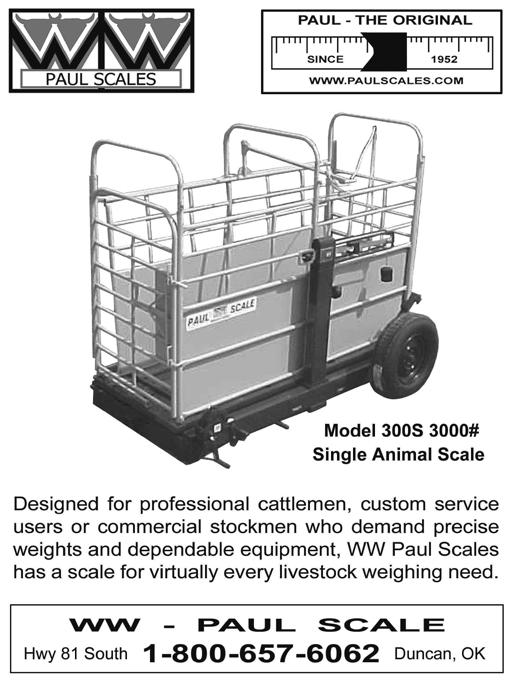
ture, such as a pipeline, would require an archaeological survey, but the final version makes clear the rule would not apply to upgrades or repairs of existing infrastruc ture, said Loren Patterson, president of the New Mexico Cattle Growers’ Association.
“Our question always was can we maintain what already exists,” Patterson said, “so we can maintain our business and still protect those cultural areas that are unknown yet.”
It wouldn’t have been reasonable to penal ize ranchers for repairing infrastructure they inherited, Patterson said. He commended the Land Office for working with the asso ciation to address their concerns.
As for ranchers having to do a survey if they extend a fence or water pipe, Patterson said: “It’s something we have to live with, but it’s something we can swallow.”
In a statement, the New Mexico Oil & Gas Association said the rule may not be a major change from what the industry has been doing, adding it looks forward to working with the State Land Office.
“The oil and gas industry in New Mexico has been conducting archaeological investi gations prior to surface disturbances for many years in order to protect significant historical resources. This new rule by the State Land Office seems to be in line with
protocols that have been in place on other lands where oil and gas development oppor tunities exist,” association spokesman Joe Vigil said.
Officials with the Independent Petroleum Association of New Mexico did not respond to a request for comment.


Indigenous representatives, including with the All Pueblo Council of Governors, who had expressed strong support for the rule, also couldn’t be reached.
Indigenous leaders complained that care less activity had degraded cultural sites, and that tribes often were powerless to do any thing because the damage occurred on public lands outside their jurisdiction.
The state has identified 11,900 archaeo logical sites on its lands, including ancient Indigenous hunting grounds that date back 13,000 years. Among those sites, it has found 18 that have been damaged.
Anyone who engages in soil-disturbing activity without doing a proper survey must pay for assessing and fixing the damage, according to the rule. The land commis sioner can seek twice the cost of restoring and stabilizing the site, as allowed under state laws protecting cultural properties.
The State Land Office doesn’t have the power to issue fines and instead will seek judgments in court.
If a business willfully damages a cultural site, this action can be deemed criminal and the land commissioner can refer the matter to the state attorney general or a prosecutor. ▫
New Mexico 30 by 30 Advisory Committee announces second public engagement survey
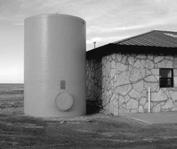
The New Mexico 30 x 30 Advisory Com mittee has announced a public Request for Information (RFI) to gather broad input on the conservation activities most important to New Mexicans. The RFI solicits ideas for a “uniquely New Mexico” vision for conservation.
In August 2021 Governor Michelle Lujan Grisham signed Executive Order 2021-052 (E.O.), Protecting New Mexico’s Lands, Watersheds, Wildlife, and Natural Heritage. The E.O. established the 30 by 30 Advisory Committee, comprised of seven state agen cies and the State Land Office.
Agencies are directed to individually review and utilize existing programs, funding, and authorities to reach the ambi tious conservation targets of conserving at
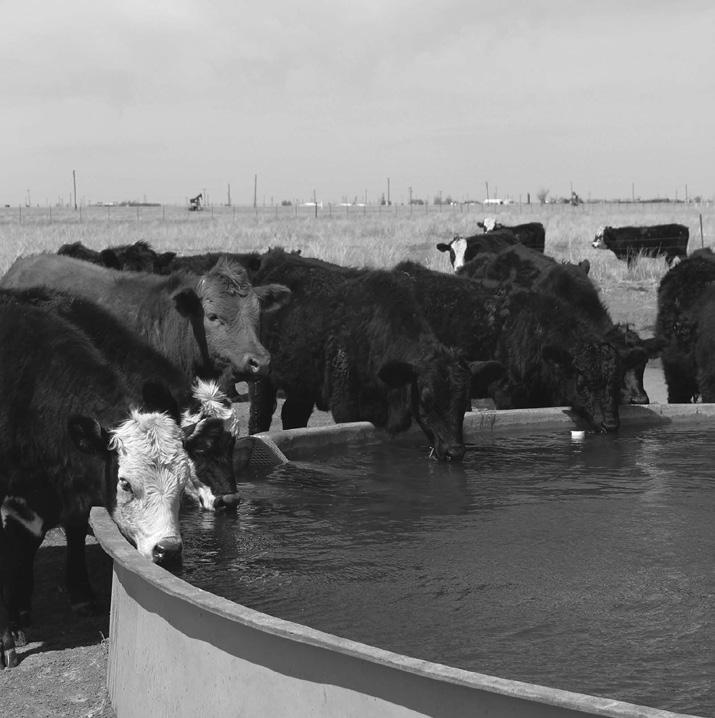
least 30 percent of all lands in New Mexico by 2030, with an additional 20 percent of lands designated as climate stabilization areas. Benefits include supporting our economy, sustaining traditional ways of life, providing drinking water, ensuring food security, preserving biodiversity, and provid ing recreational opportunities for all New Mexicans.
“We welcome public input that will help us identify conserved lands and climate sta bilization areas,” said Committee Chair and Energy, Minerals and Natural Resources Department Secretary Sarah Cottrell Propst. “This year, one of the most important tasks before the 30 by 30 Committee is to develop statewide definitions that will be used to measure progress and help identify conser vation opportunities that make the most sense for New Mexico.”
Following the RFI, the Committee will release draft definitions and hold a separate public comment period before proposing final definitions in its Annual Report, to be released in December.
All are welcome to respond to the RFI by filling out a survey using the following link: https://arcg.is/1TqynW0. Responses will be most helpful if submitted by November 15, 2022. ▫
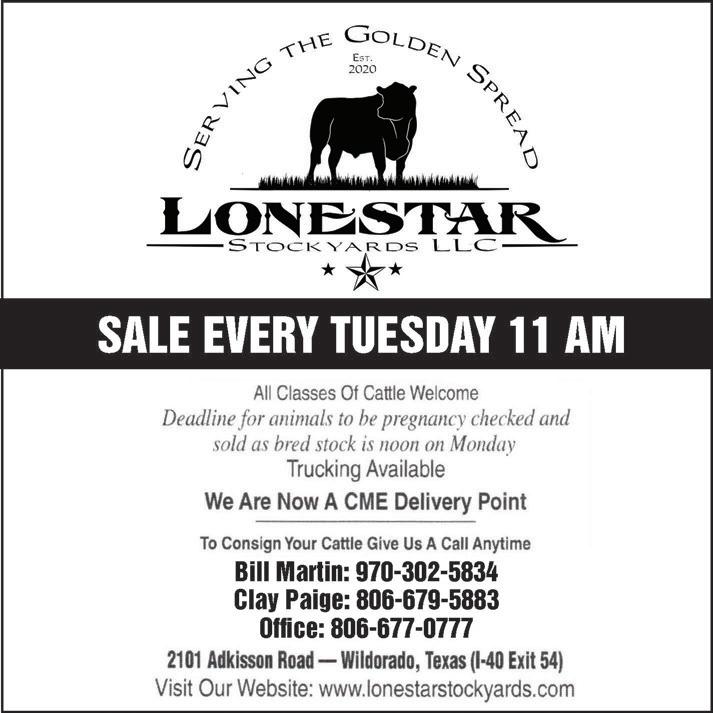 by Meatingplace Editors
by Meatingplace Editors
This item is contributed by Anne-Marie Roerink of 210 Analytics LLC, based on her research.
Life remained home-centric in late summer, with an estimated 78 percent of all meal occasions being prepared at home, according to the September IRI primary shopper survey. While this is down 10 points from the very start of the pandemic, the high inflationary levels are keeping the food dollar largely at retail. Consumers are still ordering restaurant meals but not as often as before, plus they are making changes to what they order with an eye on the check total.
Ї 82 percent of American households bought at least one restaurant meal in September, with the highest restaurant penetration among higher-income households, at 91 percent. Only 69
percent of households who are earning less than $25,000 annually ate at restaurants at least once in September. Restaurant engagement was also lower in the Midwest and among older shoppers.
Ї Takeout continues to be big, with 54 percent having ordered meals to go in September. Half of American households have eaten restaurant food on premise. Additionally, 18 percent have ordered from a restaurant for home delivery (down 2 points from August). Home delivery is much more popular among high-income households as well as the youngest shoppers. For October, 54 percent of consumers expect they will eat out as often, while 24 percent believe they will cut back on restaurant spending further.
Ї When purchasing groceries, 83 percent of consumers shopped in person, down from 85 percent in August. Online shopping was near equally divided between click-and-collect (10 percent) and home delivery (8 percent). Shoppers are not expecting a major
change in their in-person versus online shopping: 4 percent expect they will buy all groceries online in the next few weeks and months, while 68 percent believe they will buy all groceries in person. The estimates among the remaining 28 percent range from expecting to buy most groceries (8 percent) to only some (7 percent) online.
Ї Spending continues to be affected by out-of-stocks, with 38 percent of shoppers mentioning examples of items they meant to buy but were unavailable, ranging from carbonated drinks to milk, canned goods, eggs and chicken. This leads to shoppers substituting, switching stores or abandoning the intended purchases altogether — all affecting sales. At the same time, when items are available for purchase, 40 percent of shoppers stock up on staples out of concern for rising prices or the item being unavailable next time they shop.
Ї In line with reality, price perceptions remain high with 94 percent believing grocery prices are somewhat or a lot more than before. Equally as many are concerned about food inflation. Eight in 10 shoppers (78 percent) are making changes to their shopping choices due to increased prices. The most popular money-saving measures are looking for sales/deals more often (49 percent), cutting back on non-essentials (43 percent), looking for coupons (30 percent) and buying store-brand items more often (28 percent). Despite the high gasoline prices, 15 percent switched some of their shopping to a lower-cost retailer and/or visit multiple stores to get the best deals. This cherry-picking behavior may be driven by 55 percent of consumers reporting that fewer of the items they are looking for are on sale and 44 percent feel that items are not discounted as much as they used to be. ▫
The most influential person in my life was my grandpa and I found it very comforting recently when I was told I turned out to be just like him. After my grandmother rodeo was my grandpa’s favor ite thing, so much so that he started an RCA (forerunner to the PRCA) rodeo in our town and with the proceeds bought land for a big sports park that now bears his name.
My grandpa’s favorite rodeo cowboy was Gene Rambo and he told me countless times that when Gene came to town for the rodeo he stayed in grandpa’s “bunkhouse”, which was just a big building behind grandpa’s house for cowboys to stay.
The one thing I did in my life that most pleased my grandpa was I became friends with Gene. I wrote a story one time about Gene’s setup where he could gather a single animal from the big country he ran in, take it to the corrals and lock the animal in the squeeze all by himself without getting off his horse through the use cowboy engineering that included several ropes and pulleys. I wrote that Gene’s commercial cattle were so good other cattlemen bought his crossbred calves to use as herd bulls.
My grandpa let me know he thought that story was my greatest literary accomplishment.

Another thing my grandpa always told me about Gene was that he always wore a cowboy tuxedo: clean Levis and a white shirt. And he competed across the board, entering every event and I still have the entry sheets to prove it.
Gene competed at a time when other con testants looked like they shopped at Goodwill, picked out the cleanest shirt in the dirty clothes hamper and threw their clothes on with a pitchfork. So my grandpa didn’t know how to take my next rodeo hero, Larry Mahan.

For you youngsters, Larry Mahan was one of the greatest rodeo cowboys to ever straddle a horse. He won six All Around Cowboy awards and two bull riding cham pionships riding in all three rough stock events. “Larry literally could ride anything that wore hair.” But old-timers like grandpa didn’t know how to take Larry because they had preconceived notions of how a cowboy
should look and Larry didn’t look like that. He wore his hair a little longer, looked like he just stepped off a Hollywood film set and wore his pants so tight you could count the change in his pockets. In other words, he was no Gene Rambo. And guys like Gene never spent their days off in western wear stores. I don’t know if Gene Rambo was ever in a “changing room” in his life. Let’s just say that he was a man of few fashion surprises.
But then Gene Rambo never appeared in movies, released a record with Warner Brothers or signed big dollar deals with boot and hat labels that carried his name like Larry did. And there was some resistance amongst old-timers because Larry didn’t exactly come from rodeo country. I mean, for gosh sakes he was born in Salem, Oregon! That’s one of the reasons I liked Larry, he was more living, breathing proof that the far west could produce championship cowboys too.
And did Larry have charisma! I got to see this from a front row seat one time when he and Les Vogt invited my wife and I to a horse camp near my house to sit around a campfire singing old cowboy songs along with an orig inal member of the Sons of the Pioneers.
Now I’m old and I can understand how my grandpa felt about guys like Larry Mahan. I was devastated the first time I saw one of my basketball heroes, Michael Jordan, wearing a diamond earring. And I was just getting used to guys wearing women’s jewelry when along came tattoos. Watching a rodeo recently I saw a “tat” wink at me from the neck of a bull rider and I have a feeling there’s a lot more of those than I’d like to think.
But I’ve learned my lesson. People with style like Larry are “trendsetters” and it’s because of them we now have blunt toed cowboy boots, “formal wear” that includes shirts with advertising embroidered all over them, and cowboys with tattoos of ex-girl friend’s names they’ve tried desperately to have erased. ▫


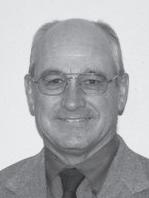
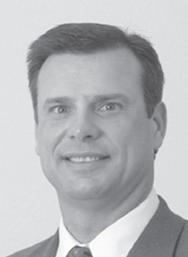

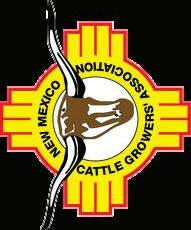





This year has been challenging to say the least, from our record setting wildfires followed shortly by devastating flooding, to direct attacks on our industry with updates to the wolf recovery program and the government slaughter of estray cattle in the Gila Wilderness. Not to mention the 30x30 Land Grab push from the current administration or the threat of our own representatives in D.C. bringing about ‘Recovering Americans Wildlife Act’. If it feels like our industry is under attack, it’s because it is. Appropriately, this year’s convention theme is Transforming Challenges into Opportunity. It seems we are constantly facing challenges of some measure, yet together we stand firm to not only overcome but make our agricultural community better.
We have been working to put together programs and general sessions packed with educational and innovative topics highlighting some of the latest industry enhancements. You are guaranteed to hear and see new ideas that will have a profound and profitable impact on your ranching operation and New Mexico. It is important we continue to protect our traditions and practices in agriculture through the management of legislation, regulatory and policy issues. Putting our best foot forward for the next generation, equipping them with the tools and knowledge to protect their way of life. Together, we can succeed working collectively as natural resource stewards to advance the viability of production agriculture.


Convention presenters will include: Jay Hill – Hill Farms as the key note speaker during Friday Awards Luncheon, the Property Rights General Session features Margaret Byfield with American Stewards of Liberty and Bureau of Land Management State Director Melanie Barnes on Thursday afternoon. Dr. Kate Ziegler will be discussing “Implications of Long-Term Drought on Water Resources” at Cattleman’s College, and Dr. Casey Spackman with Greg Alpers will address the “Implications of Long- Term Drought on Forage Resources.” You can also expect status updates on 2023 Top Legislative Priorities: property taxes, private property rights and wildlife issues. The convention will round out with our 2022 Legacy Awards Dinner and Dance with music by the Coby Carter Band, a young talent that is sure to wear down the soles in your boots!

We look forward to seeing you all in December,
Vander Dussen,
S C H E D U L E C O N T I N U E D . . .
6 : 0 0 a 8 : 0 0 a E x e c u t i v e C o m m i t t e e B r e a k f a s t
9 : 0 0 a 2 : 0 0 p T r a d e S h o w S e t u p
8 : 0 0 a 5 : 0 0 p R e g i s t r a t i o n
8 : 0 0 a 4 : 0 0 p R a n g e I m p r o v e m e n t T a s k F o r c e
9 : 0 0 a 4 : 3 0 p C a t t l e m e n ’ s C o l l e g e
S p o n s o r s Z o e t i s & C o r t e v a A g r i s c i e n c e
9 : 0 0 a 5 : 0 0 p N e w M e x i c o B e e f C o u n c i l
1 0 : 3 0 a 5 : 0 0 p D a i r y P r o d u c e r s o f N M B o a r d M e e t i n g
1 : 0 0 p 5 : 0 0 p N e w M e x i c o L i v e s t o c k B o a r d
4 : 0 0 p 6 : 0 0 p C o a l i t i o n o f C o u n t i e s M e e t i n g
5 : 0 0 p 5 : 3 0 p N M C G A P a s t P r e s i d e n t ' s M e e t i n g
5 : 3 0 p 7 : 0 0 p T r a d e S h o w R e c e p t i o n
S p o n s o r s N M B e e f C o u n c i l & T r a d e S h o w E x h i b i t o r s
7 : 0 0 p 9 : 0 0 p H o s p i t a l i t y H o u r S p o n s o r A l l i e d I n d u s t r i e s C o m m i t t e e
T H U R S D A Y , D E C E M B E R 1 5 , 2 0 2 2
6 : 3 0 a 7 : 4 5 a N M C G A B o a r d B r e a k f a s t S p o n s o r C l o v i s L i v e s t o c k A u c t i o n
7 : 4 5 a 8 : 1 5 a N M C G A F i n a n c e C o m m i t t e e
8 : 1 5 a 5 : 0 0 p C h i l d r e n ’ s L o u n g e S p o n s o r N e w M e x i c o S t o c k m a n M a g a z i n e
8 : 0 0 a 5 : 0 0 p R e g i s t r a t i o n
8 : 0 0 a 5 : 0 0 p T r a d e S h o w
8 : 0 0 a 1 0 : 0 0 a A G P O L I C Y G E N E R A L S E S S I O N
9 : 0 0 a 5 : 0 0 p S i l e n t A u c t i o n
1 0 : 0 0 a 1 1 : 0 0 a S c r a p i e T a s k F o r c e M e e t i n g
1 0 : 1 0 a 1 1 : 4 0 a P O L I C Y & R E S O L U T I O N S E S S I O N N M C G A P r o m o t i o n & M a r k e t i n g C o m m i t t e e N M C G A T h e f t & H e a l t h C o m m i t t e e N M C G A R e s e a r c h & I m p r o v e m e n t C o m m i t t e e
1 1 : 4 5 a 1 : 1 5 p F a m i l y L u n c h e o n S p o n s o r F a r m C r e d i t o f N e w M e x i c o
1 : 0 0 p 5 : 0 0 p T u c u m c a r i B u l l T e s t M e e t i n g
1 : 3 0 p 3 : 3 0 p P R O P E R T Y R I G H T S G E N E R A L . . . . . . . . . . . . . . . . . . . . . . . S E S S I O N
3 : 4 0 p 5 : 0 0 p P O L I C Y & R E S O L U T I O N S E S S I O N N M C G A P r i v a t e P r o p e r t y C o m m i t t e e J o i n t F e d e r a l & T r u s t L a n d s
3 : 4 5 p 4 : 4 0 p A l l i e d I n d u s t r i e s C o m m i t t e e
4 : 0 0 p 5 : 0 0 p C r o s s C u l t u r a l C o m m i t t e e
4 : 0 0 p 5 : 3 0 p N M C o w B e l l e s P a s t P r e s i d e n t ' s
. . . . . . . . . . . . . . . . . . . . . . . . R e c e p t i o n
5 : 0 0 p 6 : 3 0 p N M H e r e f o r d A s s n M e e t i n g
5 : 1 5 p 6 : 0 0 p N M C G A M e m b e r s h i p C o m m i t t e e
6 : 0 0 p 7 : 0 0 p A g L e a d e r s h i p A l u m n i R e c e p t i o n
S p o n s o r s N M C G A , N M W G I , N M F L C , D P N M , N M F L B
6 : 3 0 p 1 0 : 0 0 p M e l o d y C h r i s t m a s S p o n s o r M u l t i m i n U S A , I n c
6 : 3 0 a 8 : 0 0 a N M C G A N o m i n a t i n g C o m m i t t e e
7 : 0 0 a 5 : 0 0 p C h i l d r e n ’ s L o u n g e
S p o n s o r N e w M e x i c o S t o c k m a n M a g a z i n e
7 : 0 0 a 1 1 : 3 0 a N M C o w B e l l e s G e n e r a l . . . . . . . . . . . . . . . . . . . . . . . M e m b e r s h i p M e e t i n g , A w a r d s & O f f i c e r I n s t a l l a t i o n
8 : 0 0 a 5 : 0 0 p R e g i s t r a t i o n
8 : 0 0 a 1 2 : 0 0 p T r a d e S h o w
8 : 0 0 a 1 0 : 0 0 a N A T U R A L R E S O U R C E S G E N E R A L
. . . . . . . . . . . . . . . . . . . . . . . S E S S I O N
9 : 0 0 a 1 1 : 0 0 a S i l e n t A u c t i o n
9 : 0 0 a 1 1 : 0 0 a C a t t l e g r o w e r s ’ F o u n d a t i o n M e e t i n g
9 : 4 5 a 1 1 : 0 0 a N M C G A Y o u n g C a t t l e m e n ’ s . . . . . . . . . . . . . . . . . . . . . . . C o m m i t t e e 1 0 : 1 0 a 1 1 : 4 0 a P O L I C Y & R E S O L U T I O N . . . . . . . . . . . . . . . . . . . . . . . S E S S I O N
J o i n t W i l d l i f e C o m m i t t e e N M C G A O i l & G a s C o m m i t t e e N M C G A W a t e r C o m m i t t e e
1 0 : 3 0 a 1 1 : 1 5 a F e e d e r C o m m i t t e e
1 1 : 0 0 a 1 1 : 4 5 a N M C G A L e g i s l a t i v e C o m m i t t e e
1 1 : 4 5 a 1 2 : 0 0 p N M C G A R e s o l u t i o n s C o m m i t t e e
1 1 : 4 5 a 1 : 0 0 p S t o c k m e n ’ s A w a r d L u n c h e o n
S p o n s o r s H i P r o F e e d s & A n i m a l H e a l t h I n t e r n a t i o n a l
2 : 1 5 p 3 : 0 0 p N M C G A B o a r d M e e t i n g
3 : 1 5 p 5 : 0 0 p N M C G A G e n e r a l M e m b e r s h i p M e e t i n g
5 : 0 0 p 5 : 1 5 p N M C G A 2 0 2 3 B o a r d M e e t i n g
6 : 0 0 p 7 : 0 0 p A t t i t u d e A d j u s t m e n t
7 : 0 0 p 1 2 : 0 0 a L e g a c y A w a r d s D i n n e r & D a n c e
S p o n s o r B e a v e r h e a d R a n c h G r o u p S A T U R D A Y , D E C E M B E R 1 7 , 2 0 2 2
7 : 3 0 a 9 : 0 0 a W o r s h i p S e r v i c e
Loren Patterson - Corona President
Bronson Corn – Roswell President-Elect
Joe Culbertson - Amistad
Jeff Decker - Lovington
President
Vice President
Cliff Copeland – Nara Visa Northeast Vice President
Roy Farr – Datil
Dave Kenneke – Cimarron

Shacey Sullivan – Albuquerque
Vice President
Vice President
Tom Sidwell – Quay Past President
Randell Major - Magdalena Past President
Jeff Bilberry Roswell
Trent Bilberry Roswell
Linn Blancett Aztec
Irvin Boyd Eunice
Jim Bob Burnett Lake Arthur
Ron Burnett Datil
Michael P. Carrica Rio Rancho Mike Casabonne Hope
Jim Ross Caviness Maljamar
Jack Chatfield Mosquero
Kim Chesser Roswell
Blair Clavel Roy
Mike Corn Roswell
Caren Cowan Albuquerque

Amanda Culbertson Amistad
Bruce Davis Springer
Linda Davis Cimarron





Joe Delk Mesilla Park
Matthew Denetclaw Shiprock
Crystal Runyan Diamond Elephant Butte Denton Dowell Clovis
Tracy Drummond Reserve
Wesley Eaton Vado
Alden Elkins Pinon
Dan Estrada Trementina
Sage Faulkner Los Ojos
Kevin Floyd Roswell
Wayne Franklin Yahtahey
Sid Gordon High Rolls
Colten Grau Grady
Jim Grider Carrizozo
Anita Hand Datil
Nolberto Hernandez Rio Rancho
Jim Jackson Salmon, ID
Stan Jones Broadview
Curtis Kelling Cuervo
Justin Knight Tucumcari
Marjorie Lantana Crownpoint
Colton Lee Alamogordo
Boe Lopez Springer
Kenneth McKenzie Encino
Sarah McKenzie Fort Davis, TX
Jeff Menges Safford, AZ
Louis Montoya La Plata
Joe Bill Nunn Deming
Justin Nunn Deming
Tom Paterson Houston
Kyle Perez Nara Visa
Nancy Phelps Winston
Tate Pruitt Capitan
Bob Ricklefs Ute Park
Megan Richardson Winston
Charlie Rogers Clovis
John Romero Albuquerque
Carlos Salazar Medanales
Troy Sauble Maxwell
Becky Spindle Moriarty
Casey Spradley Cuba
Gary Stone Weed
Kimberly Stone Capitan
Jim Thorpe Newkirk
Bernarr Treat Roswell
Lance Vicente Vaughn
Judy Wallin T or C
Dee Wear Hillsboro
Kendal Wilson Carrizozo
Marshal Wilson Mesilla Park
Pat Woods Broadview
Ryan Perry, Roswell Allied Industries Committee
Susan Navarro-Cordova, Albuquerque Allied Industries Committee
Dr. Rolando Flores Dean, College of Agriculture, Consumer and Environmental Sciences at NMSU
Jacinda Price, Santa Fe N.M. CowBelles
Bob Homer NMCGA Insurance Admin
Jim Lyssy Insurance Services of N.M.

Past
*1914-1916 Calvin Glenn Piños Altos
*1916-1918 Wm. Ray Morely Datil
*1918-1920 Victor Culberson Silver City
*1920-1922 T.E. Mitchell Albert
*1922-1924 Hugh L. Hodge Silver City
*1924-1926 C.M. O’Donel Bell Ranch
*1926-1928 Tom P. Talle Las Vegas
*1928-1930 T.A. Spencer Carrizozo
*1930-1932 Robert H. Royall Tyrone
*1932-1934 Albert K. Mitchell Albert
*1934-1936 Lee S. Evans Marquez
*1936-1938 A.D. Brownfield Deming
*1938-1939 Oliver M. Lee Alamogordo
*1939-1941 Con W. Jackson Las Vegas
*1941-1943 Tom Clayton Separ
*1943-1946 E.G. Hayward Cimarron
*1946-1948 George A. Godfrey Animas
*1948-1950 G.W. Evans Magdalena
*1950-1952 Roy Forehand Carlsbad
*1952-1954 Ed Heringa Clayton
*1954-1956 Sherwood Culberson Lordsburg
*1956-1958 Dick Snyder Clayton
*1958-1960 W.I. Driggers Santa Rosa
*1960-1962 John Stark Deming
*1962-1964 Will Orndorff Roswell
*1964-1966 J.L. (Les) Davis Cimarron
*1966-1968 Noel Rankin Silver City
*1968-1970 W.O. Culbertson, Jr. Las Vegas
*1970-1972 Reuben E. Pankey Santa Fe
*1972 -1974 Alvin Stockton Raton
*1974-1976 Charlie T. Lee Alamogordo
*1976-1978 Albert J. Mitchell Albert
*1978-1980 Phil Harvey, Sr. Cave Creek, AZ
*1980-1982 Phillip Bidegain Tucumcari
*1982-1984 Bob Jones Crow Flat 1984-1985 Don Hofman Tucumcari
*1985-1987 Peter T. Mocho Belen
*1987-1989 W.F. (Dub) Martin Santa Fe
*1989-1991 H.W. (Bud) Eppers Roswell
1991-1993 Bill King Moriarty 1993-1995 Wesley Grau Grady 1995-1997 Bill Humphries Tucumcari 1997-1999 Bob Frost San Jon
*1999-2001 Jimmy R. Bason Hillsboro 2001-2003 Phil H. Bidegain Tucumcari 2003-2005 Don “Bebo” Lee Alamogordo 2005-2007 Bill Sauble Maxwell

We’re in the business of helping our agricultural customers reap the labor of their work. As a Preferred Lender for the Farm Service Agency (FSA), we can streamline the lending process - just one of the many ways we’re able to help you harvest your dreams.
303 W. Main St. Carlsbad
Artesia
2201 W. Pierce St. Roswell
E Fifth St.
3220 N. Main St.
firstamericanbanknm.com
2007-2009 Alisa Ogden Loving
2009-2011 Bert Ancell Tucumcari


2011-2013 Rex Wilson Ancho




2013-2015 José Varela Lopez La Cieneguilla

2015-2017 Pat Boone Elida




2017-2019 Tom Sidwell Quay


2019-2021 Randell Major Magdalena


1952 George Ellis Bell Ranch
1953 George Cureton Lordsburg
1954 Prof. John Knox University Park
1955 J.L. Doak Grenville
1956 Mrs. Linda Lambert Mosquero
1957 A.B. Cox Las Cruces

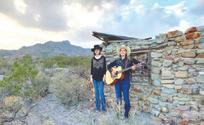
1958 A.D. Brownfield Deming





1959 George A. Godfrey Animas
1960 Lee R. Hammond Clovis
1961 G.W. Evans Magdalena
1962 Lee S. Evans Laguna
1963 Albert K. Mitchell Albert
1964 Marshall Sellman Albuquerque
1965 Floyd W. Lee San Mateo
1966 J.C. Neafus Newkirk
1967 Joe Pankey TorC
1968 Alvin M. Stockton Raton
1969 Sherwood Culberson Lordsburg
1970 Noel Rankin Silver City
1971 W.O. Culbertson, Jr. Las Vegas
1972 George Pendleton Animas
1973 R.E. Pankey TorC
1974 Fred Daugherty Clovis
1975 Bill Littrell Cimarron
1976 J.L. (Les) Davis Cimarron
1977 Jasper Koontz Corrales
1978 Ike Wiggins Wagon Mound





1979 Jerry Clayton Lovington
1980 A.F. (Frank) Flint Bard
1981 Charlie T. Lee Alamogordo
1982 Von Cain Mountainair
1983 Dick Snyder Clayton
1984 Jiggs Dinwiddie Jal
1984 Tom Linebery Kermit, TX
1985 Edith Pankey TorC




1986 Bob Jones Crow Flat

1987 Phillip Bidegain Tucumcari
1988 H.W. (Bud) Eppers Roswell

1989 Don Hofman Tucumcari
1990 Linda Davis Cimarron

1991 Peter T. Mocho Belen


1992 Felicia Thal Buena Vista
1993 F.F. (Chano) & Stella Montoya La Plata
1994 Ben & Jane Cain TorC
1995 Frank Dubois Las Cruces
1996 Huling “Jupe” Means Buckhorn

















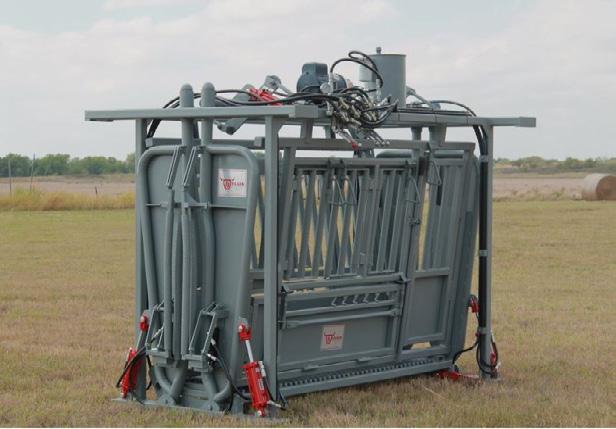

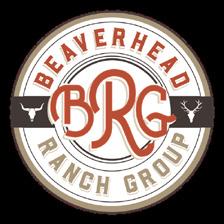






1997 Rob Cox Organ
1998 Bill Humphries Lindrith
1999 Rusty Tinnin Bell Ranch
2000 Oliver “Sato” Lee Mountainair
2001 Bob and Jane Frost San Jon
2002 Don Cullum Bakersfield, CA
2003 R.C. (Dick) Manning Deming
2004 Joe & Vivian Culbertson Amistad
2005 Jimmy R. Bason Hillsboro
2006 Phil H. Bidegan Tucumcari
2007 Gretchen Sammis Cimarron
2008 Don “Bebo” Lee Alamogordo
2009 Wesley Grau Grady
2010 Bill King Moriarty
2011 Bob Ricklefs Cimarron
2012 Bill Sauble Springer
2013 Sterling Spencer Carrizozo
2014 Alisa Ogden Loving
2015 Bert Ancell Wagon Mound
2016 Rex Wilson Carrizozo
2017 Joe Bill Nunn Deming
2018 José Varela Lopez La Cieneguilla
2019 Pat Boone Elida
2020 Caren Cowan Albuquerque
2021 Tom Sidwell Quay
1994 Governor Bruce & Mrs. Alice King Stanley
1995 Huling “Jupe” Means Buckhorn
1996 G.B. Oliver, III Alamogordo
1997 George Clark Albuquerque
1998 G.X. McSherry Deming
1999 Howard Hutchinson Glenwood
2000 Rachel Thomas Huachuca City, AZ
2001 Dr. Steve England Edgewood
2002 Joan Park Capitan
2003 Karen Budd-Falen Cheyenne, Wyoming
2004 Chuck Stocks Albuquerque
2005 Joe Delk Mesilla
2006 Joe Stell Carlsbad
2007 Laurie Schneberger Winston
2008 Tim Cox Bloomfield
2009 Jeff Witte Las Cruces
2010 Larry Dominguez Las Cruces
2011 Andrea Buzzard Santa Fe
2012 Clint Harden Clovis
2013 Dennise Bridgers Rio Rancho
2014 New Mexico CowBelles
2015 Farm Credit of New Mexico
2016 Gordon Meeks Santa Fe
2017 Ray Keller Carlsbad
2018 Romney Todd Alto
2019 Nick Layman Albuquerque
2020 Joe Culbertson Amistad
2021 Tom Paterson Houston
This award is presented by the New Mexico Federal Lands Council
2001 Frank DuBois Las Cruces
2002 John Fowler, Ph.D. Las Cruces
2003 Howard Hutchinson Glenwood
2004 Ron White Monticello
2005 Caren Cowan Albuquerque
2006 Karen Budd-Falen Cheyenne, Wyo.
2007 Chris Allison Mesilla Park
2008 Mike Casabonne Hope
2009 Lewis Derrick Artesia
2010 Alice Eppers Roswell
2011 Nick Ashcroft Las Cruces
2012 Dr. Jerry Schickedanz Las Cruces
2013 Dr. Sam Smallidge Las Cruces
2014 Laura Schneberger Winston
2015 Les Owens Las Cruces
2016 Jeff Witte Las Cruces
2017 Don L. (Bebo) Lee Alamogordo
2018 Yvette Herrell Alamogordo
2009 Chuck Stocks Albuquerque
2010 Frank DuBois Las Cruces
2011 Linda Davis Cimarron
2012 Timothy Jennings Roswell
2012 Andy Nunez Hatch
2013 David Abbey Santa Fe
2014 New Mexico Department of Agriculture
2015 Woods Houghton Carlsbad
2016 Donna Irwin Deming
2017 Brian Moore Clayton
2018 Janet Witte Las Cruces
2019 Bill Sauble Maxwell
2020 Dina Chacon Reitzel Albuquerque
2021 John Wenzel Las Cruces
2019 Sid Goodloe Capitan
2020 Linda Davis Cimarron
2021 Ron Burnett Datil
(Note: Unless otherwise noted(*), all NMCGA members are welcome & entitled to vote in the committees of their choice.)
THEFT & HEALTH SUB COMMITTEE
Dustin Johnson, Farmington Chairman
Dan Estrada, Trementina Vice Chairman
PROMOTION & MARKETING SUB COMMITTEE
Amanda Culbertson, Amistad Chairman
RESEARCH & IMPROVEMENT SUB COMMITTEE
Jim Thorpe, Newkirk Chairman
Leigh Ann Marez, Santa Rosa Co-Vice Chairman
Sarah McKenzie, Fort Davis, TX Co-Vice Chairman
Ryan Perry, Roswell Co-Chairman
Susan Navarro, Los Lunas Co-Chairman (All Allied Industries members are welcomed and encouraged to vote on this committee.)
Lance Vincente, Vaughn Chairman
Bill King, Moriarty Vice Chairman & Treasurer
Randell Major, Mgdalena Chairman
All Past Presidents and NMCGA Executive Committee
Alisa Ogden, Chairman Loving
Jim Jackson, Vice Chairman Salmon, Idaho Howard Hutchinson Glenwood
Tom Paterson Luna
Gayla Thal Buena Vista
Bill Sauble Maxwell
Phil H. Bidegain Tucumcari
Mike Casabonne Hope
CROSS CULTURAL SUB COMMITTEE
Marjorie Lantana, Crownpoint Chairman
Boe Lopez, Springer Vice Chairman
MEMBERSHIP SUB COMMITTEE
Heidi Humphries, Tucumcari Vice Chairman
Cheryl Knight, Tucumcari Vice Chairman
Dusti Caviness, Maljamar Chairman
Trent Bilberry, Roswell Vice Chairman
Barbara Corn, Roswell Vice Chairman
JUNIOR CATTLE GROWERS SUB COMMITTEE
Dusti Caviness, Maljamar Chairman
Trent Bilberry, Roswell Vice Chairman
Barbara Corn, Roswell Vice Chairman
LEGISLATIVE SUB COMMITTEE
Bronson Corn, Roswell Chairman
Cliff Copeland, Nara Visa Vice Chairman
Cole Gardner, Yeso Vice Chairman
WATER SUB COMMITTEE
Anita Hand, Datil Chairman
Carlos Salazar, Medanales Vice Chairman
Casey Spradley, Cuba Vice Chairman
WILDLIFE SUB COMMITTEE
Tom Paterson, Luna Chairman
Dave Kenneke, Cimarron Vice Chairman
Wes Eaton, Vado Vice Chairman
ENERGY SUB COMMITTEE
Irvin Boyd, Eunice Chairman
Jim Bob Burnett, Lake Authur Co-Vice Chairman
Bill King, Moriarty Co-Vice Chairman
Tom Sidwell, Quay Chairman
Bronson Corn, Roswell Vice Chairman
All Past Presidents
PRIVATE LANDS SUB COMMITTEE
Kimberly Stone, Capitan Chairman
Jeff Bilberry, Roswell Vice Chairman
John Richardson, Winston Chairman
Colton Lee, Alamogordo Vice Chairman
Elena Farr, Datil Vice Chairman
Tamara Hurt, Deming Chairman
Kenneth McKenzie, Encino Vice Chairman
Casey Spradley, Cuba Chairman
Judy Wallin, T or C Vice Chairman
All Committee Chairmen
Alisa Ogden, Loving Chairman
Pat Boone, Elida Vice Chairman
Kimberly Stone, Capitan Vice Chairman
Horace H. Hening Jr.
Bob Talbott
Vic Culbertson
Al Schneberger
Caren Cowan Jonas Moya
Shelleen Smith
Phil H. Bidegain, Chairman Tucumcari
Linda Davis, Vice Chairman Cimarron
Dennise Bridgers, Secretary Rio Rancho
Caren Cowan, Albuquerque Treasurer
John Conniff, Las Cruces
Nikki Hooser, Jemez Springs Bob McCrea, Roswell
William Alexander, Hillsboro Pat Boone, Elida
James Duffey, Roswell President Antonio Manzaneres, Tierra Amarilla 1st Vice President
Shad Cox, Corona 2nd Vice President
Denton Dowell, Clovis Secretary/Treasurer
Bronson Corn, Roswell Immediate Past President
Mike Casabonne Hope Jim Cooper Tinnie Martin Corn Roswell Mike Corn Roswell
Pete Gnatkowski Carrizozo Debbie Jones Tatum
John Cooper Tinnie Alice Eppers Roswell
Ronnie Merritt Yeso
1906-1912 Solomon Luna Los Lunas
1912-1916 H.C. Abbott Springer
1916-1920 Eduardo M. Otero Los Lunas
1920-1925 Prager Miller Roswell
*1926-1927 David Farr Magdalena
1927-1959 Floyd W. Lee San Mateo
1960-1961 W.E. Overton Yeso
1962-1963 Charles D. Fuller Roswell
1964-1965 Robert F. Corn Roswell
1966-1967 Abe M. Pena Grants
1968-1969 Phelps White Roswell
1970-1971 W.A. Snipes Roswell
1972-1973 Ivan Watson Roswell
1974-1975 Robert B. Naylor Roswell
1975-1976 Anthony E. Treat Roswell
**1977-1978 Madlyn Cauhape Hope
***1978-1979 Truman Pierce Roswell
1979-1981 T.L. (Sonny) Watts Piñon
1981-1983 Truman Pierce Roswell
1983-1985 W.W. Roach Caprock
1985-1986 Mike Casabonne Hope
1987-1989 Art Evans Roswell
1989-1991 Steve Lewis Artesia
l991-1993 David Kincaid Piñon
1993-1995 Pete Gnatkowski Carrizozo
1995-1997 Scott McNally Roswell
1997-1999 Mark Marley Roswell
1999-2001 Ron Merritt Yeso
2001-2003 Tom Runyan Piñon
2003-2005 Russell Leonard Hope 2005-2007 Mike Corn Roswell
2007-2009 Joan Kincaid Piñon
2009-2011 Jim Cooper Tinnie
2011-2014 Marc Kincaid Hope 2014-2016 Leroy Cravens Encino 2016-2018 John (Punk) Cooper Mayhill 2018-2021 Bronson Corn Roswell
1982 James Sachse Las Cruces
1983 Herbert M. (Hub) Corn Roswell
1984 R.L. (Louis) Merritt Yeso
1985 R.C. (Punch) Jones Tatum
1986 George Casabonne Hope
1987 Al Snipes Roswell
1988 Lloyd Treat Roswell
1989 H.W. (Bud) Eppers Roswell
1990 John Cooper Tinnie
1991 Art Evans Roswell
1992 Truman Pierce Roswell
1993 Ernest Perez Encino
1994 Joe Skeen Picacho
1995 Ronnie & Beverly Merritt Yeso
1996 David & Joan Kincaid Piñon
1997 A.W. & Janice Gnatkowski Ancho
1998 John P. Cauhape Piñon
2000 Albert Perez Vaughn
2002 Martin Yriart Roswell
2004 Robert B. (Bob) Naylor Roswell
2006 Anthony (Tony) Treat Roswell
2008 Mary Skeen Roswell
2010 Pete & Sarah Gnatkowski Ancho
2013 Mike Casabonne Hope
2016 Antonio Manzanares Tierra Amarilla
2018 Mike Corn Roswell
2022 Punk Cooper Mayhill
Auction, Inc.
Family Luncheon
Farm Credit of New Mexico
Stockmen’s Awards Luncheon
Animal Health International Hi-Pro Feeds
Cattleman of the Year CoBank Farm Credit of New Mexico
Cowboy Christmas Multimin USA
Convention Program
New Mexico Stockman
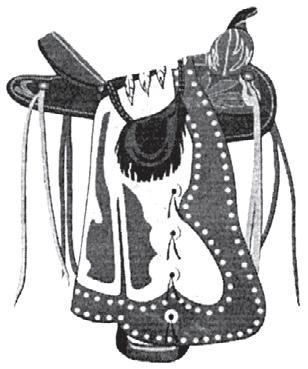
Ayudando Siempre Alli Farmway Feed and Equipment
Scholarships
Purina Animal Health Allied Industries Partners
NMCGA YCLC
Audio/Visual
Depot Farm and Ranch Agency
Cattlemen’s College Corteva Agrisciences Zoetis
Ag Policy General Session Insurance Services of New Mexico Children’s Lounge
New Mexico Stockman / Caren Cowan Livestock Inspector of the Year Sauble Ranch Co.
Copper Bit Ag New Mexico FSC, ACA Corteva Agrisciences
Wrangler Farmers Business Network Nutrition Plus
New Mexico CowBelles DTMC, Ltd.
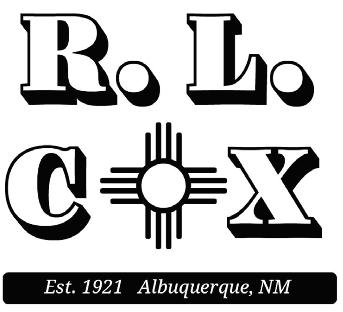
Insurance Services of New Mexico, Inc. Cowboy Dairy Farmers of America CS Cattle Co.

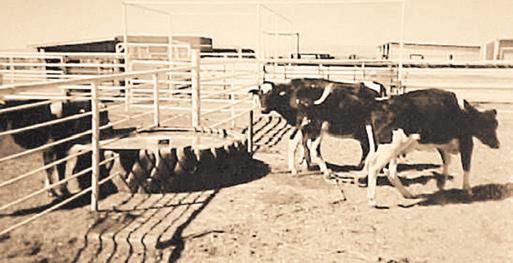
Virbac Livestock
Camp Coffee Insurance Services of New Mexico
Farmers Business Network
Nutrition Plus
Suther Feeds Southwest Agri-Plan Crop Insurance Agri-Land Advisors, LLC Attitude Adjustment
Depot Farm and Ranch Agency Farmers Business Network
Suther Feeds Southwest Williams Windmill, Inc Agri-Plan Crop Insurance Red River Specialties

Antonio Manzanares, Tierra Amarilla Chairman
Bronson Corn, Roswell Vice Chairman James Duffey, Roswell Secretary/Treasurer
Mike Corn, Roswell Jim Cooper, Tinnie Mercedes Cravens, Encino Denton Dowell, Clovis
Sybrand Vander Dussen, Clovis President
John DeRuyter, Mesquite Vice President Al Squire, Hagerman Treasurer
Derrell Hanson, Clovis Secretary
Charlie DeGroot, Dexter Immediate Past President
Beverly Idsinga, Roswell Executive Director Kaye Whitefoot, Roswell Deputy Executive Director
Scott Edeal, Los Lunas Dale Jones, Veguita Andy Schaap, Hereford, TX Mike TeVelde, Hobbs Roger Westra, Portales
Cole Gardner, Yeso Chairman
Dan Bell, Corona Vice Chairman
Marjorie Lantana, Crownpoint Secretary
Dina Reitzel, Albuquerque Executive Director
John Heckendorn, Moriarty Jim Hill, Mesilla Park
Kimberly Stone, Capitan Joel Van Dam, Texico Nancy Phelps, Winston
Sarah Fitzgerald, Ft Sumner
Matt Ferguson, Carrizozo Federation Director Zita Lopez, Springer U.S.M.E.F. Director Kenneth McKenzie, Encino Beef Board Diector, Boe Lopez, Springer Secretary of Agriculture, Jeff Witte, Ex-officio, Las Cruces
Don L. (Bebo) Lee, President Alamogordo Carlos Salazar, Vice President Mendeñales Bobby Jones, Secretary/Treasurer Dell City, Texas
Mike Casabonne Hope Irvin Boyd Eunice
Matt Ferguson Carrizozo
Duane Frost Claunch
Howard Hutchinson Glenwood
Jim Cooper Tinnie
Levi Klump Animas
Ronnie Merritt Yeso
Joe Bill Nunn Deming
Randell Major Magdalena
Betty Pound Socorro
Bill Sauble Maxwell
Laurie Schneberger Winston Mike White Dexter
Rex Wilson Carrizozo
José Varela Lopez La Cieneguilla
Jacinda Price President Vonda Frost President -Elect
Michelle Greeman Vice President
Michelle Greeman Secretary
Stephanie Avent Treasurer
Sandra Lacy Past President
Dalene Hodnett 2021 CowBelle of the Year
Kacy Patterson, Corona District I
Vacant, District II Fita Witte, Las Cruces District III Madalyn Lee, Alamogordo District IV
Traci Curry, Las Cruces Director, Ag in the Classroom Britney Lardner, Albuquerque Coordinator, Ag in the Classroom
Pamela Johnson, Roswell Audit
Dalene Hodnett, Las Cruces Chair Beef Ambassador Shelly Frost, Claunch By-Laws
Corrina Casler, Ruidoso Downs Chaplain Vacant, Cookbooks & Napkins
Vacant, Historian
Janet Witte, Las Cruces Jingle Jangle
Anita Hand, Datil Legislative Madalynn Lee, Alamogordo Man of the Year
Stephanie Avent, Mineral Wells, TX Membership/ Associate Membership
Marge McKeen, Glenwood Operation Respect
Michelle Greeman, Silver City Parliamentarian Shelly Hathorn, Clovis Pat Nowlin Scholarship Fund
Dalene Hodnett, Las Cruces Social Media Vacant, Ways & Means
Stephanie Avent, Mineral Wells, TX Website Katelin Spradley, McIntosh Wrangler
Bill
Ranch
Bradley 3 Ranch Chas S. Middleton
CEHMM
Copeland and Sons
Corteva Agrisciences Cowboys for Cancer Research
Depot Farm and Ranch
Farm Credit of New Mexico
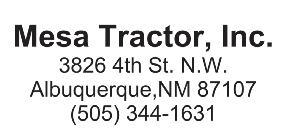
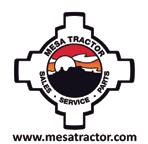
Farmers Business Network Insurance, LLC

Genevieve’s Final Touch Geo-Vision Air Services, LLC
Giant Rubber Water Tanks
Green Crop Insurance Hi-Pro Feeds HydroGreen Inc.
Insurance Services of New Mexico

KD Bar Customs Merck Animal Health Mix 30 by Agridyne

Multimin USA
New Mexico Department of Agriculture - Marketing Division
New Mexico Department of Game and Fish
New Mexico Livestock Board
New Mexico State Land Office
New Mexico State University Grassland
Nutrition Plus Perez Cattle Purina Animal Nutrition Redd Summit
Red River Specialties Scott Land Company, LLC
Shoeshine Booth
Southwest Border Food Protection and Emergency Preparedness Center
Suther Feeds Southwest TCU Ranch Management URUS Companies
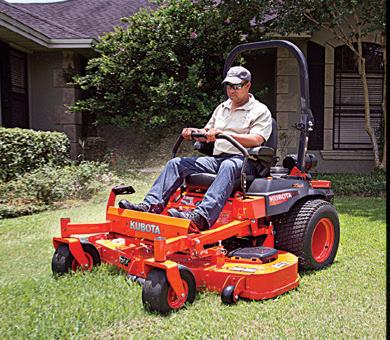
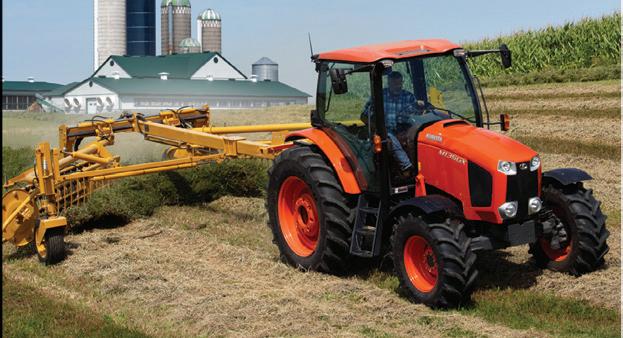

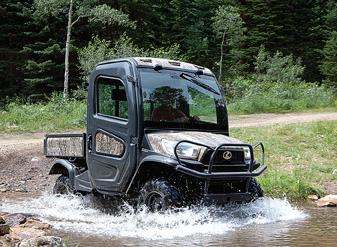
USDA - APHIS - Wildlife Services
Virbac Livestock Waypath Employee Benefits
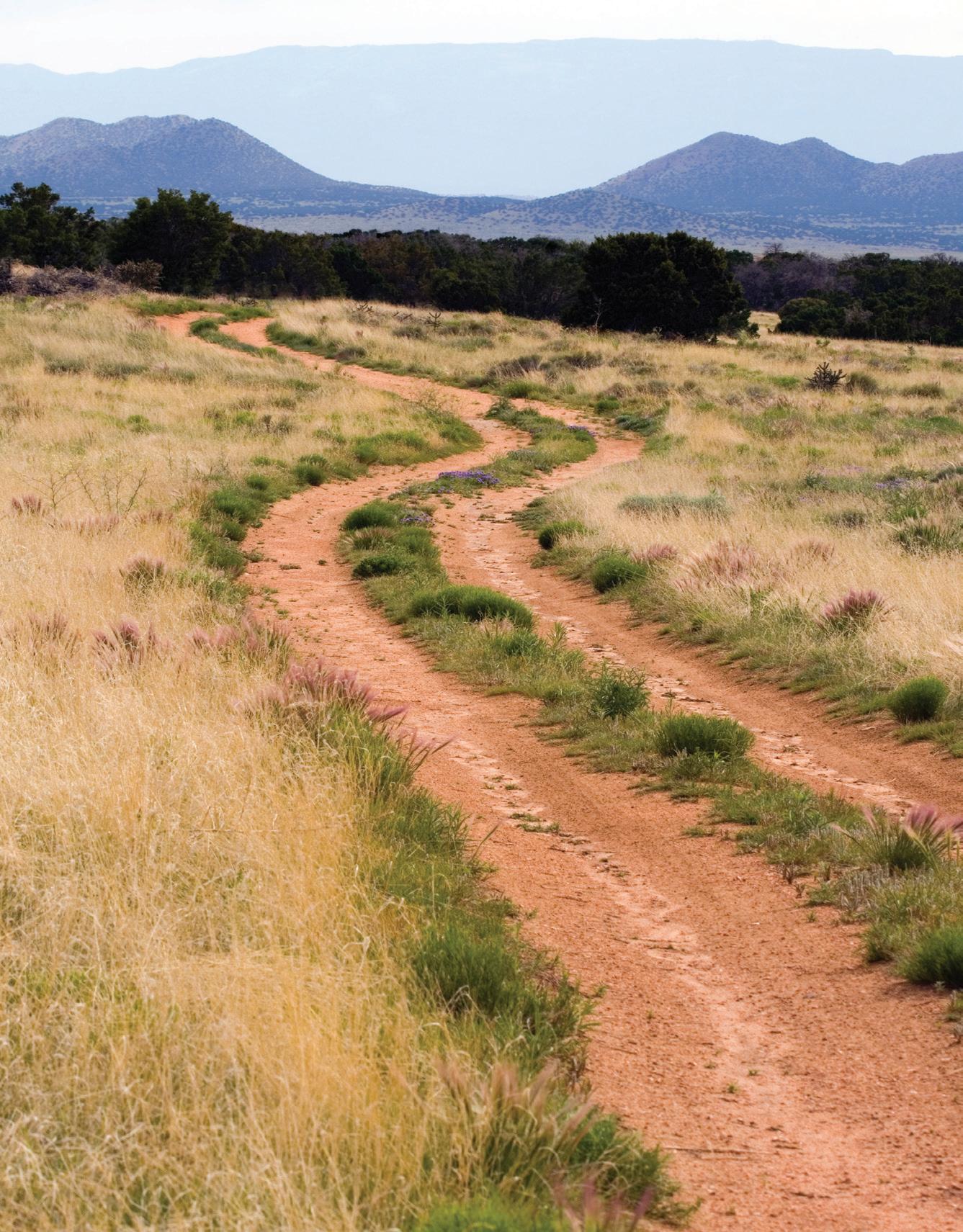



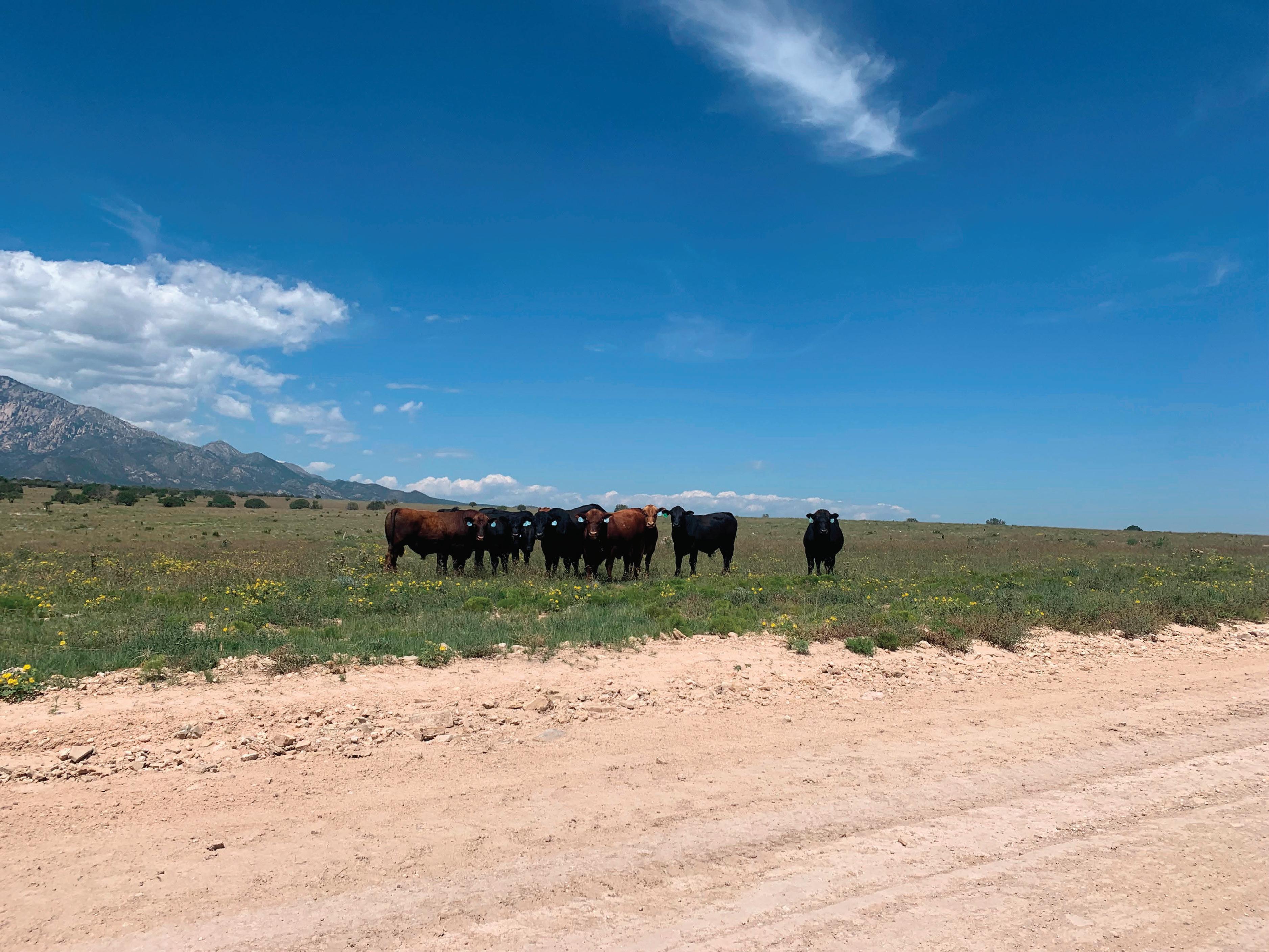
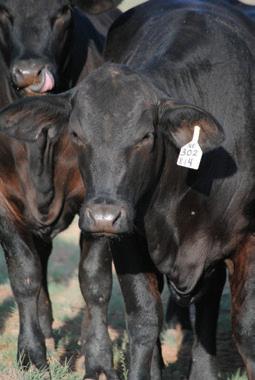
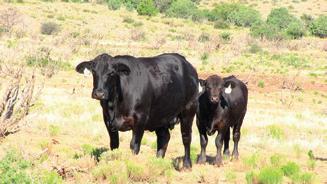
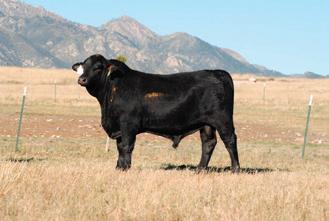





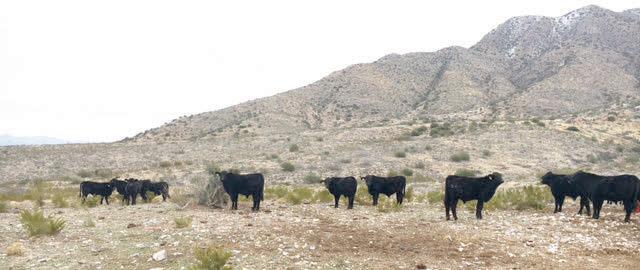


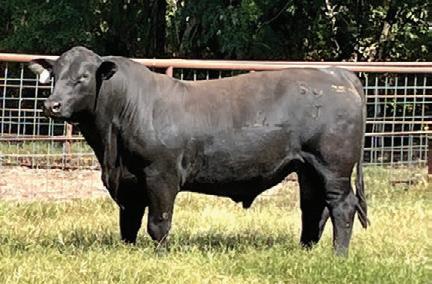
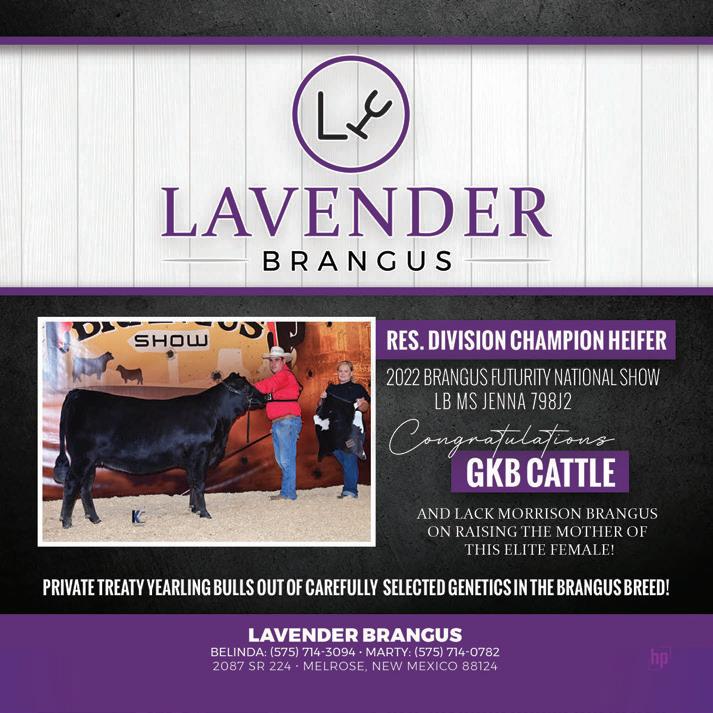
There is a widely-held perception that cattle with a dose of
ics
indicus
to Bos taurus
research done by the International Brangus Breeders Association (IBBA) blows that old theory out of the water.
Brangus steers sired by five heavily-used A.I. sires were recently fed and harvested in Kansas. The steers out-performed similar weight steers placed on feed at the same time
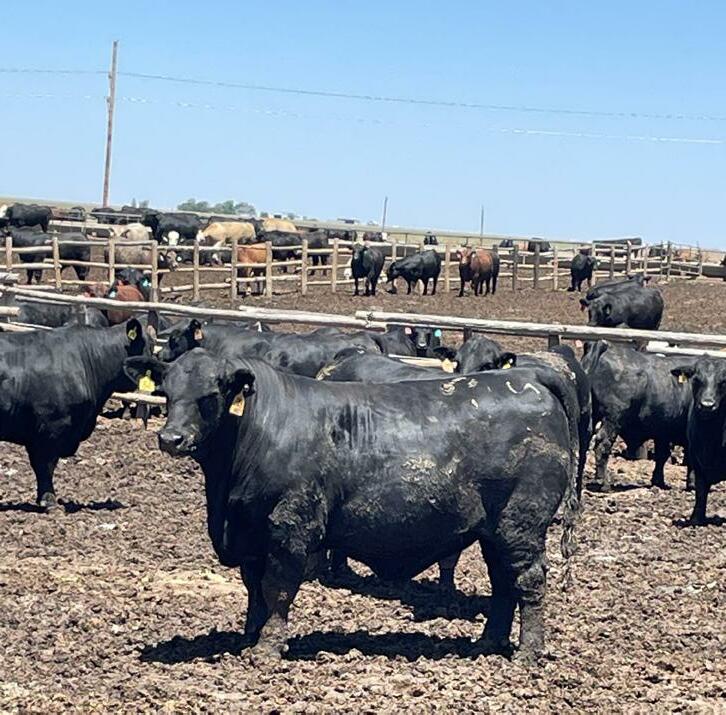
in SW Kansas feedlots, and they graded sig nificantly better than the industry average, earning a carcass premium of over $70/hd.
Overall, they graded over 92 percent Choice, with over half of the Choice car casses reaching the marbling level required for CAB (Certified Angus Beef). Adding the feed conversion advantage to the carcass premium resulted in a net economic advan tage of over $120/hd compared to commodity cattle fed and harvested in SW Kansas at the same time.
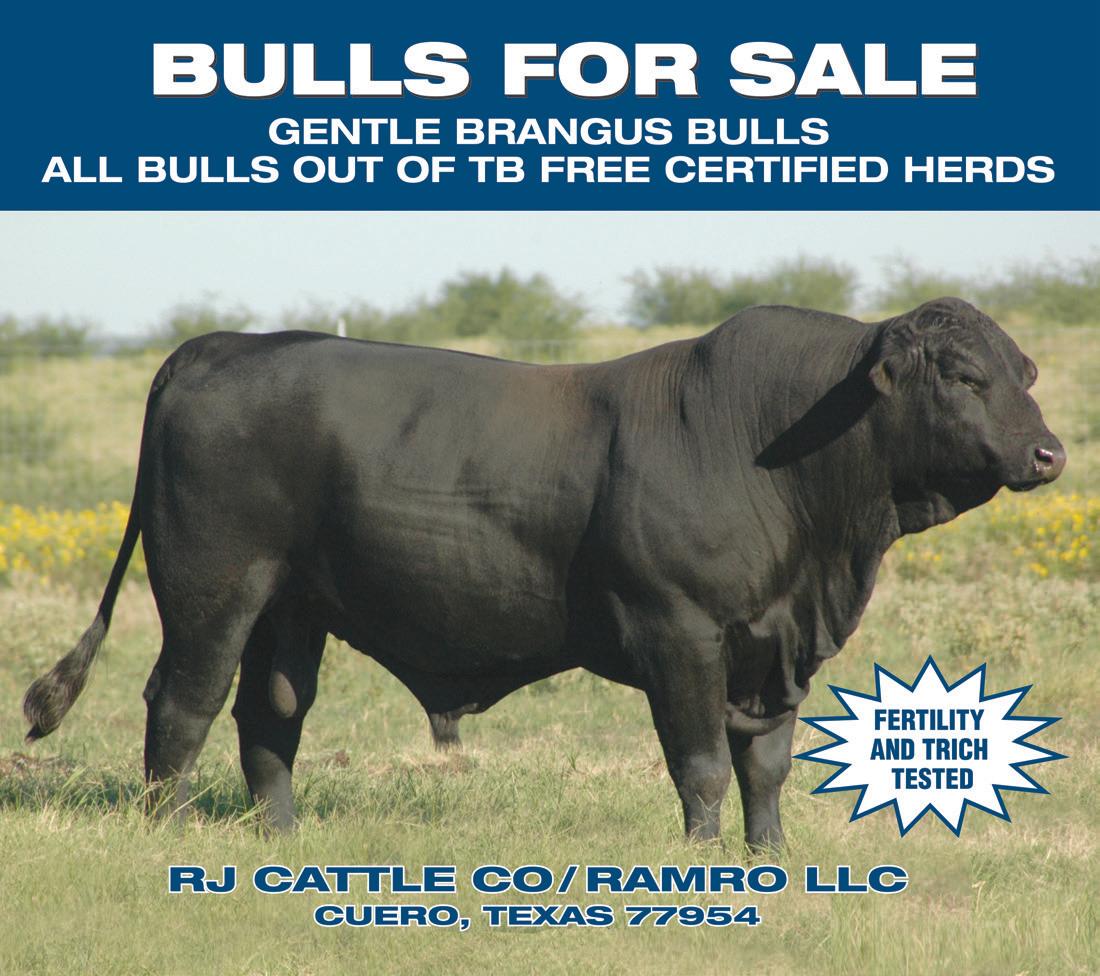
Subsequent tenderness testing of the steaks from the research cattle was done at Texas Tech University. Seventy-eight percent (78 percent) were classified as “very tender”, 17 percent were “tender” and 5 percent were “intermediate”.
The steers were produced from typical
Texas and Oklahoma commercial cowherds. The cows were randomly mated to each sire. “We did not cherry-pick the sires to win a feedlot and carcass contest,” commented Dr. Randy Schmidt, a Brangus breeder from Texas and Chairman of the IBBA Breed Improvement Committee.
“We selected the test sires because they were on the list of the most heavily-used sires in our breed for two consecutive years. These are mainstream Brangus sires that Brangus breeders across the country are using to build productive cowherds and to produce quality bulls for sale to commercial breeders. We believe this is a good and fair sample of modern Brangus genetics.”
Most producers in hot-harsh environ ments, whether hot/wet or hot/dry, appreciate the ability of an indicus-influ
enced cow like a Brangus to out-produce a straight Bos taurus cow. They’ll generally wean heavier calves and remain productive for an additional 1-3 years, resulting in a lifetime productivity advantage approaching 25 percent. But the embedded perception that “eared” cattle will not match Bos taurus cattle in the feedlot and packing plant has created some hesitation in using indicus-in fluenced cattle like Brangus despite the maternal advantages.
A recent survey taken at a meeting of the Beef Improvement Federation (BIF) showed that 67 percent of the very learned audience at that meeting expressed concern about “carcass quality and value” with regard to

continued on page 73 >>

88343 575/653-4617
806/282-2770


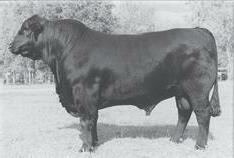


indicus-influenced cattle. “It’s a little disap pointing that the most learned people in the industry when it comes to beef cattle genetics cling to these old ideas about Brangus and other indicus-influenced cattle,” said Jeremy Jackson, an Arkansas Brangus breeder and current president of IBBA.


“But we cannot blame them. We need to blame ourselves for not getting this informa tion in their hands and, in the case of university personnel, getting this informa tion distributed to their students who represent future beef producers.”
Brangus breeders recognize that the modern beef industry is more quality driven than ever. The dramatic improvement in beef quality over the past decade is testament to the power of genetics. For a breed of cattle to remain relevant, it must show that it can produce highly productive cows and produce very high quality beef. Doing just one of these things is not good enough anymore. Brangus breeders have been selecting for maternal productivity, beef quality and carcass yield for decades.
“The genetic trends in our own database are all moving in the right direction, so we were not really surprised by these positive results from our research project,” Dr. Schmidt added. “This is ongoing research. The next set of research steers are on the ground, and the set after that are in utero. We fully intend to make a positive contribu tion to beef’s quality revolution.”

Genetic merit should matter more, while hide color should matter less, according to a recent survey con ducted by the Red Angus Association of America. Results show cattle feeders and other industry stakeholders would like to see the feeder cattle market become more objective in its pricing methods. Respon dents believe the current hide-color emphasis has endured beyond its point of greatest benefit and needs to be replaced.
“These results portray the sentiment of the cattle feeding sector and many others involved in the beef industry,” said Tom Brink, RAAA CEO and administrator of the survey. “The logic of moving in the direction they desire certainly makes sense. A market that rewards objective value characteristics above superficial traits sends a strong signal for real improvement in feeder cattle quality and value.”
There is recognition by those surveyed that market emphasis on a black hide did help the beef industry improve histori cally, leading to higher-quality feeder cattle. However, survey data indicates 92 percent want changes for the future. Price discovery using specific genetic and genomic information on individual groups of feeder cattle can lead the indus try in the direction of consistently better feeder cattle quality in the years ahead,
and is preferred over hide color for that purpose.
“Going in the direction of genetics would be beneficial for producers and cattle feeders. It would open doors for both,” said survey participant Stacy McCasland, Palo Duro Feeders, Gruver, Texas.
The survey, conducted from October 2021 through February 2022, was the first of its kind in assessing opinions on how the feeder cattle market functions in the areas of animal appearance and genetics. Results indicate that cattle feeders want change in the way value is assigned. They seek a more objective market that estab lishes prices with little or no influence from hide color. Cattle feeders want pricing decisions based on value-oriented, objectively determined attributes, such as the genetic potential for growth, effi ciency and carcass performance.
Rod Weeden of Cow Creek Feeders, Keyes, Oklahoma, referenced the con sumer’s point of view saying, “No one cares about the color of the hide when they’re eating a steak.”

To access the entire report, visit www. RedAngus.org. For media requests, contact Brandi Buzzard Frobose, director of communications, at brandi@redangus. org.

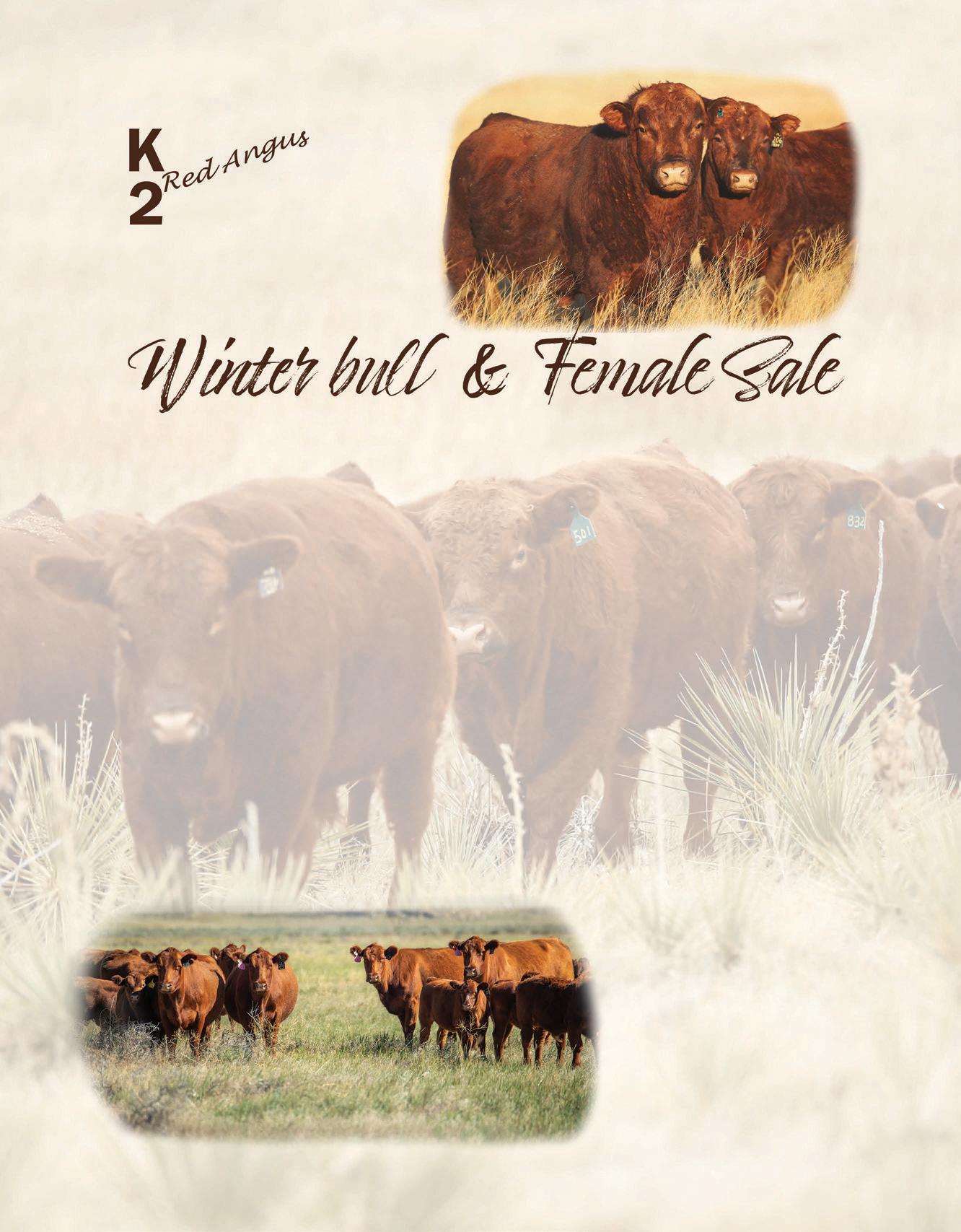

“See up that draw?” he gestures . “There is a spring flowing up there that hasn’t been seen in 60 years.”
“And that grass right there is a Green Sprangletop. It is pretty rare and I’ve never seen it here before.”
Tom Sidwell is at home and happy when he is out on the range, working with plants and animals and soils to create harmony and life. Living on the range and using the tools he has as a cowman, Tom has dedicated his life to understanding the energy flowing between plants, soils and animals.
But this cowboy knows a lot more than how to care for range and cattle. He has singlehandedly killed bills that were being debated before the New Mexico Legislature just by talking them to death. He can hold an entire class of fourth graders spellbound as he explains water cycles.
Fifty years after he was discharged from the army, he still can’t talk about his time in the service because some of his activities have never been declassified. “I signed non-disclosure statements and being charged with treason if I disclosed classified material is not my idea of a good time.”
He had to be taught to flush a toilet his first day of school because their house had no indoor plumbing, but he can and does calculate the cost of ranch improvements down to the thousandth of a cent. When called to lead, he does so with authority and assurance. When home on the ranch, he finds no greater joy than caring for the land and helping it achieve its potential.
Tom Sidwell is both are archetypical cowboy and an exceptional cowboy, and as such he was awarded the lifetime achievement award, the highest recognition cattlemen give their peers, as the New Mexico Cattle Growers’ Cattleman of the Year in December of 2021.
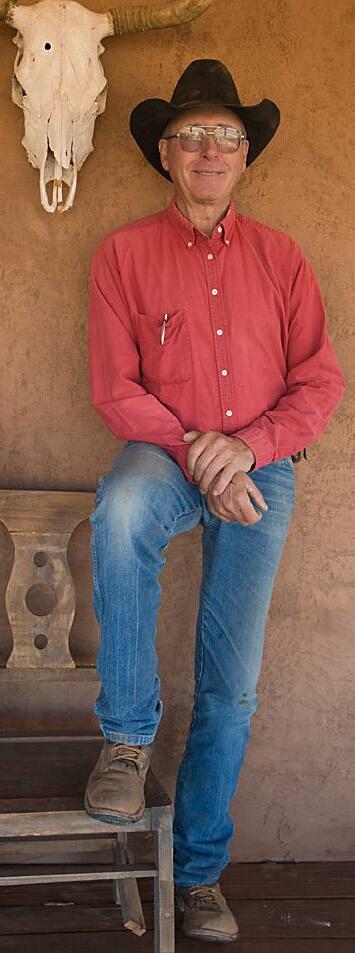
Tom and his wife, Mimi, live a cattleman’s dream, nestled into the Caprock outside of Tucumcari, on a well-watered, well-appointed ranch with all kinds of grasses and desirable forbs. His life goal was always to take care of cattle and the land. Hers was to be a cowgirl in the wide open spaces. Both dreams have been realized on the JX Ranch, a ranch they rescued from neglect and have turned into a landscape so well known for stewardship that Tom and the JX have twice been nominated for the Leopold Award for Excellence in Grazing.
Tom and Mimi have both worked hard to achieve this dream. Tom stays busy with range improvements, service to community, land owners and civic organizations, and his ranch real estate business. Mimi direct markets and delivers most of the cattle produced on the ranch through her website to customers throughout New Mexico as well as out-of-state.
Mimi, who grew up in Sweden watching western movies and falling for the strong, silent protagonist, sometimes likens their life together to a popular cartoon series. Flo, the wife, says, “We don’t ever talk anymore.” Her husband, Jake, replies, “The cattle market is up and we’ve had rain. What is there to talk about?”
But the truth is, when it comes to property rights and land stew ardship, Tom Sidwell has a lot to say. His words are sourced in a long history of agriculture and a lot of research, and his actions speak louder than words. So when Tom says or does something, the rest of the agriculture community sits up to listen.
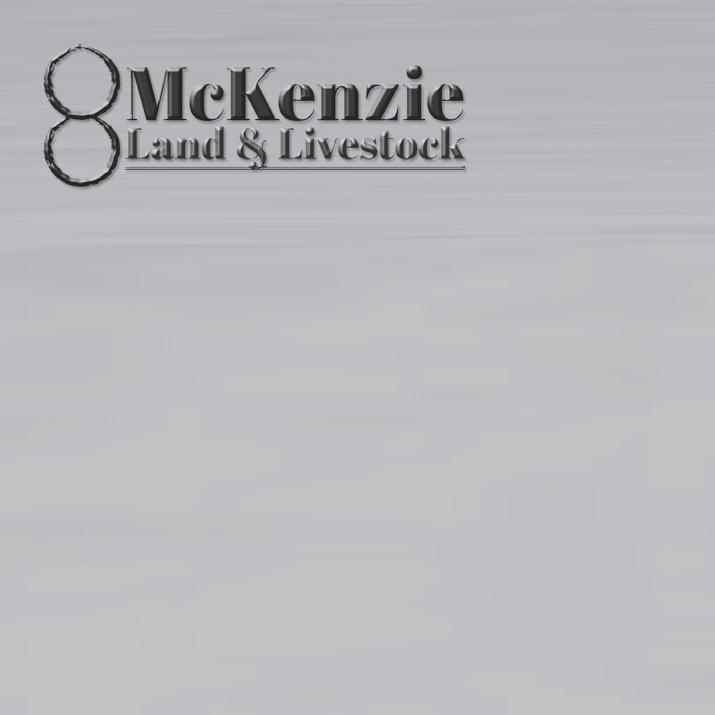
Tom’s grandfather, Wiley Sidwell, and his great-grandfather, George Sidwell, home steaded in Lincoln County in the 1890s. Wiley worked for the Block Ranch in the early 1900s. He raised his family in a half dugout near Meeks on the north side of the Capitan Mountains.
Wiley’s son Jiggs, Tom’s father, was working on the Block Ranch when he wooed and won Ella, a New York raised dietitian who had come West to find work at Fort Stanton.
By the 1950s, Jiggs was working for the Bar W outside of Carrizozo. Tom spent his first several years on the old Lantz place on the Bar W before Jiggs quit cowboying and leased the old Phillips 66 station. He built a meat processing plant east of town and the family moved into the first all-electric house in Lincoln County.
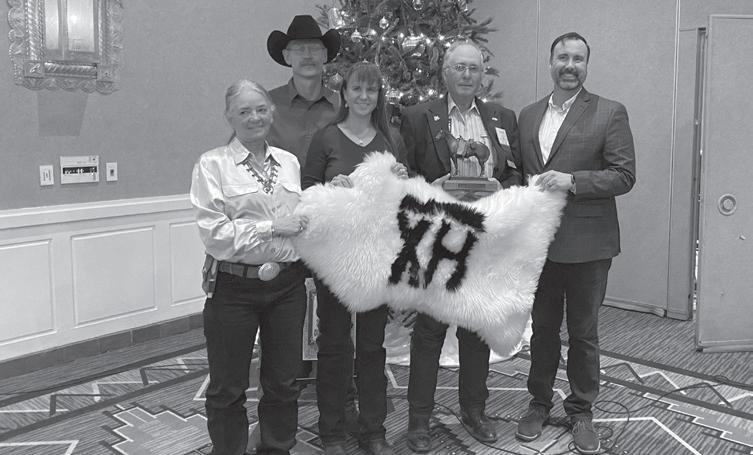
Jiggs was leasing a number of small ranches and drilled wells to establish perma nent pasture. “Jiggs always established water rights and had pretty places,” remembers Stirling Spencer of the Bar W. “I think his father taught him to value water, and prob ably my father as well. And he taught Tom.”

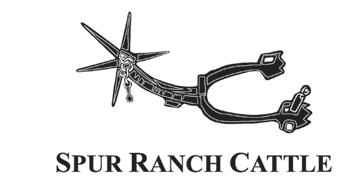
Tom learned as a young boy to adapt to dramatic change. He was nine years old when he, his mother and two younger sisters rode the passenger train for three days and two nights from Carrizozo to New York City to spend the summer with his maternal grandparents.
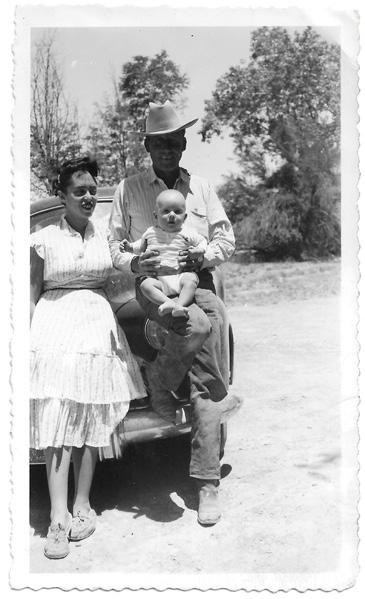
“I grew up in an old adobe house with a wood cook stove, no indoor plumbing, no TV, and an outhouse. All of a sudden I am in NYC with skyscrapers, subways, traffic like you wouldn’t believe, indoor plumbing, and TV with 40 channels,” he remembers.
“It was quite a culture shock. My grandfa ther was a civil engineer with the city and he showed us buildings and bridges that he helped design and work on since 1916. I even learned to swim in the Atlantic Ocean.”
“The experience taught me not to sweat the small stuff,” he reflected. “I learned to be overly optimistic.”

As a high school student, Tom would load his horse into the back of the pickup and drive between the ranches, checking cattle.

After graduation in 1967, Tom funded his college career by working summers for local rancher, Raymond Walker, who bid on jobs for the Forest Service. He constructed trails,

did erosion control, built fences, and learned to use dynamite.
When he worked in the Gila Wilderness, the crew would ride 15 miles horseback to a jobsite, work eight or 10 hours, clearing brush with a crosscut saw and drilling holes by hand in boulders for dynamite. At the end of the day, they had a 15 mile ride to their camp in the wilderness.
When he was drafted into the army, Tom was eventually promoted to Sargent, sta tioned in Germany with Military Intelligence (MI) and earned top secret clearance and an OFCO (Offensive Counterintelligence Oper ations) clearance. He spent some time in Vietnam, working with MI attached to an engineering company, then was sent back to Germany, living a life that would read like a James Bond novel, sending and receiving encrypted messages and traveling to deliver top secret documents. To his knowledge, some of his work has not yet been de-classified.
After his army discharge, Tom returned to New Mexico State University and gradu ated with a degree in Range Management.
Crosswise with the BLM
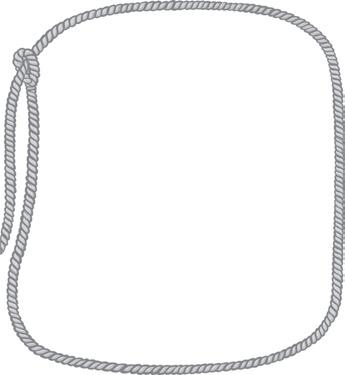
Tom quickly learned that the Bureau of Land Management’s idea of getting along with ranchers was “Us versus them.”
“I never understood that attitude,” he explained. “Most BLM employees were good guys, many from ag backgrounds, but when they got in the office background, they changed. And they didn’t understand private property rights.”
As supervising range con in charge of the range program on 1.2 million acres in Catron and western Socorro County, Tom instructed his employees to try and get to know the ranchers in their district.
“I told them they could learn more over a cup of coffee at a kitchen table than they could in 20 years of BLM work,” he remembers.
Tom remembers his time at the Bureau of Land Management as a pain in the nether region, but he did bend the regulations as far as he dared for the rancher’s sake.
Occasionally, he had a chance to right some wrongs, like the time in the late 1970s when the BLM lost a lawsuit and was instructed to write hundreds of Environ mental Impact Statements.
They used the Ocular Reconnaissance Method for their vegetative survey, and when the data started coming in, some of the allot ments showed an increase in grazing numbers, according to the data. The BLM didn’t like the outcome so they changed the factors on the formulas, resulting in a slight decrease in the AUMs.
Tom couldn’t stomach the deception and told Sato Lee, Frank DuBois and other ranchers that the methodology was faulty, and the BLM had changed factors in the formulas.
Further, the young BLM employee stated, for a long-term determination on health of rangeland and stocking rates, they needed to use actual use data from several years, including trend, rainfall, and three other salient data points.
Frank DuBois followed up with Sidwell’s five monitoring points and worked with Senator Pete Domenici to get those five mon itoring criteria into the Public Rangelands Improvement Act which was passed by Congress.
While working for the BLM, Tom attended Allan Savory’s Holistic Resource Management School and was in complete agreement with the precepts on rangeland management. His opportunity to implement those precepts came when he quit the BLM

and moved to the Big Bend area of Texas to manage a 500 head ranch.
“What we learned about range man agement in college went so far, but we were missing the benefits of a cattle herd,” Tom stated. “When we concen trated the herd and began to graze intensely for a day or two, then moved on, we improved the health of the soil and the plants.”
Tom’s three children, Catherine, Stacie and Benjamin, helped build fence and install water at the new ranch. “He taught us from a young age how to invest work on a ranch to get it to the point where it needed to be,” remembers Stacie.
“Every ranch we ever lived on, Dad imple mented the Holistic Resource Management system, and every ranch really flourished.”
One hot summer day found Tom and Stacie out in the heat, gathering up plastic stays from the black pipeline they had just
installed. “We were hot and tired,” Stacie recalls, “and when we got to a spigot, we were glad to get a drink. But the water was hot. I, of course, complained about the hot water, but Dad just said, ‘Drinking hot water never hurt anyone.’”
Stacie remembers that comment as just part of her father’s perspective. “He would go all day without having to drink much water,” she remembers. “So when he did get to water, he saw nothing wrong with drink ing the warm water.”
Catherine remembers that her Dad always had a book to read, constantly learn
ing and improving his knowledge on how to help the land.
When she was little, Catherine and her siblings crawled along cattle trails which were made into tunnels by the long arching grass shading them.
“When we were moving cattle, Dad would point up a draw and say that there were grasses up there that hadn’t been seen in years,” she remembers.
“I didn’t know at the time that what he was doing was so different, but the more I see Dad, stooping over a species of grass and saying, ‘this has just come back to this land,’ I realize he is a teacher as well as a land manager.”
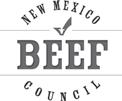
Tom was raising two daughters and a son while he was improving rangeland and making a living. The lessons he taught by example are legion, but one that is remem bered over and over is tenacity and the value of hard work.
“He did the job to get it done,” stated Ben jamin Sidwell. “Dad taught us that if you started a job, you finished it.”

Stacie agreed. “Our last job before I left
for college was pouring the floor for a storage tank,” she related. “The four of us and two cousins were going to spend the morning mixing cement by hand. Dad told us that we would go into Capitan after we were finished for lunch, so we didn’t need to pack a lunch.

We shoveled and hand-mixed 301 bags of concrete and had the stuff all over us. We didn’t finish until 4:00 in the afternoon. True to his word, Dad took us out for pizza after wards, and that was the best pizza I’ve ever eaten in my life.”
Benjamin, now an engineer with Space X, continued, “Dad takes pride in maintaining the range, but he also takes pride in owner ship of the entire industry. He is able to build and give back to the cattle industry and passes along his hard-earned knowledge to others who may need a little information or help. He enjoys passing knowledge from

generation to generation, and that has been important.”
A work ethic and integrity were also passed from generation to generation, and Tom’s children and grandchildren all cherish their memories of working and playing together on the ranch.
“I don’t know how many times his grand children have been tossed in water troughs because they wanted to box with Poppy,” stated Catherine. “Thinking they had finally beat him, he would lure them close to a water trough and when they would lunge toward him he would just help them right in for a quick cool down.”
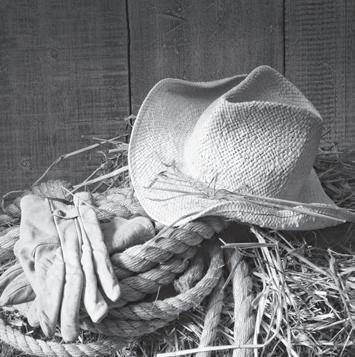

When Tom was given the opportunity to move back to Lincoln County to manage the G Bar F Ranch, a 65,000 acre ranch near Capitan comprised of mostly Forest Service land, he jumped at the chance.
Once again, he implemented Holistic Resource Management (HRM), against the conventional wisdom which said that HRM didn’t work on the mountains.
Within the first three years, weaning weights of calves went up by 60 to 80 pounds and conception rates went from 65 percent to 95 percent. Tom orchestrated all this improvement without doing more cross-fencing.
“The ranch had been managed under a traditional Forest Service rotation for years and years, but I showed them that in a fouryear time period I could show more rest on those pastures and increase both weaning weights and conception rates,” he noted.
Additionally, “to implement this grazing it just took 4/1000 of a penny per acre. I reduced the per year cost per cow from $500 to $249 per cow, and at the same time increased the numbers to the permit level.”
Tom also started preconditioning calves coming off the G Bar F, which was a relatively new concept in the late 1980s. He calculated it cost 1.5 cents per pound to precondition calves, which would give him top of the market price plus a three percent premium.
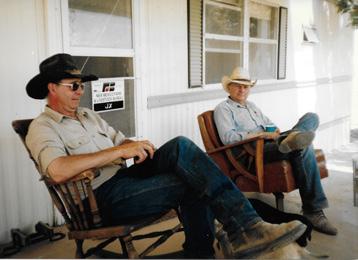
“The buyer of the calves had been seeing high death losses when he bought the calves, but his death loss went to zero after buying our preconditioned calves, and we were adding value to the calves,” he summarized.
Tom was single by this time, and Mimi had moved to Nogal looking for a ranch to buy while day-working on ranches around the area. Tom hired her on, even though as a general practice he never hired daywork. And he paid less than anyone else around.
“He didn’t pay worth a damm,” Mimi clar ified. “But Mimi just kept hanging around,”
he retorted with a laugh. “I got tired of paying her, so I just married her.”
Mimi dreamed of wide open spaces since she was a child in Sweden. She traveled the world while working for the airline industry in Switzerland, then moved to Boston and got her green card.
When Mimi, who had been on several trail rides in Arizona, asked who could teach her the ranching industry, she was directed to Henry McKinley. Henry and Peg “adopted” her and took her under their wings, teaching her all things pertaining to cattle work. “I became the appointed castrator at brandings,” she related.

While living on the Thorton Ranch south of Lamy she learned how to fix water-gaps and change oil in windmills. “I loved every minute of it,” she recalls. Later she moved to the Nogal/Capitan area to look for a ranch to buy and started day-working on area ranches.
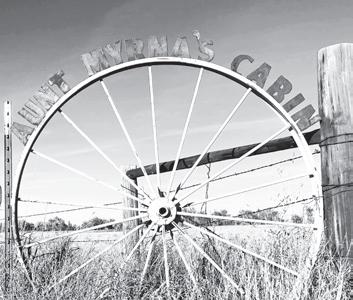
Mimi wasn’t the only one busy on the international scene. Tom was a part of a group of ranchers working with New Mexico Department of Agriculture’s Raul Tellez, who sold seed stock all over Mexico and Central and South America. Tom spoke Spanish well enough to do business and sold a lot of cattle south of the border.
Once, when traveling with the group back from Mexico, the New Mexican’s came upon an accident. Tom, as was his habit, jumped out to provide assistance. “It was 11:00 at night and we were at the side of an interstate, waving our cell phone lights to keep trucks from crashing into a pickup that had just bounced off of a dividing line berm,” recalls New Mexico State Veterinarian Ralph Zim merman. “We finally got official lights to the wreck and ended up taking the guy who had crashed his pickup on to Las Cruces to meet his Mom. “
Back in Lincoln County, Tom worked
with other local ranchers to put together an ordinance to start the Public Land Use Advi sory Council, which in essence followed what Nye County, Nevada was doing, which resulted in landowners, county commission ers and governmental agencies working together.
There was so much interest in the ordi nance that the hearing was moved from the commission chambers to the High School gymnasium. “We got it done, and the BLM and Forest Service started working with Lincoln County,” Tom remembers. “They
came to our meet ings and relations improved.”
Rex Wilson worked with Tom to start PLUAC. “Tom was as smart as any lawyer, and because of his experience in the BLM, he is good with comments and responses which are valuable and appro priate,” Rex noted. “Tom’s insights were always unique and very valuable, and still are. “
Tom and Mimi found the ranch they wanted near Roswell. The owner, Glaze Sacra, had a herd of registered Brangus cattle, and he said if they wanted the ranch, the cattle would come with it. They shook on the deal.
“Glaze was the most upright, honest man,” Tom related. “You can’t buy a 356-head ranch




on a handshake and a one-page contract from just anyone.”
Mimi remembers, “We had to borrow money to buy those 356 cows. I was terrified.”
Mimi moved to the Thunderhead and Tom continued at the G Bar F, which was owned by an internationally known banker.
It was sink or swim for Mimi, who was basically by herself for the first year. “I moved cattle seven miles by myself, worked on prolapsed cows, and dug for pipelines,” she related, “And I loved every minute.”
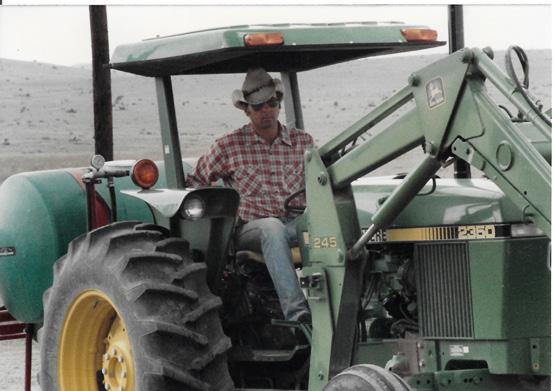
The Thunderhead had a high percentage of BLM land which was accompanied by the frustrations of dealing with the bureaucracy every time they wanted to make a range improvement.
This eventually led the Sidwells to the decision to move on. They canvassed New Mexico and surrounding states and eventu ally moved to the Pine Ridge area of Nebraska, where they supplemented ranch income with a working ranch vacation and hunting enterprise.
Mimi and Tom played host to scores of
tourists, mostly from Europe, who helped them move cows and work on the ranch and they paid for the privilege of doing so.
In Nebraska, Tom again implemented HRM. Nebraska neighbor Nancy Fisher stated, “The ranch had been badly abused, and Tom took it on as a challenge. He installed pipelines and started rotational grazing and good stewardship practices. They both worked hard at restoring the land to a healthy range.”
The Sidwells pastured first calf heifers for a big ranch in Nebraska which was known for wild cattle. “By the end of the summer, we always had the heifers gentled down,” he related.
“The rancher had 1,000 cows, and he said when he weaned the calves they always hit the back fence of the corral. But he noticed that the calves that spent time at our ranch would come to him to see what he had in his hands to feed them.”
Though Tom and Mimi loved their Nebraska ranch, the pull of the Land of Enchantment was strong and they answered the call in 2003, when they bought an over
grazed, neglected ranch outside of Tucumcari.
“All the floats on the ranch drinkers were old one-gallon oil bottles,” Tom recalled. “There was no infrastructure at all, but I could see a lot of potential.”
Others had their doubts. An employee of the NRCS drove by right after the Sidwells closed on the place. Pastures were choked by mesquite and fences sagged. “I hope this guy knows what he is doing,” thought the con servation man.
Nineteen years later, a casual glance at the forage, re-introduced grass species, and increased carrying capacity make it obvious that Tom did indeed know what he was doing when he took over management of the ranch.

Tom and Mimi named the ranch, which is nestled into the Caprock between Tucum cari and the high plains of eastern New Mexico, the JX Ranch. The JX brand was gifted to Mimi by Peg McKinley and was once owned by Peg’s step-father, Dr. Frank Hibbins of the Ghost Ranch.
Tom went to work, spending hours each day grubbing mesquite. He also installed miles of pipeline and tied all his wells together so he could support a single herd of cattle anywhere on the ranch. Each well has
Tom to move the herd through the 30 pas tures. Satellite imaging proves that bare ground on the ranch has decreased by 19 percent. Water level in wells has come up from one to three feet in each well.
Collecting this sort of data is important to Tom because he knows if he doesn’t have the data to show how the ranch has improved, he won’t be able to stand against government overreach into his business.
“We all know there is a big push for gov ernment overreach in the name of climate change,” he explained. “And we can see what is happening in the Netherlands, where they are threatening to shut down 11,000 farms and tell people to take their cattle off of the farms. When will the government invent a catastrophe and come and tell us the same thing?”
He continued, “The government doesn’t have the data, but I do. I know my ranch sequesters four tons more carbon per acre than a ranch that does continuous yearlong grazing. Because I’ve been measuring wells, I know that our static water levels have come up one to three feet. One well has come up 45 feet.”
All water storage tanks on the JX are covered. All water in drink troughs is shel tered from sun and wind with black shade balls. Tom calculates that the shade balls and covered storage tanks will save 100,000 gallons of water a year, and it only costs him 1.6 cents per gallon amortized over 10 years to save that much water.
Because Tom continuously measures and monitors, he has data which proves that his ranching operation puts water back into the soil. “Here in New Mexico, water is extremely important,” he explained. “If this mega drought continues, what will happen to the landowner’s ability to use their water? Is Albuquerque going to come out to the ranches and try to take our water? We have to have data which shows how we are stew arding the land and adding water back.”
A fence-line comparison of the JX and neighboring ranches tells the story. Bare ground and mesquite abound. But an abun dance of different grasses cover the ground on the JX, undulating gently. He points to the different grasses: Sand Dropseed, Vine Mesquite, Arizona Cotton Top, Cane Blue stem, Blue and Black and Side Oats Gramma. Plains Bristle Grass. The extremely rare Green Sprangletop.
Rex Wilson noted, “The happiest I’ve ever seen Tom is when he is talking about how
his


Bill Humphries lives down the road from Tom and Mimi and noted that Tom uses his success as a range manager to develop a meaningful dialogue with those outside of agriculture that tells others that ranchers do complex management that benefits the land and the wildlife.
“He has been extraordinarily patient with the agri-tourism folks,” Bill stated. “And he speaks at schools and to civic groups, giving a lot of time to the outward communication of the industry,” Bill noted.
Additionally, “They do ranch tours where people come to the JX to see what good man agement is. “
“Through good grazing management, Tom has made his ranch really productive, so that even in the tough times it looks good,” Bill summarized.
Catherine and her siblings have often invited others to brandings through the years. “Most of them live in town and have never been to a ranch,” she explained.
“Dad takes the time to answer all of their questions, letting them help with every aspect of branding. It is a great experience for them, and when they come back the next year, they are more confident in the tasks that Dad asks them to do.”
New Mexico State Veterinarian Ralph Zimmerman has traveled with Tom many times and adds, “He takes the gentle approach, not the bull-in-a-china shop approach, yet he is eloquent enough to get his message across in English or Spanish. He represented the Cattle Growers well, and is always easy to talk to and easy to access. He is just a great man.”
No matter where Tom was living, he always championed private land rights and worked to prevent government overreach. He and Bill worked with counties and soil and water districts to oppose the government’s attempt to take over land and water with the Lesser Prairie Chicken.
But when the Interstate Stream Commis sion made an application with the state engineer to appropriate several thousand acre feet of surface water for an endangered fish in the Canadian River, Tom acted quickly.
been
He contacted Cattle Growers and did extensive research, concluding that the ISC is supposed to acquire senior water rights to appropriate water for endangered species. In this case, however, the ISC was trying to appropriate surface water that flowed from 500,000 acres of watershed from the top of the Caprock all the way to the Canadian.
Tom, Cattle Growers, and several coun
ties protested this taking and finally forced the ISC to reduce their application for water.
Cattle Growers appreciated Tom’s insight and depth of knowledge and put him on a fast track to become president.
“When you spend time with Tom, you realize he has a huge depth of knowledge,” commented Caren Cowan, who served as Cattle Growers executive officer during Tom’s presidency. “He is one of the most deep thinking individuals I’ve worked with.”
Tom also gave a lot of time as Cattle Growers’ president traveling to other states and attending lot of meetings on the indus try’s behalf. Caren remembers that Tom was president the year she experienced a life-threatening illness, “So he spent a lot of time on the road and in meetings, and he never, ever complained about it.”
“Relationships are important to Tom,” Caren added. “He covered a lot of country on behalf of the New Mexico Cattle Growers, attending TSCRA and Arizona Cattle Growers’ meetings, making trips to Mexico. He thought nothing about driving all the way to Arizona for a convention and then driving back.”
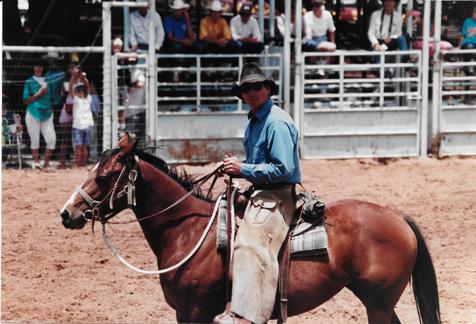

Pat Boone, another past president, noted,” Tom puts thought into what he does. He
studies issues, pays attention, knows his way around the Federal Register, and has been a astute, steady leader.”

Though his druthers might have been to stay on the JX, Tom has taken the time to serve his community and the industry. He helped form a Coalition for Renew able Energy Landowners Association in New Mexico.
He convinced Quay County to form a Natural Resources Com mittee and served as chairman of the Southwest Quay Soil and Water Conserva tion District. While in this capacity he proposed that ranchers get their wells mea sured annually to protect their right to use the water.
“In my mind, the government will create a crisis like they did with COVID and scare the heck out of a population, then propose that agriculture mitigate that crisis,” he explained. “I think it is just a matter of time before this happens, so I want every rancher to have the data so they have something to

stand against the government’s dictates.”
Tom is also a member of the Board of Trustees for Mesalands Community College and just stepped down from the local hospi tal board. He serves on the Linebery Policy Center at New Mexico State University, helping ranchers influence public policy concerning natural resources.
“He is passionate and dedicated when he takes on a job,” stated Mimi. “He commits himself and spends an inordinate amount of time researching and doing more than is expected.”
But she added, “Grazing management and drought management are the overriding
passions of his life, and he likes to help people with range and drought management.”




A family joke is that if Tom ever accompanies Mimi to a large town, she is the one that goes shopping and he stays out in the pickup, like the cow dog in the back of the pickup, growling at the individuals walking by.
But the joke is only funny if the hearer knows Tom’s kind and giving personality, and how much of himself he gives to help others.

His life’s work and his passion has been building on what he learned from his father, his time at NMSU, and the lessons life has taught, as well as incorporating professional information to manage the range and raise healthy cattle in New Mexico’s often inhospitable and difficult terrain.
To this foundation, Tom adds use of solar power and satellite imagery to build a data base which proves that the more natural way is also more scientific. Combining a lifetime of knowledge with new technology makes Tom the cutting edge cowboy cele brated and lauded by peers as their 2022 Cattleman of the Year. ▫

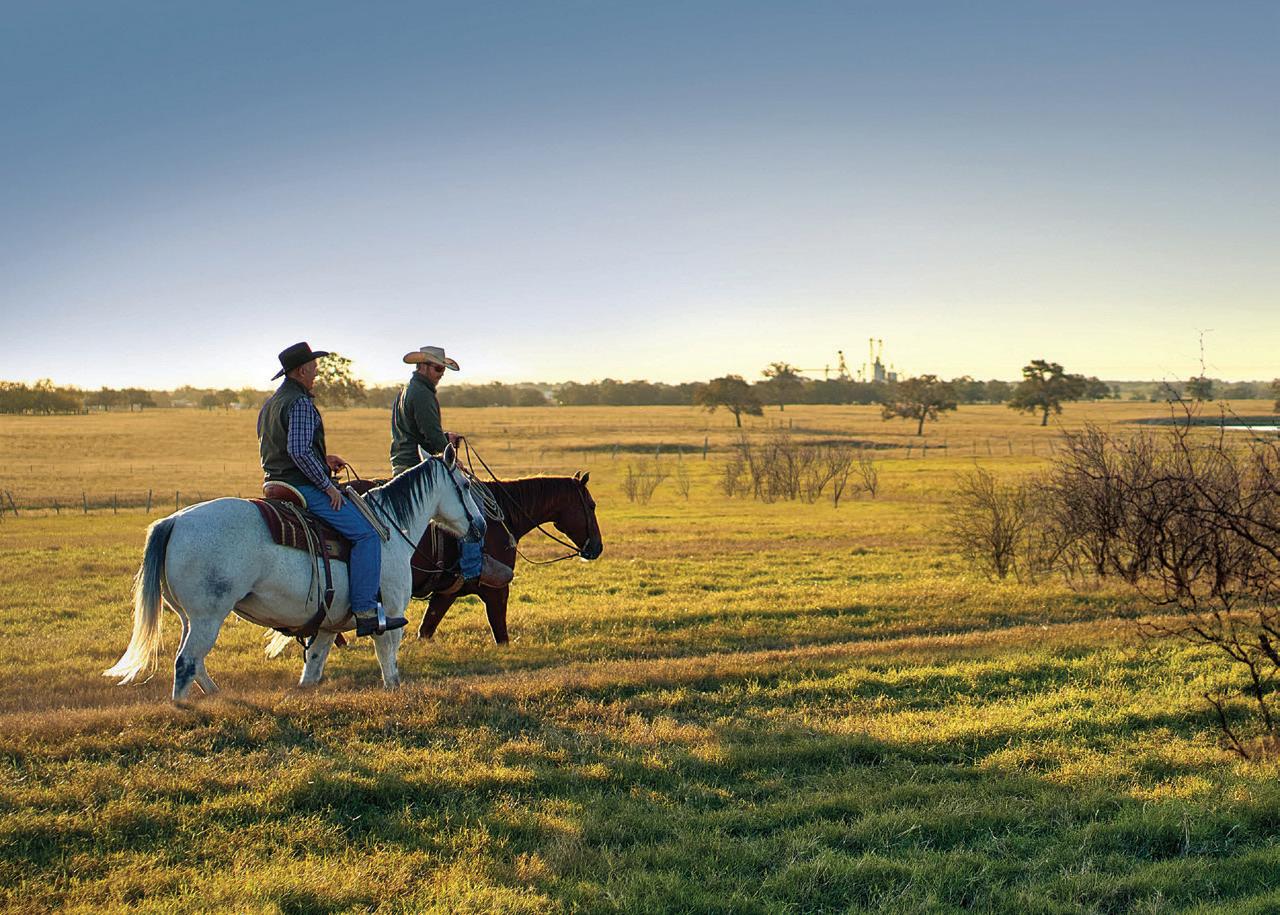




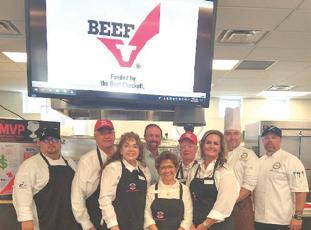




The New Mexico Beef Council provided an all-inclusive Beef class to the CNM Culinary 1112-level students. Executive Chef Scott Clapp, Program Chair Culinary Arts, Beverage and Hospitality Management, School Business, Hospitality & Technology and Executive Chef Erkut Karatas, Culinary Instructor welcomed us into their culinary classroom labs. The NMBC Beef Team included Dina Reitzel, NMBC Director; Patty Waid, NMBC Education Specialist; Kate Schulz, RD, NMBC Dietitian; and Beef Specialists, Tom Bertelle and Daniel Chavez. Cole Gardner, NMBC Chairman and Beef producer from Yeso, NM, provided insight to the students on the beef industry from a rancher’s perspective.
Instruction included hands-on fabrication of a beef rib primal, beef grilling demonstrations, videos and classroom instruction. Students were treated to beef samples to illustrate moist heat cooking and dry heat cooking techniques, as well as tips on grilling a great steak! Each culinary student received a collection of Beef resources including Beef in the Culinary Classroom- a binder full of information supporting all the presentations. Students were introduced to beef’s nutritional
and health benefits as NMBC Dietitian Kate Schulz reviewed recent research and information. Students learned that beef is a naturally nourishing food and is consumed in a variety of dietary patterns. Presenters provided tips on choosing lean beef cuts, portion sizes, and the importance of pairing fruits and vegetables with beef. NMBC Director Dina Reitzel dispelled common myths about beef and presented factual research and statistics supporting beef’s nutritional benefits.
The in-depth, five-hour class covered the Beef industry from “Gate to Plate”. Subjects ranged from Beef production and sustainability to Beef’s place in the foodservice & retail industries, Beef grades and differences between natural, grass-fed and organic Beef. NMBC Education Specialist, Patty Waid was pleased with the Council’s first engagement at CNM and says, “Our goal is always to ensure the students walk away with a solid understanding of Beef from ‘A to Z’ and knowledge of the hardworking families who raise the Beef.” As one student stated on her evaluation form, “I had a great time and learned a lot. I loved this class”! Mission accomplished!
A big thank you to the NMBC Team and CNM staff for this opportunity: (L-R, Back Row) CNM Chef Jerome Aragon CNM, Daniel Chavez, NMBC Beef Specialist, Cole Gardner, NMBC Chairman, Tom Bertelle, NMBC Beef Specialist, CNM Chef Erkut Karatus, CNM Chef Ray (L-R-Front Row) Patty Waid, NMBC Education Specialist, Dina Reitzel, NMBC Director, Kate Schulz, RD, NMBC Dietitian.
John Heckendorn, along with his wife, Cathy, raises registered Angus cattle on the J-C Angus Ranch in Moriarty. The couple lease pasture in Tucumcari and have a satellite herd in Estancia as well. John and Cathy have been performance testing bulls since 1981. They joined other progressive breeders in a GrowSafe system which has led to the J-C Ranch breeding 13 of the top 25 performing Angus bulls on test last year. The couple has four children, one granddaughter and another
grandchild on the way. John grew up on a farm and ranch in Tucumcari that was homesteaded by his Great Uncle. He attended high school in Tucumcari then college at NMSU. “We love being able to live our dream of ranching and pursuing excellence with improvements to our herd over the years,” says John of his family. When he’s not ranching, John enjoys being active with his church, reading all types of books and watching the Dallas Cowboys.
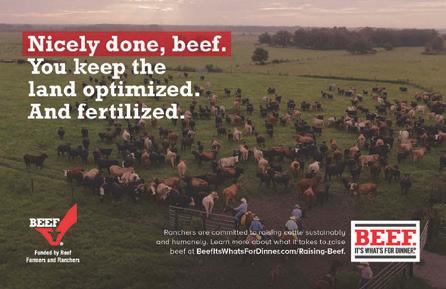
Today, more than ever before, consumers care about where their food comes from. They want to know about its environmental impact. They worry about whether livestock animals are treated humanely. They want to know if their food is nutritious and safe to eat. And they will change their eating – and purchasing – habits based on all those factors. The topic of sustainability is changing how all industries do business and communicate with their customers, and the beef industry is no exception. It can be difficult for producers to wrap their heads around the fact that most consumers never visit a beef ranch in person. They don’t always see the care ranchers put into raising beef. Telling the beef sustainability story to consumers has never been more important. The Beef Checkoff conducted extensive market research to fully understand consumer perceptions of how beef producers care for the land and what key topics would resonate most with that audience. Survey results indicate that:
• About 50% of consumers say they care about beef’s impact on the land and environment. However, they still cite taste, safety, appearance and price as more important considerations when making meal choices.
• Almost half of consumers have a positive perception of beef production.
Unfortunately, they still perceive the beef industry to be less sustainable than other food industries.
• Animal welfare, by far, was the most important topic to address with consumers when it comes to beef and how cattle are raised.
Acting upon the survey results, “Beef. It’s What’s For Dinner” launched a beef checkofffunded campaign in 2021 called “Rethink the Ranch.” This campaign introduced the public to beef producers who make sciencedriven decisions that will keep their herds, environment and businesses healthy enough to pass on to the next generation. The campaign’s goal was to increase consumer confidence in beef and beef production by inviting consumers to learn more about how beef producers care for the land, their animals and their local communities. These efforts actively engaged consumers by providing in-depth content and rancher stories. Nearly 97 million people saw Rethink the Ranch content, and its videos were viewed almost 60 million times. On social media platforms, content generated approximately 67,000 comments, reactions and shares. The Rethink the Ranch page on Beef. It’s What’s For Dinner website was viewed more than 80,000 times, and the campaign’s audio ads were heard nearly 16 million times. Obviously, this campaign reached a lot of people with the truth about how responsibly beef is raised.
Myth: The Cattlemen’s Beef Board hides how Beef Checkoff money is spent.
Fact: In addition to constant USDA oversight, the Cattlemen’s Beef Board is required by law to provide annual financials to the public ensuring it meets the requirements of the Beef Promotion and Research Act and Order. The December issue of the Bullhorn will include the audited financials for the CBB, State Checkoff and State Assessment. Financial transparency is important to CBB… and that’s the truth of the matter.
Myth: The Cattlemen’s Beef Board simply writes a check to contractors, and we never see if these programs were successful
Fact: Contractors never receive any Checkoff funds upfront. All funds are on a cost recovery basis. First, they must complete programs as approved by the Cattlemen’s Beef Board with their own money and then they may submit their invoices to receive reimbursement. CBB staff then ensures these expenses match what was approved by the Board in addition to meeting the requirements of the Act
when approved by CBB staff do the contractors get reimbursed. Additionally, program evaluation
Order.

each quarter ensures
programs are on-track and successful… and that’s the truth of the matter.
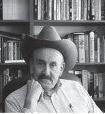


Gunfights on the frontier of the Amer ican West rarely, if ever, took place as they are often depicted in movie and television westerns. One that occurred in Tucumcari, New Mexico, in 1906, only a few years after the railroad town was established, demonstrates the point. This appeared in the Tucumcari News for Saturday, December 29, 1907.
“MARSHAL LAWSON KILLED BY CONSTABLE HARDWICK City in Mourning Over Horrible Incident— All Business Suspended For Funeral
“What terminated in one of the most deplorable tragedies in the history of our city occurred at the Legal Tender corner Wednes day at about 11:00 o’clock when Constable Sam W. Hardwick shot and mortally wounded City Marshal John M. Lawson.
“The officers had some difficulty regard ing arrests they made on Christmas night and from the most reliable information we can get, Hardwick, while drinking heavily, followed Larson up on Wednesday morning and demanded further explanations and became abusive as the argument was extended. Lawson declared that he could not take further abuse from Hardwick and drew his pistol, at the same time saying he was ready to settle the matter.
“They were prevented from fighting by friends, who immediately interfered, and Justice of the Peace Jas. Lawson, the mar shal’s brother, who held him and Sheriff J. A. Street took Hardwick outside, and was prom ised by Hardwick that he would not shoot if he would turn him loose, the Sheriff think ing Hardwick would drop the fight left him and turned to ask Lawson to say no more. Hardwick followed up and like a flash drew his pistol and reached around Street’s body and fired, his aim catching the marshal in his left side three inches below his heart. The bullet passed through his body and fell from his clothing on to the floor as he staggered and fell. He was unconscious until death which occurred in about an hour later. After Hardwick fired, Street turned to him and
to aid in
NMSU is currently partnering

for small ruminants and

with
of the
into their management plan
This workshop will be informative for anyone who would like to
choose. Lunch is provided. Topics will include:

wrenched the smoking weapon from his hand but not before he had again cocked it and pulled the trigger, the hammer falling on Street’s first finger and tearing out its hold as the struggle for the weapon continued. While this encounter was going on Jas. Lawson had secured his brother’s pistol and was dispossessed of it only by wrenching it from his hand by friends who were assisting to stop the fight: as his hold was loosened the rubber handle was broken to pieces and left in his grip. Street in the meantime overpow ering Hardwick and dispossessing him of his
gun took him to jail while Lawson turned his attention to his dying brother.
“We have, since the killing, been told that there has been bad blood between these offi cers since the city elections at which time they were both candidates for marshal.”
The political race in question, the one for town marshal of Tucumcari, took place on August 11, fewer than five months before this fight occurred. Lawson received 47 votes and Hardwick 10.
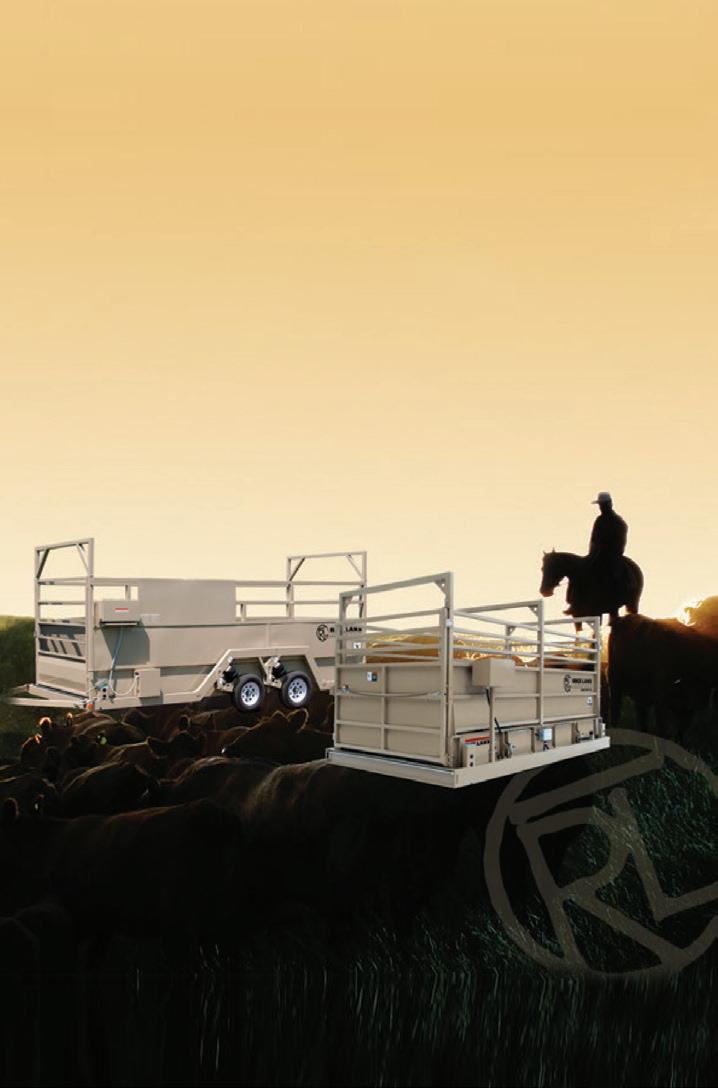

As for the players in this drama, Sam Hardwick had been a resident of the town site since it was established in 1902, and he had served as constable and deputy sheriff
since 1905, when Quay County was created. He served under the first sheriff, Alex Street. He was probably a farmer by trade as he settled on a homestead in 1902, and pre sented his final proof in support of his claim in early 1907 (after the shooting affray). He resigned as constable in January 1907.
John W. Lawson’s name first appeared in the local newspaper in May of 1906 when he announced the opening of his pool parlor in Tucumcari. Nor is there much known about his brother, James, who served at Justice of the Peace at the time of John’s death, but resigned the following month.
The other participant was James Alexan der “Alex” Street, who was at the beginning of long career in New Mexico law enforce ment. He served as Quay County sheriff off and on from 1903 until 1918, with stints as mayor of Tucumcari, mounted policeman and brand inspector before he was appointed to a position with the U. S. Department of Justice, which later became the Federal Bureau of Investigation. He died in 1937.
So far as the gunfight is concerned, and the murder charge against Sam Hardwick, the matter dragged on in the courts for more than a year and a half, until the 13th of October, 1908. The trial transcripts have been lost to history, but the closing para graphs of the jury instructions from Judge Edward A. Mann are offered here:
“You are … instructed that the defendant, Sam W. Hardwick had a right to re-enter the saloon for the purpose of delivering the papers [exactly what papers is unknown] over to the deceased or for any other lawful purpose, provided he did so in a peaceable manner, and committed no overt act in so doing.

“Although you may find from the evidence that the defendant, Sam Hardwick, acted imprudent in re-entering the saloon at the time he did, this would not deprive him of the right to act in his own proper self-defense, provided he committed no overt act after re-entering.
“Should you find from the evidence that the defendant shot and killed the deceased, Lawson, and at the time he did so the defen dant, Hardwick, believed that the deceased was in the act of, or doing him some great bodily injury, you will find the defendant not guilty, although you may believe that the defendant was in no actual danger, and that the deceased had placed his gun back in the scabbard, at the time he was killed.”
The jury took less than an hour to acquit Hardwick. ▫

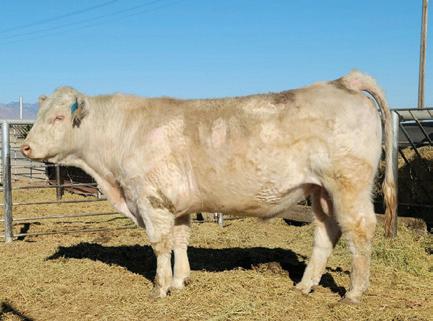
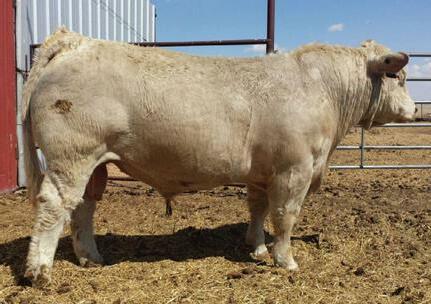
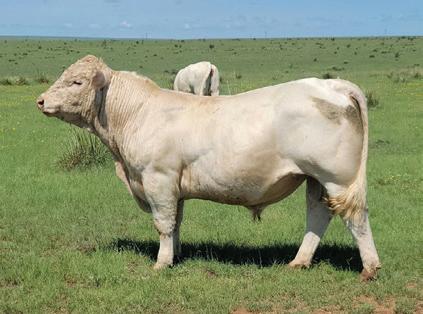
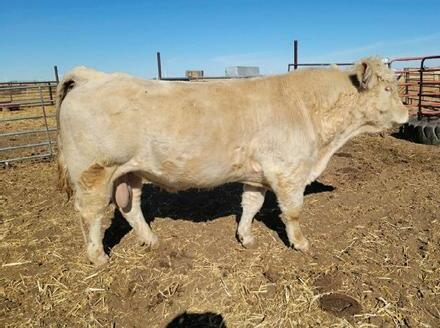
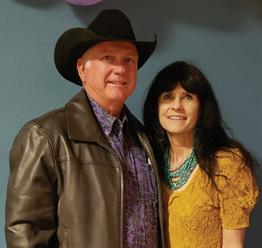

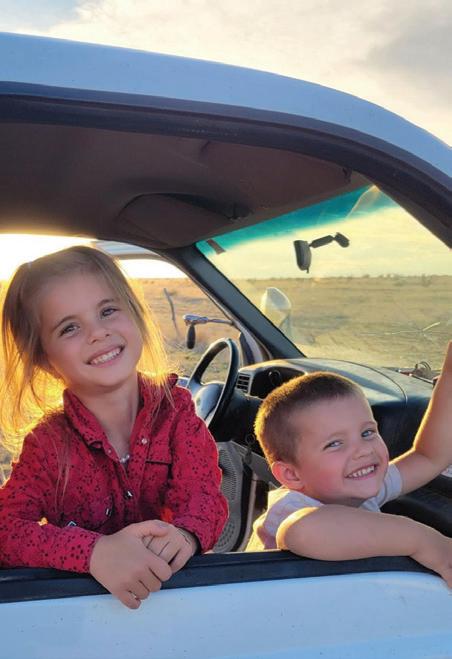
The holidays are here. Shipping off what ever product we produce is usually done or near done. It’s a time of thanks giving for most of us. Rain finally fell over most of the state, and although it came late in many areas, it finally came. We’re blessed to live in a beautiful place with wonderful
people, doing what we love.
Sometimes, we have to search for reasons to feel thankful. We recently had to put down my old mare of thirty plus years. I knew it was time, but it was still very hard. And I was worried about her constant companion, our late son’s old gelding. The old horses had spent their lives together and I was afraid of the gelding’s reaction. The mare had lost an eye, and the old gelding would lead or push her to where she needed to be. She would panic if he got further than three feet away. I wrapped my arms around his graying neck as the mare was led away from him for the last time. As I cried, I realized I was grateful. Thankful she wouldn’t get worse, thankful
This old west phrase says so much in just six words! The phrase is all about choices we make. A friend that sticks with you through good times and bad. A horse that is more than just transportation, but instead, is a partner that anticipates your direction and gets you where you want to go with safety and confidence in every step.
These choices can make or break any person but can be even more important to a cattleman. Strong character, steadfastness and skill are the hallmarks of “one to ride the river with”


All of us at Matlock and Associates endeavor to be just that. It is our goal to give you the same trusted reliance on our “brand” as the legendary brands we serve. We offer integrity, highly trained and experienced staff along with products that give you peace of mind.
PRF (Pasture, Range, Forage) protection has proven itself time and again. We would consider it an honor to consult with you about your 2023 PRF plans.
202
Coverage begins:
we shared so much time together, thankful we could do the right thing. A few days later I am grateful the gelding is accepting that she is gone.
An easier thing to be thankful for is a holiday spent with friends and family. Gath ering to celebrate, share stories and food, warm our hearts. Usually, Dave and I spend a holiday with family, or sometimes with friends or a combination of friends and family. I do hope if you know of someone who may be alone that you will invite them over to share your table and friendship. We’ve had lonely sheepherders who really didn’t speak English, cowboys from a remote cow camp and various others join us on hol idays. For me, part of being thankful for the bounty we receive is sharing those blessings.
If your home is like ours, there seems to be a whole array of pies for holiday dinners. Just about everyone has their favorite, from chocolate to pecan to blackberry. The recipe below will make an easy and great dessert, as it is almost like combining pumpkin and pecan pie yet isn’t a pie. I hope you enjoy it with friends and family.
Ingredients:
1 can pumpkin (15 oz)
1 can evaporated milk
3 eggs
1 cup sugar
1/2 c packed light brown sugar
3 tsp cinnamon, & 1 tsp cinnamon for later
1 tsp dry ginger, and 1 tsp for later
1 TBS vanilla extract
1 package of yellow cake mix, regular size
1 cup chopped pecans
1 cup of melted butter (not margarine)
Directions:
Preheat oven to 350. Place in a large bowl the canned pumpkin, milk, eggs, both sugars and 3 tsp of cinnamon, 1 tsp of ginger, vanilla, along with a pinch of salt. Mix well, I use a wire whip. Pour into a 13 by 9 inch pan that has been sprayed with non-stick spray.
3
For more information, or to receive a customized quote for your operation, please contact:
J.P. Senter, Agent (806) 215-5155 shoestringcc@yahoo com
Bill or Will Phinizy, Agents (432) 271 2988
wephinizy@yahoo.com
Tommy Eppers, Agent (575) 420-7431 teppers111@aol.com
In a medium size bowl (or just rinse out the bowl you just used) place the dry cake mix and the remaining 1 tsp of cinnamon and 1 tsp of ginger. Mix well with a dry whisk or fork. Sprinkle this dry mixture over the pumpkin filling in the pan. Sprinkle on the pecans and drizzle the melted butter over the top.
Bake for about 50 minutes or until golden brown. This is good served warm or cold and I usually cut it into squares and serve it with a dollop of whipped cream. ▫
Tamra S. Kelly, Broker

(928) 830-9127
• tamra@aglandssw.com
Tad M. Bryant, Associate (928) 642-0317
• tad@aglandssw.com
Stevie Fletcher, Associate
(928) 231-9410
• stevie@aglandssw.com
Laurie Gosney, Associate (480) 323-0639
• laurie@aglandssw.com
NEW LISTING! Triangle C Ranch - Reserve, New Mexico – **Great Opportunity** - Working cattle ranch located east of Reserve, New Mexico in prime grazing lands. This 625 CYL ranch is located in gentle, rolling grasslands consisting of 2,320 +/- deeded acres, a private lease and a 25,055 acre BLM grazing allotment. Many improvements including two homes, bunk house, hangar, air strip, large shops and working facilities. $5,750,000
NEW LISTING! Cottonwood Springs – RanchRed Rock, New Mexico – The Cottonwood Springs is a beautiful, high desert working cattle ranch located approximately 28 miles north of Lordsburg, New Mexico in Grant County. With a carrying capacity of +/-350 CYL, the ranch con sists of a total of 13,605 acres which includes a combina tion of 1,629+/- deeded acres, 5,839+/- state lease acres, 3,400+/- acres of BLM allotments and a 2,737+/- acre U.S. Forest Service allotment. The ranch is well improved with two homes, shop, corrals, interior and exterior fences, working cattle facilities and exceptional water improve ments. $3,100,000
NEW LISTING! Sliding Diamond, Kingman, AZ. – The Sliding Diamond Ranch is a working cattle ranch with good feed, excellent water and well-maintained improve ments. +/- 15,680 acre state lease located in a checker board configuration providing an equal number of acres available for adverse grazing at no cost to the ranch. The state leased parcels are permitted for 231 CYL. With the adverse and an adjoining available private lease this ranch currently runs 460 CYL. The ranch is well watered with 11 wells and 28 natural springs. A must see! $2,400,000 CASH.
UNDER CONTRACT! Kingman Farms - Kingman, AZ.
– The Kingman Farm is 1,920 acres (83,635,200 SF) of prime agricultural land located on a paved road north of Kingman, Arizona. With ±560 acres previously under drip irrigation and two sections fully fenced, this farm offers a perfect opportunity to grow a variety of cash crops. Historically planted with pistachio trees, the agricultural zoned property is located in Mohave County and offers unrestricted water production via its two irrigation wells. The property offers an excellent opportunity for pistachio growers, other deciduous trees, hay or a variety of cash crops. In addition, the site presents as an ideal location for a solar utility, land or water bank. Offered at $2,950,000
Brian Murray, Associate (520) 954-8940
• brian@aglandssw.com
Ty Kelly, Associate (928) 308-6505 • ty@aglandsww.com
Angela Liest, Associate (928) 551-0330
• angela@aglandssw.com
REDUCED! Sierra Azul Ranch – Hatch, NM. – The Sierra Azul Ranch is located in Dona Ana County, New Mexico. This nice little ranch has been in the same family for over 50 years. The ranch runs 50 CYL and 2 horses on two sections of state land with over four sections of BLM and 520 deeded acres. The deeded land includes a beautiful 160 acre inholding with water and solitude. Good little ranch with good water, great feed throughout the rolling hills and canyons. With locked access and land-owner hunt permits, the ranch presents an excellent Mule Deer hunting opportunity. Offered at $700,000
SOLD! Middle Prong Ranch - Eastern AZ.
– SECLUSION, PRIVACY, SECURITY and SELFSUSTAINING, this turnkey homestead/ranch is located in a remote area of Eastern Arizona. The 40+/- acre deeded inholding is in the heart of the Apache Sitgreaves National Forest. The headquarters includes a three bed room, two bath house, 10’x12’ greenhouse, carport/ machine shed, shop, walk-in box/cooler, 20’ cargo con tainer for storage, and barn with a tack room. Ten acres can be cultivated. Offered at $725,000
UNDER CONTRACT! Baker Property – Deming, NM.
– The historic Baker Property is located seven miles west of Deming, New Mexico north of I-10 and south of the prominent Black Mountain. This property consists of 2,666 +/- deeded acres. Full private access to every part of the ranch is made with ease due to its gentle terrain. This unique property lends itself to multiple uses with a unique setting for farming, an equine facility, and solar energy production. Close to the comforts of town, but secluded from town life. Offered at $1,999,500
UNDER CONTRACT! F Bar Farm - Taylor, AZ. – The F Bar Farm is a 330+/- acre parcel located on the outskirts of Taylor, Arizona in Navajo County. The parcel con tains 2 irrigation wells and 3 stock water wells which have serviced 150 acres of irrigated land. Three phase electric power is at the well heads. With shallow water and good soil, this farm sitting at 5,700 feet in elevation provides a cost-effective opportunity for growing hemp, pasture grass, alfalfa, corn or other cash crops.Alternatively, its excellent building sites and proximity to town also make this the perfect opportunity for a beautiful gentleman’s ranch with irrigated pastures and great views. Offered at $1,296,000
NEW- MAGDALENA MOUNTAIN TOP: 65 acres original patented land located on top of the Magdalena Mountains. Has not been offered for sale in over 100 years. $877,500
COPPER CANYON: 39 acres of beautiful, patented land in the Magdalena mountains. Live creek water, spring, well, electricity, and 15-acre ft water rights. $1,170,000
UNDER CONTRACT: Pitchfork Cattle Company LLC: 34,590 acres located in premier cattle country situated in De Baca, Guadalupe, and Lincoln Counties. $14,326,100

UNDER CONTRACT: Cerro Verde Ranch: 32,721 acres located 50 miles west of Albuquerque. This scenic and diverse ranch offers a great combination of hunting and cattle country. $2,750,000.
SOLD – Tres Lagunas Ranch: 8,797 acres located in Catron County. This ranch produces many different incomes with the hunting, cow/calf operation, and water sales from the commercial well. $9,000,000
SOLD – Elk Crossing Ranch: 5,585 acre all private prime elk, deer hunting and cattle ranch. Located in Catron County. $5,400,000
SOLD – Buck Horn Ranch: 27,905 acres located in Torrance County. $1,700,000

SOLD – Dinner Hill Ranch: 14,269 acres located in Otero County. $1,200,000

SOLD – 47 Hop Canyon: 88 acres and a historical home built in 1910. $680,000
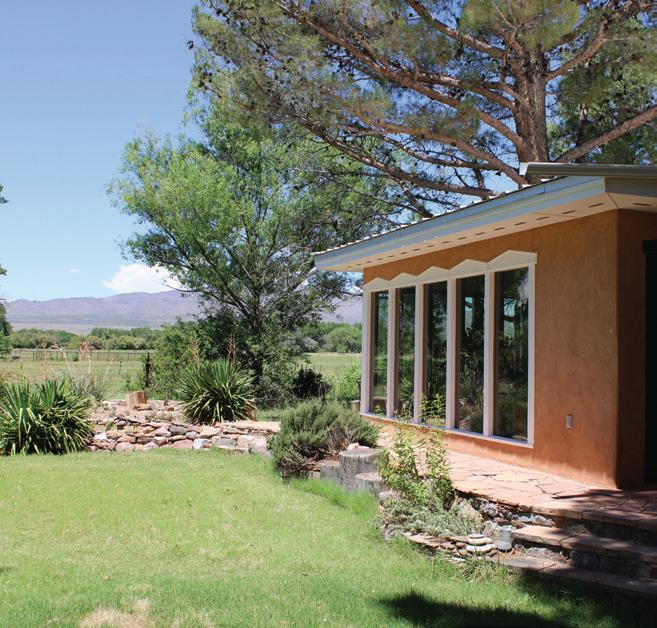
– Maese Farm:

Pre 1907
acres of irrigated
and
Socorro County. $420,000
■ PRICE REDUCED! CEDARVALE, N M –7,113-acre ranch (5,152 ac. +/- Deeded, 1,961 ac. +/- State Lease) well fenced & watered w/good pens, new barn.
■ COLFAX COUNTY NM GETAWAY –1,482.90 ac.+/- grassland (1,193.59 ac. +/- Deeded, 289.31 ac. State Lease), great location near all types of mountain recreation.
■ PRICE REDUCED! UNION CO., N M –2,091.72 ac. (1,771.72 Deeded, 320 ac. -/+ State Lease), well watered w/three wells, two sets of steel pens.
■ ANGUS, NM – 250 +/- acres with over a 1/2 mile of NM 48 frontage. Elevations from 6,800 to 7,200 feet. Two springs along a creek. Ideal for future development or build your own getaway home.
■ PALO DURO CREEK TREASURE – 941 acres +/- in Randall Co. NW of Canyon, Tx. STUNNING VIEWS OVER LOOKING PALO DURO CREEK. Turn-key cow/calf operation w development potential. Property includes: 3/3/3 ranch style home, 4 wells, large shop plus shed, enclosed livestock working facility w/hydraulic chute, livestock pens & shed, miles of 5 & 6 barbed wire fence & over 7000' of pipe fence. YOU WILL NOT WANT TO MISS THIS! Canyon School District.
■ DEAF SMITH CO., TX – 651 ac. +/-, 7 miles N of Dawn, Tx., 1 mile E of FM 809. 349 acres native grass with well-maintained fencing and 302 acres of cultivated dry land.

■ PRICE REDUCED! DALLAM CO, TX –1,216.63 ac. +/- of CRP/ranchland w/ irrigation, re-development potential, wells & pipelines already in place.
■ PRICE REDUCED! LET’S LOO K at these two choices 80-acre tracts of dryland located in close proximity one to the other in Willbarger County near Vernon, Texas.
■ PRICE REDUCTION! TURN-KEY RESTAURANT: READY FOR BUSINESS! –One of the best steak houses in the nation just out of Amarillo & Canyon at Umbarger, TX., state-of-the-art bldg., w/complete facilities.
260 Head Cattle Ranch with 4,612 Deeded Acres, Virden, NM – Solid working cattle ranch with excellent water distribution, good mix of grass and browse ranging in elevation from 4,000’ to 5,800’. 14,980+/- ac BLM, 2,860 ac State Leases and 640 ac of adverse grazing. Takes in scenic Vanderbilt Peak, Mount Royal, and stops just short of Steeple Rock. $2.8M
*SOLD* 200-300 Head Cattle Ranch, Marana, AZ – 112.8 +/- Deeded ac; 150+/- ac of pas ture, 3,700+/- ac of sub-lease, 14 +/- ac of farm fields, HQ on State Land. 2nd mfg home on deeded. 2 sets of good steel pipe corrals $1.9M
horse activities that involve live stock. $825,000
*NEW* 98+/- Deeded Acre Farm, Bonita, AZ – Great little farm in a picture-perfect setting! Two small pivots with 35 acres of water rights. Nicely improved with a newer 3 BR, 2 BA Shultz dou blewide mfg home; 3-sided hay/ machine shed, 1,560+/- s.f. shop with concrete floor and insulated ceiling, hay shed, Connex box, nice set of guardrail and steel corrals with crowding tub, squeeze and scale. 250 gpm irrigation well with 20 HP motor and 13,500+/- gal lons of storage. Raise horses, fin ish out calves, small cow/calf op eration or homestead. Runs about 40 head of cattle. $750,000
ley views. Includes 2-car detached garage, 1,092+/- s.f. metal shop building, railroad car, small barn, fenced and cross fenced. Online Auction to start 12/1 and will end with a soft close on 12/10. Contact Paul Ramirez for details or check out our webpage coming soon.


*SOLD* 40+/- Acre Last Stand B&B Guest Ranch, Sonoita, AZ – An exceptional property in the grasslands of Sonoita, presently operating as a successful wedding & equestrian event venue. The Territorial, twostory 4 BR, 4.5 BA main home has 4,110 s.f., & custom features throughout. $1,675,000
*SOLD* 2,373+/- Acre Farm, Animas, NM – Custom 2560 +/- s.f. home built in 2008. 20Acre pivot, 40’ x 60’ shop, 40’ x 50’ hay barn, fruit trees, chicken coop, garden area. Pivot produced 9.5 tons/ac of alfalfa in 2020. 300 gpm well. 5 pastures with water piped to 2 storage tanks and drinkers in all pastures. Historically has run 40 head of cattle yearlong. $1.3M
*NEW* 12.7+/- Irrigated Acres, Marana, AZ – Irrigated farmland in the heart of Marana, perfectly suited for development. Currently, planted in Alfalfa and at one time was planted to corn. Fields are fenced, flood irrigated from concrete ditches and gates from the Cortaro Irrigation District. Great location near Marana Stockyards for those interested in performance
*SOLD* 1,578 Acres of Land, McNeal, AZ – Currently used as grazing land for an adjacent ranch. Fenced with 2 wells. Seller will split. $500 per acre for all or $650 to $700 per acre for small er parcels. located near the McNeal Farm we have listed above, and could be used as an additional pasture; purchase for investment or build your own ranchette.
*SOLD* 90+/- Acre HP Bar Ranch, Benson, AZ – Perfect gentlemen’s ranch or private get-away. Backs up to USFS for endless riding possibilities. Fully fenced for cattle. 2 BR, 1 BA home; garage; steel barn w/two horse stalls, tack room & large hay storage; corrals; workshop. Expansive views. $595,000
120 +/- Acres of Farm Ground, Willcox, AZ – Located NW of Willcox in a good ground water area. 2 wells. Center pivot. $468,000 Call Harry Owens


*AUCTION* 5+/- Acre Country Estate, Dewey Humbolt, AZ Charming 2 BR, 3 BA 2-story home. Beautiful, vaulted wood ceil ings, loft, floor to ceiling windows in the great room with expansive val
*SOLD* 20+/- Acre Eques trian Property, Sonoita, AZ Established horse training and boarding facility on +/-20-acres adjoining BLM land, panoramic mountain v iews. Two mfg homes, 36’ x 160’ horse barn, barn/ shop, equipment shed, hay shed, 10 shades/loafing sheds with cor rals, +/-70’ x 90’ dressage and 160’ x 170’ fenced arena. There are also RV spaces with septic, a fire pit and a well. $650,000

740 ± Acres of unimproved native grassland located four miles west of Roswell in the Six Mile Hill area with frontage along U.S. Highway 70/380. This parcel is fenced on three sides and adjoins 120 acres of additional land that may be purchased. Great investment. $600 per acre.
DOUBLE BAR R RANCH, NOGALES, AZ — 110 deeded, w/12,224 NF Grazing land, runs 380 yearlong, Great improve ments, high rain area. Priced at $3,500,000
RS RANCH GLENWOOD NM
Excellent small cattle ranch located in southeastern New Mexico approximately 50 miles northwest of Roswell on the Chaves/ Lincoln county line. 7,455 total acres with 2,600 deeded with the balance federal BLM lease acres. Permitted for 151 animal units yearlong with an additional 30 animal units on a temporary nonrenewable basis. Watered with two wells and several miles of water pipeline. Two larger open draws run through the ranch that provide overflow areas to enhance grazing. The terrain is open and rolling with good turf. The ranch has had good summer rains with no cattle since last spring. The ranch is in excellent condition. Call for a brochure and come take a look. Price: $1,350,000
Scott McNally, Qualifying Broker Bar M Real Estate, LLC
P.O. Box 428, Roswell, NM 88202 Office: 575-622-5867 Cell: 575-420-1237 Website: www.ranchesnm.com
SOLD— 44,233 total acres consisting of 119.6 deeded acres and 44,113 acres Gila National Forest Grazing Allotment. Ranch will run 650 head mother cows yearlong and 18 horses. San Francisco River Runs through the Ranch, great improve ments. Priced at $4,900,000
TYLER RANCH/FARM — York Az, 544 deeded with 173 irrigated, along with 14,000 state and Blm lease land. 300 head mother cows yearlong. Priced @$2,300,000
If you are looking to Buy or Sell a Ranch or Farm in Southwestern NM or Southern AZ give us a call ...


Sam Hubbell, Qualifying Broker 520-609-2546

APACHE MESA, LAS VEGAS, NM: 227 acre parcel off Hwy 84 has two stock tanks, rim rock views, 2 stock tanks, power & fiber optics available. List price: $354,400 & OWC
DEMING, NM: 2050 Clabbertop Road off I-10 - 268 deeded acres w/airstrip & metal hanger, cold water well, overhead power & 3 RV pads! Located 10 miles west of Deming off I-10 frontage road. Price: $329,900
DEMING, NM: At the end of Baker Road, selling 1,120 deeded acres w/ power, good access off north I-10 frontage road. Parcel can be used for ag crops, subdivision, power projects. Price: $600,000
VILLANUEVA, NM: 305 CR B29A 87 deeded acres has 3 legal lots of record w/100 gpm shared well. Power on site & fenced on 3 sides, motivated seller! Price: $142,500
VILLANUEVA, NM: 279 deeded acres has overhead electric, perimeter fenced, good stock tank. Juniper & pinon tree cover w/some ponderosa! Great gramma grass cover right now! Asking $223,200 OBO
SOUTHERN SANTA FE COUNTY: Calle Victoriano parcel is 640 acres w/ power & good water well onsite! Price is $548,900 Located in Kings Draw in the Estancia Basin off Simmons Rd. Can be subdivided. No restrictions & mfg. homes ok.
TIERRA DE DIOS:20 acre parcels south of Rowe, NM are now on the mar ket. We are selling 3 lots with airstrip for those wanting fly-in homes



$149,900 to $154,900
parcels have underground power, fiber optics, community water and are ready to build!
CAPULIN -SIERRA GRAND VIEW, Union County. NM. 520 +/- deeded acres with HQ 1.5 miles off highway, 3 bedroom 2 bathroom home with landscaped yard
volcanic rock walls, nice outbuildings, 3 registered wells including 1 registered as an irrigation well and an excellent solar well. Close proximity to Des Moines, NM. $898,000

DES MOINES, 336.58 +/- Deeded Acres Union County NM – 3 bedroom 2 bath home, 32ft X 30ft metal building on slab. 62 ft X 12 ft metal barn, one big pasture off highway. Mixture of open grass range and trees. Less than two miles to town. $575,000
MAXWELL 45, Excellent irrigated pasture with utilities in back of property, including installed septic system, with private views of mountains. 40 irrigable acres and a domestic water meter installed. Great to put down home and bring horses. $249,000
BAR LAZY 7 RANCH, Colfax County, Moreno Valley 594.38 +/- deeded acres, accessed off blacktop between Eagle Nest and Angel Fire. Historic headquarters.
Currently used as summer grazing, pond and trees accessed off county road on rear of property as well. Presented “ASIS” New Survey, $4,000,000 $3,800,000
UTE PARK RIVER PLACE 6.83 +/ACRES, 450 +/- feet of the Cimarron River and more than that of Ute Creek are the south and east boundaries of this unique one of a kind water property. 2 bedroom 1 bathroom cabin, year round access off Hwy 64. $589,000 $570,000

CIMARRON BUSINESS, Frontage opportunity, house, big shop and office buildings, easy view off Hwy 64. Formerly known as “The Porch.” $295,000
MIAMI 40 ACRES, Colfax County NM, private 2 bedroom getaway with elevated fantastic view, nice porch, little casita, irri gation and pole barn. Extremely private setting. Right below mesa. $450,000
COLFAX TAVERN & DINER, Colfax County, NM. Aka “COLD BEER”, turn key legendry regional icon and destina tion, with anchor staff/team willing to stay on. Prime business on front range. $1,500,000





■ CATTLE RANCH SE of Deming: NM 2,900 +/- acres total, 2,500 +/- acres of deeded land, including 71 +/- acres of water rights with a priority date 03/03/1945. 240 +/- acres of NM State Land, 160 acres of adverse land. Priced at $1,200,000
■ HAWKEYE CANYON RANCH: Organ, NM 4,527 +/- acres &/or 7 +/- sections 35 AYL, 4,316 +/- acres of BLM, 191 +/- acres of NM state land, 20 +/- acres of deeded land, 1,600 sq ft house with granite counter tops, 2 bedrooms, 2 baths, metal roof, plus 1 bed, 1 bath casita w/carport, barn, corrals, excellent views, minutes away from Las Cruces, NM Priced at $635,000
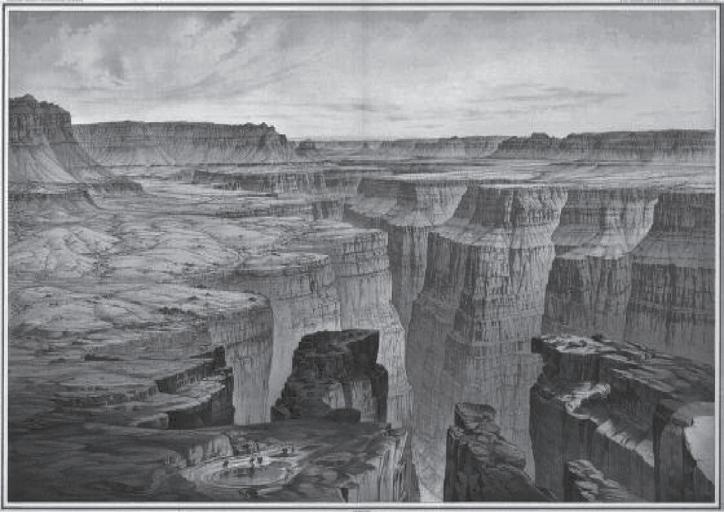
■ WHIRLWIND ROAD: The farm is located south of Deming, N.M. Irrigation well, priority date 06/02/1952 The farm is improved with a filter station, irrigation well and perimeter fencing 236 acres +/- in total, with 142.82 acres of irrigated farmland and 93.16 acres pastureland. Priced at $200,000
■ CEDAR GROVE RANCH: 37 section cattle ranch, Deming, NM. 23,714± total acres, 1280± acres deeded land, 2632± acres of state land, 19,802± acres BLM, excellent water system, seven solar wells, 180,000 gallons of water storage, 333 AYL, 6± horses.
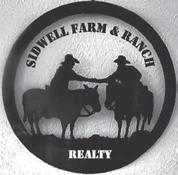


■ RAINBOW WASH NORTH RANCH: 17 section cattle ranch located between Lordsburg and Animas, NM in the Pyramid Mountains. 11,383± total acres, 640± deeded land, 3477± of state land 7266± acres of BLM, four wells, 112 AYL

P.O. Box 1980, St. Johns,
602-228-3494

NEW LISTING! Skully Creek Ranch: 94 AU with 1,440 deeded acres, state and federal leases in Greenlee County approximately 40 miles northeast of Safford, Arizona. The ranch is located just over four miles off the paved highway along and lies along Skully Creek. The headquarters includes an adobe, two-story rustic ranch house overlooking the cottonwood lined Skully Creek Canyon with amazing views of Hells Peak in the distance. This is a real nice “off-gride” property with private, solar powered well. The deeded land location and physical features provide privacy and mountain views. Price: $1,600,000
NEW LISTING! Indian Springs Ranch: 52 AU with 1,480 deeded acres, BLM grazing lease in Cochise County approximately 14 miles northeast of San Simon, Arizona. The ranch is located just over 12 miles off the paved highway at the end of Indian Springs Road in the Peloncillo Mountains. Headquarters improvements include two ranch houses and horse corrals with shades. The ranch is very private and secluded with lots of water. Livestock water is provided by numerous springs and three private wells. The water wells are pumped via solar with water levels all less than 100’. Private land controls access to thousands of acres in the Peloncillo Wilderness. Price: $1,400,000
NEW LISTING! Hunt Valley Farm: West of St. Johns in Apache County, Arizona, includes 891 deeded acres in total with 210 acres currently irrigated via center-pivot sprinkler and gated pipe flood irrigation. Shallow wells on land-line electricity with room to expand the irrigated acreage. Currently used as a grow yard/ heifer development facility with corral/bunk space for approx. 950 head. Buildings include a remodeled mobile home in good condition, farm office and large metal shop with commodity storage under roof. This is a nice production farm located directly off the paved highway situated at 5,400’ elevation. Price: $1,500,000 ESCROW!
CONTACT: ST. JOHNS OFFICE: TRAEGEN KNIGHT www.headquarterswest.com email: info@headquarterswest.com






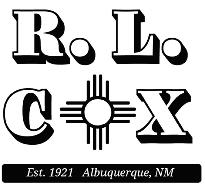





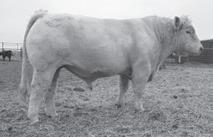



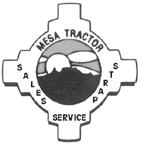
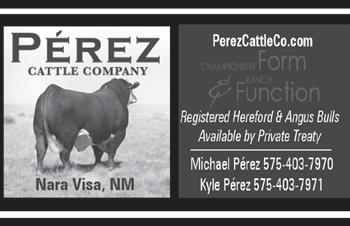
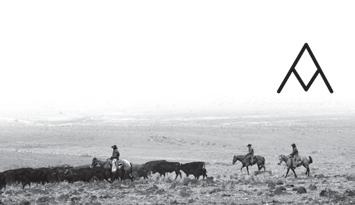














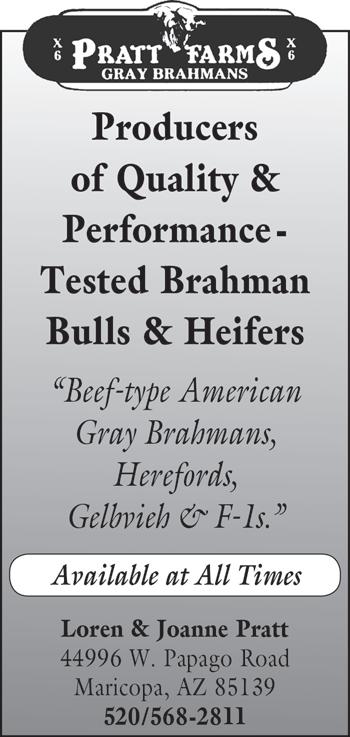
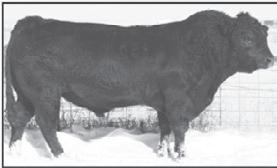
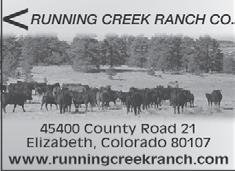



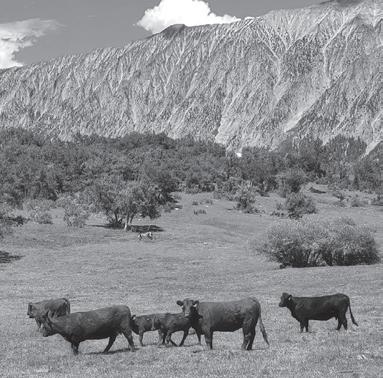

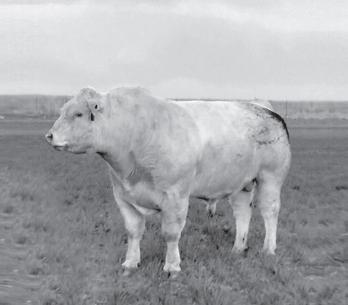


The U.S. Environmental Protection Agency (EPA) has released 20 Climate Adaptation Implementation Plans that were developed by its major offices, includ ing national program offices and all 10 regional offices. These Implementation Plans reaffirm the strong commitments made in EPA’s 2021 Climate Adaptation Action Plan to address the devastating impacts of climate change on communities across the nation, while advancing environ mental justice and equity. They provide details on the specific actions each office will take to protect human health and the envi ronment and to increase the resilience of the entire nation as we face increasingly harmful impacts of climate change.
President Biden has set the most ambi tious climate change mitigation and adaptation goals in U.S. history, and EPA plays a central role in delivering on those commitments. With the 20 new Implemen
tation Plans, EPA will continue to use its authorities and resources to help communi ties prepare for the serious climate impacts that are already underway.
These plans are being released as EPA works to implement the largest investment in the nation’s history to tackle the climate crisis – President Biden’s Bipartisan Infra structure Law and the Inflation Reduction Act. Under these laws, the Agency is making historic investments to strengthen our nation’s resilience to climate change, while reducing harmful air pollution, rebuilding critical community infrastructure, advanc ing environmental justice, and saving families money on their energy bills.
Building on this progress, the 20 Imple mentation Plans shared today provide a roadmap for the specific actions the agency will take in the years ahead to ensure it con tinues to protect human health and the environment even as the climate changes,
and to partner with states, tribes, territories, local governments, and communities of all sizes to strengthen their ability to anticipate, prepare for, adapt to, and recover from the impacts of climate change. The plans include over 400 commitments to ensure clean air, water, land, and chemical safety even as the climate changes. They also identify strategies that deliver co-benefits for mitigation of greenhouse gases and other pollution, public health, economic growth, national security, equity, and environmental justice—all central to building a more resilient future.
The Implementation Plans recognize that climate disruption often hits already over burdened communities and people the hardest. The plans also consider the dispro portionate impacts on those who are already overburdened and underserved in our society, including low-income communities and communities of color, children, the elderly, tribes, and indigenous people. EPA is already engaging and will continue to engage with underserved and vulnerable communities to ensure actions taken follow the principles of environmental justice and equity. ▫

Being a rancher’s wife has been a reward ing experience, that I would not trade for anything. I was not raised on a ranch; ranch life was a new concept for me. Newly married, living in a new place, meeting new people, and figuring out a new life. Ranching is love of the land and animals you are caring for. The agriculture commu nity is very small, it may stretch over several states, but if you work in agriculture, you know a majority of the other farmers/ ranchers.

Ranching is a yearlong job, it varies how the year folds out by where you live, because of the weather. In every division of agricul ture, you live by what the weather does. If you have moisture, rain or snow, you have grass or crops to feed animals with. If you don’t have moisture then you figure out something else to feed your animals, like hay or different forms of feed. In Central New Mexico, early winter months are usually pretty cold. So, there are very few babies, calves or foals, born in these months.
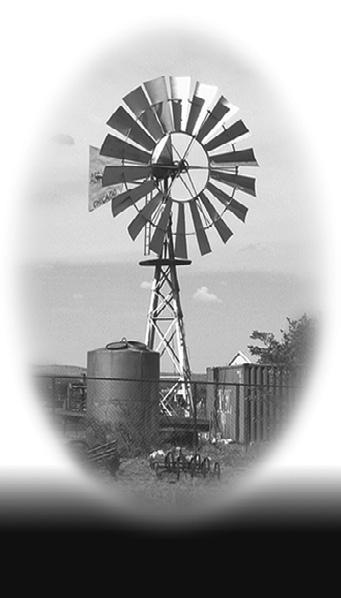
I have had my share of baby calves in my laundry room that were born in a snowstorm and need a little tender loving care. Next thing you know we are heavy into Spring; this means calves and foals being born everywhere!
What a great time of year, those babies are so cute! Branding season sneaks up on you before you know it. This is where we brand, vaccinate, castrate, and ear tag our calves. Please do not think we are being mean to them. The calves are roped, dragged to the fire, and up in less than 30 seconds!
All the things we do to them is for their health and the health of the herd. We brand to show ownership. We vaccinate for the health of the calf, stimulating their immune system to be prepared for the diseases they come into contact with. Castrating bull calves keeps the herd healthy by choosing breeding animals. Ear tags can serve differ ent purposes, but mostly fly control and identification for calves.
Branding is a big day for ranchers. We need a fairly large crew to complete the tasks of the day. An average branding on our outfit is around 200 head, but we may have to gather several thousand acres to get them together. This will take about 12 to 15 people
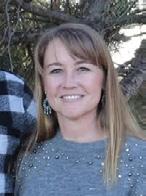
to make this happen. Most ranchers do not have this many employees that they can draw from.


So, they enroll the whole family; wives and children and even the neighbors. Wives of ranchers wear many hats; they fill in to help their husbands out wherever they need help. This could be mugging the biggest cow that her husband can rope, bouncing on the end of a rope because the cow has mastitis and her calf is hungry. Or making breakfast and lunch for a crew of 15, and flanking calves between running to the house to stir the pot. Children when they come of age are given the job of vaccinating or ear tagging. As they get bigger children are taught to rope and drag calves, and in their adolescent years taught to flank. But a ranchers’ truly most invaluable asset is his neighbors.
Neighboring ranchers have the same problem of not having enough help. So, neighbors trade help with each other to get the job done. When you are trading help, the whole family goes. This is not only work but a fun fellowship between friends and family.
Neighbors are needed all year long. When a rancher has to be gone overnight or over the weekend the neighbor checks water and fences while the rancher is gone. And the rancher will in turn do the same thing for his neighbor. Helping each other help them selves. Neighbors are family, not by blood, but they are there any time you need some thing. They are even at Christmas dinner, there when a baby is born, or a family member goes to heaven neighbors are always there.
In the hot summer months, we are check ing water every day and making sure there is enough water and grass for the cows and growing calves to fill their bellies. If not, we are moving the cows to a place where there is grass or water which they need. In years of drought, we can move our herd a lot.
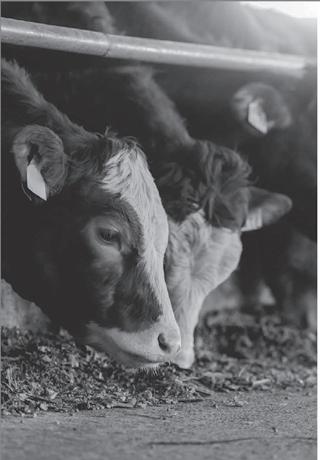
By the time fall rolls around the weather is getting colder, but the calves are ready to be weaned off of their mamas. Again, we are going to need the help of our neighbors. Gathering the same pastures as branding time. Bringing the herd together to strip the calves off and pregnancy check the cows. By Christmas time the work is finished and we can take some time off before gearing back up to start all over again. Producing beef for the whole country. We are proud of the product we produce. ▫




Our beloved Mother and Grandmother, GERALDA MIRANDA CHACÓN,
passed away peacefully, fittingly sur rounded by her devoted family on September 26, 2022. Geralda (Mom, Mama, Grams and Geri) was 96 years young in mind and spirit, and worn-tired from a life well lived. She was an exceptional woman who devoted her entire life to God, her faith, her family and was meticulous about her work both in her home and her professional career.
She was born to Emilio and Francisca Madrid Miranda in the village of Lincoln, New Mexico. She felt deeply blessed and was ever grateful for the gift of loving-devoted parents, a happy home and being eighth of twelve siblings, eight girls and four boys. She remembered each of her sisters and brothers with a birthday card that she sent well into her 90’s and until her last day, always included her parents and each sibling in her morning and evening prayers. Her large family provided a lifetime of love, happiness, and security. Fulfilling a promise to their Mother to keep the siblings close, the Miranda Family Reunions became a tri-an nual event lasting two days with upwards of two hundred children, grandchildren, and great-grandchildren in attendance. For over four decades the reunion tradition continues to be a much anticipated family event.
Mama was a good student and a voracious reader her entire life. She attended elemen tary through 8th Grade in Lincoln, graduating as Class Valedictorian. Upon her parent’s retirement to Las Cruces, she returned to Lincoln and lived with her Sister Ofelia’s family, helping with her much beloved nephew, Arturo. She graduated from Capitan High School. Mama was a product of the Great Depression and World War II. She often said that while her family didn’t have a lot, they had the essentials and she never felt poor. She worked hard all her life beginning with chores at home, helping her father in the post office and helping her Grandmother Lorenzita, plant, hoe and weed her garden which provided essential produce for their large family. As a teenager, she babysat her younger siblings, nieces and nephews, and neighbor children. After grad uating, much to her regret, she did not attend college. She said, “I wanted to go to college, but I knew Dad would do everything possi ble to help me financially, and I didn’t want my younger sisters and brothers to do without”. She moved to California to work
with Western Union during the war and lived under the protective eye of her oldest Sister Neli and brother in law, Cipriano. She forged a close bond with her young niece, Marcia, taking care of her, sharing her rationed coupons to keep Marcia in shoes and cringing at Marcia’s tattle tale antics with Mama’s dates. Their special relation ship grew and carried through Mama’s passing.
Mama enjoyed a long and successful career. She began her career in 1949 as Assis tant Post Master in Cebolla, New Mexico. In 1953, she began working at the Atomic Energy Commission (AEC) in Los Alamos, NM, an important post war federal agency in charge of the nation’s security during the Cold War. She started as a File Clerk and Clerk Typist and quickly rose in rank in the Visitor Control & Badge Unit. Visitor Control was responsible for researching cre dentials and processing all domestic and foreign visitors (scientists and personnel) to and from the Los Alamos National Labora tory (LANL) and all national laboratories across the country. Her job required the highest level of U.S. government security clearance. Eventually, she became a Security Specialist and was trained to interview and investigate personnel that were possible security risks and those applying for clear ances. Her greatest honor was being selected one of three women in the nation for an additional security detail, that required training and qualifying with firearms and assisting in detainment. She was required to be in uniform and assist with all presidential visits. She retired as a GS-9, on February 29, 1980 with 26 years of faithful service to her country. Mama enjoyed her career and met many lifetime friends in the workplace and across the United States.
Mama’s most treasured accomplishment was her family. She was married to Charlie Chacón for 75 years, until his death in 2020. Mama fondly remembered arriving in Cebolla on the mail/passenger bus to meet her new family, to find the entire town of Cebolla all dressed up in their Sunday best waiting to meet and welcome her! She fell in love with the community and the people of Cebolla.
They were blessed with three sons, Carlos, Claudio, and Gerald and their daughter, Dina. Together, they raised our family and through hard work and much sacrifice they followed their passion for ranching and pur chased our ranches one place at a time, buying the first piece, The Piñavetal, from our grandparents, Maximiana and Patricio Chacón, and over time buying additional properties, including The Esperanza, the
farm in Espanola, and the cattle. Mama and Daddy held down two full time jobs and worked tirelessly to support us children and maintain and grow our operation, driving from Los Alamos or Espanola to Cebolla on Friday evenings, to work cattle, tend to horses, build fences, irrigate, maintain the houses and back again late on Sunday eve nings to be ready for work on Monday. Mama was extremely organized and made the endless number of trips with kids, dogs and plenty of groceries. She paid the bills, kept the books, prepared the taxes, and meticulously maintained her filing system until a few years ago. Daddy told us the story of a young man who asked him how he had managed to purchase the ranch and the farm, and Daddy proudly said, “My wife worked!” It was a true partnership.
The greatest gift our Mama and “Grams” gave us was her unconditional love. Each time we called her or walked through her door, she was always cheerful and happy to see us. We knew without a doubt that we were the most important people to her. She encouraged us to be independent, but we knew she was there for us, and we always had a home to come back to. She fiercely defended us. Our Mama loved us equally and taught us not to be critical of one another, but to love and take care of each other. In the last days of her life, she thanked each of us chil dren and told us we were the joy of her life. She asked Dina to take care of her brothers, and her sons to take care of their sister.
She was loving, kind, cheerful, optimistic and generous with a touch of orneriness that made her FUN and REAL! She loved sweets (all sweets), a shot of Canadian Mist now and then, she tolerated the production of mud pies on her porch and maintained bottom less cookie and pickle jars for her grandchildren. An avid obituary reader, Mama made us promise not to embellish the truth by saying she enjoyed cooking and making tortillas for her grandchildren. The truth is, she preferred to roll down a hill of grass with them, go out for hamburgers and ice cream, teach them how to whistle by blowing through their hands, how to stick out their tongues and blow raspberries, or watch Alaskan Bush People and Naked and Afraid “Los Empelotos” on TV together.
In her 60s Mama had a dream she was lying sick in a bed and her parents were visibly sad holding her hand on each side of the bed. Her Grandmother Lorenzita walked into the room and said, “Levantate, Geralda, todo via no acabas tu tarea” meaning, “Get up Geralda, you have not finished hoeing your row (your task).” She woke up immedi ately, and thought it was her grandmother
telling her she had not finished her work on earth. “Mama, ya acabaste su tarea.” Rest in Peace. We will miss you until we see you again.
Geralda is survived by her children, Carlos Chacón and wife Mary Tony of Rio Rancho, Claudio Chacón and Mary Lou Goodman of Espanola, Gerald and Frances Chacón of Espanola, Dina Reitzel and husband Jim of Albuquerque, and Carmen Chacón, Las Vegas, NV. Her surviving grandchildren are Carlos Chacón, Angela Bernal, Reyna Guevara-Corral, Alejandro Chacón, Crista Chacón, Marisa Guaderrama, Felicia Frost, and Elizabeth Reitzel-Choy. Her great-grandchildren are Kristina, Claudia, Amanda, Laycie, and Adrian Romero Chacón, Gabriella and Dominique Guevara, Nicolas Chacón, Raquel Chacón, Andres, Miguel and Joaquin Guaderrama, Emma and Kohen Frost, and Mateo Choy-Reitzel, and one great-great-grandson, Chrysanthos Romero.
Surviving siblings are Beatrice Melendrez, Dolores Faglier, Frances Gallegos, Gustavo Miranda and many special nieces and nephews.
She is predeceased by her husband, Charlie Chacón, and two grandsons, Matthew Reitzel and Damian Chacón, her parents, Emilio and Francisca Miranda, and siblings, Neli Trujillo, Ofelia Salas, Max Miranda, Gilbert Miranda, Mabel Ramsey, Lucila Arguello, and Henry Miranda.
In lieu of flowers, please make gifts in Mama’s memory to the Matthew David Reitzel Scholarship, payable to the NMSU Foundation, PO Box 3590, Las Cruces, NM 88003-3590.
ALICE MARY MOORE , 85, passed away September 29, 2022. She was born January 23, 1937 in Raton, New Mexico and spent her entire life on the family ranch on and near Eagle Tail Mountain. She graduated from Raton High School in 1954. Alice is survived by one brother, Paul H. Moore, of Santa Fe and his children and numerous cousins.
Moore Ranch began in 1872, after Alice’s great-grandparents, Thomas Sims and Nancy Gillespie, traveled by oxcart from Tennessee to northern New Mexico and homesteaded 160 acres about 12 miles south of Raton. Their daughter, Cora married Landon D. Moore and their son, Landon Kelly inherited the property and purchased his brother’s rights to the land. Together, Landon and Mary grew the ranch into what it is today.
After Alice graduated from high school, she planned to attend veterinary college but unfortunately her father passed away. Having spent her life helping her dad, she agreed to
stay home and run the ranch. Alice learned about running the ranch “on the job” as well as from their long-term ranch help and neighboring ranchers. She spent her life managing the land to improve soil health and making improvements to the ranch’s cattle and horse operations.
Alice was an inspiration in the New Mexico ranching community for decades. Alice bred and raised wonderful Quarter Horses for use on the ranch and sold highlysought-out horses across the country. In 1999, Moore Ranch was awarded the AQHA Legacy Breeder designation for 50 consecu tive years of Quarter Horse breeding. Moore Ranch received the Best Remuda award from the New Mexico Quarter Horse Association and the New Mexico Cattle Growers’ Asso ciation in 2005. An active progressive rancher, Alice also received the Society of Range Management’s Excellence in Grazing Award, served as secretary for 47 years on the Colfax Soil and Water Conservation Dis trict Board, conducted range workshops and field tours on her ranch and served on the Colfax County Fair Board.
Sincere appreciation goes to Alice’s many friends for their lifelong friendship and help. Alice will be greatly missed by her entire community of friends and admirers
Donations may be made in her memory to Colfax Soil and Water Conservation Dis trict, 245 Park Ave, Suite 206, Raton, NM.
FREDA SHERWOOD LARGENT, 93, Glenrio, peacefully went home to be with the Lord in Logan, New Mexico on October 5, 2022. Freda was born July 19, 1929, in Cros byton, Texas to Harry and Freda Sherwood. She attended Crosbyton schools her entire life until she graduated from Crosbyton High School in 1946, where she was the Salu tatorian of her class.
She was married December 1st that same year to David S. Largent, Merkel, Texas. She and David resided on his family ranch at Merkel for a time before moving to a ranch not far from Clayton, New Mexico. The Largents moved several times during their life together including several moves in New Mexico, back to Texas, then to Arizona, back to Texas, to Montana, then Wyoming and finally to Glenrio, New Mexico.
They were blessed with two sons, Steve born in 1950 and Mark born in 1952. No matter where they lived, Freda and David raised Hereford cattle, which was their primary focus as a vocation.
Freda was an enthusiastic support in that endeavor, caring for cattle, attending and working with the cattle at various Cattle Shows across the United States. As part of her support for the Hereford industry she
was involved with the ladies Hereford Aux iliary for many years.
Freda was a devoted mother to Steve and Mark, encouraging them in all the sports, school activities, and cattle events in which they participated. As a grandmother, she babysat frequently and was much loved by five granddaughters and one grandson.
Freda was a wonderful cook. She enjoyed preparing meals for her family, guests, and for events. She made traditional southern fare as well as many new recipes gleaned from cookbooks, magazines and from friends all over the country.
Freda spent many hours sewing western shirts for her husband and sons, making sure they had pockets large enough to accommo date herd notebooks and pens. Among other things she made aprons, which she wore every day, saying those were part of her ‘uniform’ as a ranch wife.
She embroidered some special projects over the years, making gifts for friends and family, which are especially treasured by those who received them. Her home was always clean, cozy, and welcoming. She had a gift for providing hospitality to whoever might come to the ranch.
Freda had an infectious laugh, a good sense of humor, and a beautiful smile. When ever people remember her, they say that she was outgoing, sweet and encouraging. She was glad to be a wife and mother, she took both roles very seriously and was a good example of being totally involved in those endeavors, being joyful and loving her occupation.
Freda is survived by her son, Steve and his wife Ann. Glenrio; and her son, Mark and his wife, Cathy, Kaycee, Wyoming. In addi tion, she is survived by her six grandchildren and their spouses as well as by numerous great grandchildren, and several great-great grandchildren.
The family wishes to thank the staff of Autumn Blessings in Logan for taking amazing care of Freda during the last four years of her life.
(C.B.) DOC LANE passed away peace fully on October 2, 2022 after a long illness. Born in Chaves County, New Mexico, he grew up on cattle ranches in New Mexico and Southeast Arizona. A graduate of Tucson High & the University of Arizona, he ranched at the families O Bar O, a feedlot near Sasabe, and the Lane Ranch north of Limon, Colorado. After managing a ranch in Cheyenne, Wyoming, he came back to Arizona to work for the Arizona Cattle Growers Association where he stayed over 20 years, until his retirement.
Never one to sit idle, he started making
saddle racks, boot jacks, coat stands and chairs in his enormous metal barn in Cave Creek. He made it to most of our sporting events as kids, and helped coach many of our baseball and football little league teams.

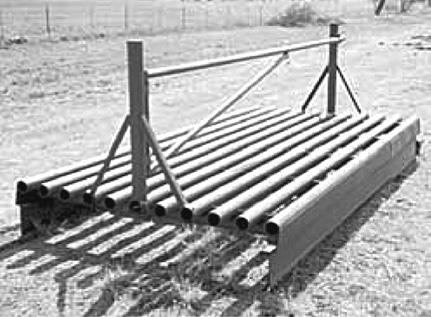
He was even-tempered, quick to smile, and you really had to work to make him mad (which his children often managed to do). More importantly, he lived by example, a man of his word who imparted the impor tance of personal responsibility and integrity, and that all work has value.
Doc is survived by his wife, Patti Lane; sons Todd (Stacey); Tim (Diane); and Sam; daughter Justine (Ryan); five grandkids and two great-grandsons. There was a celebra tion remembering his life in Cave Creek at Frontier Town, 4 to 7 p.m. on Thursday, October 27 and in Tucson at Hilton East, 4 to 8 p.m. on Saturday, October 29.
It is with deep sorrow that we share that SUSAN SPENCER FROST, 79, passed away in Alamogordo, New Mexico on September 26, 2022 following a debilitating illness.
Susan, only daughter of Marion and Truman Spencer, was born in 1942 in Oregon, where her father was squadron commander in the Army Air Corps. She grew up with her two brothers, Stirling and Steven, on the Bar W Ranch outside of Carrizozo, New Mexico. Susan was riding with men by the time she was eight years old, in a time when cowboys rode to the herd, did a day’s work, and rode home late that evening.
Susan attended school in Carrizozo until the 10th grade and completed her high school education at Loretto Academy in El Paso. She became an airline stewardess and later got her undergraduate and Masters degree from University of Texas in El Paso.
Susan married the love of her life, Jack Frost, in 1974. They worked together for 15 years and he taught her the long haul refrig erated trucking business, as well as how to drive a big rig.
In 1983, Susan and Jack bought a little casita and fish camp on the Sea of Cortez. They sold their business and retired to San Carlos, Sonora, Mexico, the nearest salt water to the Bar W. Susan had fallen in love with the Sea of Cortez when she caught her first 400-pound sports fish, and from that time on she and Jack spent about eight months of the year in San Carlos, fishing in the ocean, playing golf, and skiing all over the western United States

“It was the hunt she loved,” Jack related. “She loved to be out on the open water. She watched the fish lines and knew when we would get a hit before the fish even hit the bait.”
She and Jack fished together and individ ually. Susan founded the Ladies International Fishing Tournament (L.I.F.T.) which is today one of the biggest attractions in San Carlos.
She is remembered as being a tremendous bookkeeper, afraid only of lightning and tenacious in whatever she set her mind to do. Her friends knew that if work had to be done and Susan showed up to do it, all they had to do was get out of the way.

But Susan was a rancher’s daughter, and when they left Mexico, they always returned to the Bar W.
“She and Jack would be deep in Mexico, and they always knew what I was doing on the ranch,” Stirling recalled.

Susan was close to all her nieces and nephews.
The last couple of years of Susan’s life, she and Jack spent a lot of time on the Bar W. From the headquarter’s home office, Susan had a good view of the bull pasture and could watch the ranch bulls as they came in for water. “She gave me a detailed report on the



animals each day,” Stirling noted. “She paid attention to all of them.”
Throughout her life, Susan staunchly supported New Mexico Cattle Growers. She left a large bequest to the Cattlegrowers Foundation Inc. at her passing.
DR. BOBBY JOE RANKIN died on October 13, 2022, at 90 years old. He was a resident of Las Cruces, New Mexico for almost 60 years. Most recently, he lived with family at his ranch at Abbott, NM and at the Beehive assisted living home in Raton.
Bobby was born July 5, 1932, in Wills Point, Texas to Joe Maxie (JK) and Mattie Lou (Harris) Rankin. He grew up in Wills Point, Texas, during the difficult 1930s, helping on the family farm and working at the service station that his father managed. Friends in those days knew him for his red hair and fun-loving spirit. After graduating from Wills Point High School, he attended Texas A&M University, where he was a member of the rodeo and livestock judging teams. He graduated in 1954 with a degree in Animal Science and a commission in the U.S. Army Reserve. After training at Infan try Basic Officer school, and the Airborne and Ranger schools, he was stationed in Germany. He continued his military career as commander of a reserve U.S. Special Forces unit in Stillwater, Oklahoma and in Las Cruces until 1965.
In 1957, Bobby enrolled in graduate school at Oklahoma State University (OSU), where he earned M.S. and Ph.D. degrees in Animal Science. At OSU, Bobby also met his wife of 58 years. He married Margie Ann Bond, daughter of Damon Upton and Marie Elizabeth Bond on September 5, 1959.
Dr. Rankin joined New Mexico State Uni versity (NMSU) in 1961 and traveled the state as an Extension Livestock Specialist, focusing on the genetic improvement of beef cattle. He helped improve productivity and marketability in the ranching industry with his central bull-testing and ranch-to-rail programs. He then enjoyed a 20-year teach ing career, mentoring students in NMSU’s Animal and Range Sciences department, before serving as the Department Head until his retirement in 2000. During his time at NMSU, he was active sponsoring the live stock judging and rodeo teams. He helped establish New Mexico’s 4-H horse program and initiated a campus horse program that led to Quarter Horse breeding, hands-on horse training, and intercollegiate competi tions. He was instrumental in establishing the Corona Research Ranch in central New Mexico. Fluent in Spanish, he served as college adviser to a USAID project in Para guay and founding teacher for the graduate
program in Animal Science at the University of Chihuahua. He also worked in Belize, Algeria, and The Gambia, and regularly advised international Ph.D. students.
In addition to his work that he loved, Bob loved his community. For over 40 years, he was active in the First Presbyterian Church of Las Cruces, serving as deacon, teacher, and elder at various times. Bob was a member and officer of Rotary Club of Las Cruces for many years, as well as New Mexico Cattle Growers, Farm Bureau, and NMSU Foundation.
Bob was blessed with strong faith in his Lord and Savior, Jesus Christ from whom he received wisdom, strength, and guidance throughout his life. He was a man of great integrity. He especially loved and served us - his family and his friends, and we couldn’t have dreamed anyone could do it better.
Bob is survived by: daughters, Trina Davis (husband, Bruce), Springer, and Amy Rankin (husband, Doug Pickett), Taos; two grandsons, Benjamin Rankin (wife, Rachel) Davis, and John Damon Davis, and dear friends and family who shared this life journey with him.
He was preceded in death by his wife, his parents, and his two sisters, Lue Jean Beck and Elizabeth Charlyne Sledge.
Should anyone like to make a memorial donation, Bobby requested they be made to: NMSU Foundation – Bobby Rankin Judging Team Endowed Fund (PO Box 3590, Las Cruces NM 88005), First Presbyterian Church of Las Cruces (200 E. Boutz Rd, Las
Cruces 88005), The Ranches (NM Boys and Girls Ranch Foundation – theranches.org), or Cattlegrowers Foundation, Inc. (cattle growersfoundation.org).
WILLIAM J. “BILL” GRAY, 81, Lubbock, Texas passed away October 14, surrounded by his immediate family and sisters. He was born on December 19, 1940, in Artesia, to Orval C. and Mary Jane Terry Gray. Bill grew up on the family farm in the Cottonwood community, north of Artesia, starting his education at Cottonwood School, which was built on land donated by his grandfather, Thomas Jefferson Terry.
He graduated from Artesia High School in 1958 as a proud member of Artesia’s first state football championship team. He con tinued his education at New Mexico Military Institute where he played on the Broncos baseball team, later finishing his college studies and achieving a Bachelor of Science degree in Industrial Engineering at Texas Tech University.
On April 2, 1961, Bill married the former Vicki LaNette Wickersham, Artesia. His early career took his young family to Ottumwa, Iowa with John Deere, and later, opportunities with Continental and other oil companies in Casper, Wyoming; Ponca City, Oklahoma; and Tulsa, Oklahoma before returning to Artesia in 1969 as Chief Engi neer of Navajo Refining Company.
Over the years, he rose through the ranks at Navajo, retiring as Senior Vice President


Most collectors keep a close eye on the market so they have a good idea of values—and 2022 has been a wild ride with regards to the market thus far! There have been many record breaking sales and at the same time, high inflation has made other item less desirable and harder to sell—so some values have actually gone down. It seems the better quality stuff is doing better than ever, while low-end items are having a harder time finding a good buyer base. A few highlights from the year thus far are listed below.
January kicked it off with two record sales! On the 22nd in Mesa, AZ at the Old West Show and Auction, Edward Bohlin’s personal parade spurs were sold. Described in part as: “These spurs are extremely detailed with their leather work, stainless steel, silver and gold. The spurs earned rec ognition from the moment of their creation, gaining exhibition at the 1967 World’s Fair.” These amazing spurs sold for a whopping $236,000!* Also in January, at Western Trading Post’s Auction, a Lander Blue Tur quoise squash blossom set sold for the princely sum of $112,000!* The set was advertised as consisting of four pieces, including a bracelet, ring, earrings and the squash blossom necklace. The items were made using what has now become, the rarest and most highly sought after turquoise in the world—Lander Blue. Both of these sales turned out to be unofficial auction world records in their respective categories!
At an auction on February 26th and 27th, a jersey worn by Mickey Mantle when he played his final game as a New York Yankee on Sept. 28, 1968, sold for a whopping $2,190,000!* That’s the highest price ever paid at auction for a Mickey Mantle jersey, shattering the previous record of $1,320,000!* Also in February, at a horse sale in Wicken burg, AZ, a horse sold at auction for whopping $500,000! The market for good horses seems to just keep going up as does
the market for high-end sports memorabilia.
In April, at the New York International Antiquarian Book Fair, A Book of Rhymes which was created by a young Charlotte Brontë and her siblings in 1829 (when she was only 13 years old), sold for $1.25 million. Charlotte Brontë (1816 –1855) is best known for writing Jane Eyre and this book sale topped all other books sold throughout the year.
An auction hosted by Miller & Miller on May 14th featured an array of folk art and decorative art from the late 19th century. The auction included a lineup of Canadian art by Maud Lewis and others. An oil paint ing by Lewis reached well above the high estimate of CAD 25,000 (USD 19,165) and sold for CAD 75,000 (USD 57,500). The painting depicted a snowy scene with a man driving two oxen while hauling logs and the sale proved there is still a market for good folk art.
June was also a good month. At a Western Trading Post auction, a relic Springfield carbine with documentation and ties to the battle of the Little Bighorn sold for $47,600!* And we all know, the saddle market has been particularly tough for several years now, especially on used and antique saddles. However, there were two vintage Ted Flowers parade saddles sold at that same auction which brought $6,720* and $7,840* and a fancy, Wade Tree saddle, made by the late Don Butler brought in $10,640!* Although a long ways from record setting prices, it was nice to see used saddles bringing decent money.
On Aug. 27th, Heritage Auctions sold the most valuable baseball card in history for $12.6 million!* It was a 1952 Mickey Mantle rookie card in exceptional condition. This topped the $7.25 million Honus Wagner card sold earlier in the year (which previously held the record). And several works by Fritz Scholder (1937-2005) achieved great results at Bonhams’ Modern Native American Art sale in Los Angeles on Aug. 31st. The stand out work was Dartmouth Portrait #8, 1973, a painting from the series produced during Scholder’s tenure as artist-in-residence at the university, which sold for $378,375!* Also in August, an aluminum license plate from 1904, believed to be the first-ever plate issued by the City of Chicago, sold for $34,000 at Donley Auctions. And at an auction hosted by New Frontier Show and Auction on Aug. 27th in Cheyenne WY, the top selling item was a “Rare 1912 New Mexico 47-Star Amer ican Flag” which hammered at a staggering price of $20,500!
At Christie’s auction of the Herman Mel ville Collection of William S. Reese, on Sept.14th, illustrations for Moby-Dick by American artist Rockwell Kent (1882–1971) sold for $201,600!* It seems that Americana, Art and Collectibles achieved record prices throughout the year at numerous auctions!
Trade shows that were either canceled or reported low attendance the last couple years (largely due to the pandemic) have reported fairly good activity from across the country as people are once again “out and about” and looking for things to do. Whether that trans lates into higher sales or not is debatable as a big part of the activity reported seems to be dealer to dealer sales. However, online sellers seem to still be doing well after enjoy ing a record last couple of years, and brick and mortar was reporting a comeback during the first part of the year.
Heading into the last part of the year, it is a mixed bag of news with some large com panies reporting massive layoffs, some retailers reporting lower 3rd quarter earn ings and inflation is running hot (which affects everybody in different ways). Tradi tionally this type of news means that good stuff will remain strong and lower-end items will continue to take a hit. Simple logic tells us that higher prices for utilities, fuel and food affect the lower wage earners more than others and when they have less discretionary income to spend on extras, the lower mid dle-end and lower-end collectibles lose their buying audience. On the other hand, the upper middle-end and high-end items usually hold their value or even go up as people with money scramble looking for a place to park cash that is diminishing in value daily. For collectors this can mean good news however as buying opportunities will likely arise during turbulent times which seem to be on the horizon.
(*price listed includes buyers premium) ▫
2121
2123
8219 01/12/22
3148 01/13/22
9118 01/13/22
9137 01/15/22
8132 01/15/22
-0.4
89 25 na
2.75 0.0 49 87 22 na
2.82 1.2 47 86 24 na
2.99 -0.1 55 99 26 na
2.78 3.7 48 82 18 43
2.45 9.8 63 109 22 53
2125 R 9160 01/15/22 88 725 670 100 2.80 3.1 55 99 22 na
2127 PB 2224 01/16/22
715 648 97 2.77 3.3 61 103 30 na
2129 03 0201 01/17/22 66 635 615 100 2.47 0.1 43 69 19 40
2130 R 7015 01/17/22
750 656 98 2.92 1.1 56 99 24 na
2132 52 8106 01/17/22 78 775 680 110 3.01 3.0 47 83 23 47
2137 920 9125 01/18/22 76 600 541 88 2.34 -0.1 47 72 25 49
2138 PB 9148 01/18/22 78 745 689 103 2.91 2.3 68 117 26 na
2140 88 9146 01/20/22 76 580 526 85 2.28 1.1 46 78 26 49
2141 52 9149 01/20/22 102 700 635 103 2,75 6.9 59 102 23 53
2142 PB 4230 01/20/22 90 665 587 95 2.62 2.3 65 110 26 na
2143 535 7118 01/20/22
2144 535 3114 01/21/22
2145 52 6132 01/21/22
700 608 99 2.76 2.3 53 79 23 49
715 619 100 2.82 2.2 53 78 21 47
755 650 105 2.98 4.9 50 89 24 49
775 685 102 3.14 4.4 69 121 25 na 2150 18 0105 01/22/22
2147 PB 5304 01/21/22
660 651 97 2.62 1.6
2.76 2.9
3.00
2.81 2.3
of Navajo Refining Co. and Holly Corpora tion, later serving on the boards of Holly Corporation and Holly Energy Partners in Dallas. A lifelong public servant, he sat on the Artesia City Council and numerous other boards including Western Bank and College of the Southwest (now the University of the Southwest).
Bill retired from Navajo in 1999 and was celebrated with a retirement party featuring the Gatlin Brothers Band, a true highlight to cap his career. After retirement, Bill was elected to serve in the New Mexico House of Representatives (District 54) from 2007 to 2014. As a legislator, he and LaNette enjoyed traveling the state and making many lifetime friendships. Bill and LaNette were blessed with three children: William Brett, Suzette, and CaraBeth. He was proud of his Artesia
roots and the Artesia Bulldogs’ legacy and joked that his blood ran orange. He followed the Bulldogs closely, especially during foot ball season, and when traveling during a game, he would call KSVP from the road to ask for the score long before the games were later streamed.
He is survived by his wife of 61 years, LaNette, and sisters Glenelle Butler and Exa Cunningham (Kenneth), and sister- and brother-in-law Jana and Lynn Troublefield; and three children, three sons-in-law, three grandchildren & two great-grandchildren.
Gifts to honor Bill may be made to MD Anderson, Attention Dr Rodabe Amaria, and Dr Merrick Ross. First United Methodist Church of Artesia, Christian Center Church in Hobbs, or the Texas Tech Alumni Association.
YVONNE WALKER OLIVER , 85, La
Luz, passed away on October 19, 2022, in La Luz, New Mexico. She was born October 22, 1936, in Rowell. Her parents were Bessie George and Albert Walker. From the time that she was very young, she lived in Sixteen Springs Canyon. The Walker family had settled in Sixteen Springs in 1887, and her mother’s family had settled in the Sacra mento Mountains in the late 1800’s.


Yvonne rode the school bus from Sixteen Springs to Cloudcroft through the 10th grade. Around that time her family moved to La Luz Canyon and Yvonne finished high school in Alamogordo. She began working as a nurse’s aide at Gerald Champion Hospi tal at 16 years old and dreamed of going to nursing school after graduation. But as fate would have it, she met the man of her dreams, GB Oliver Jr., from the White Sands Ranch

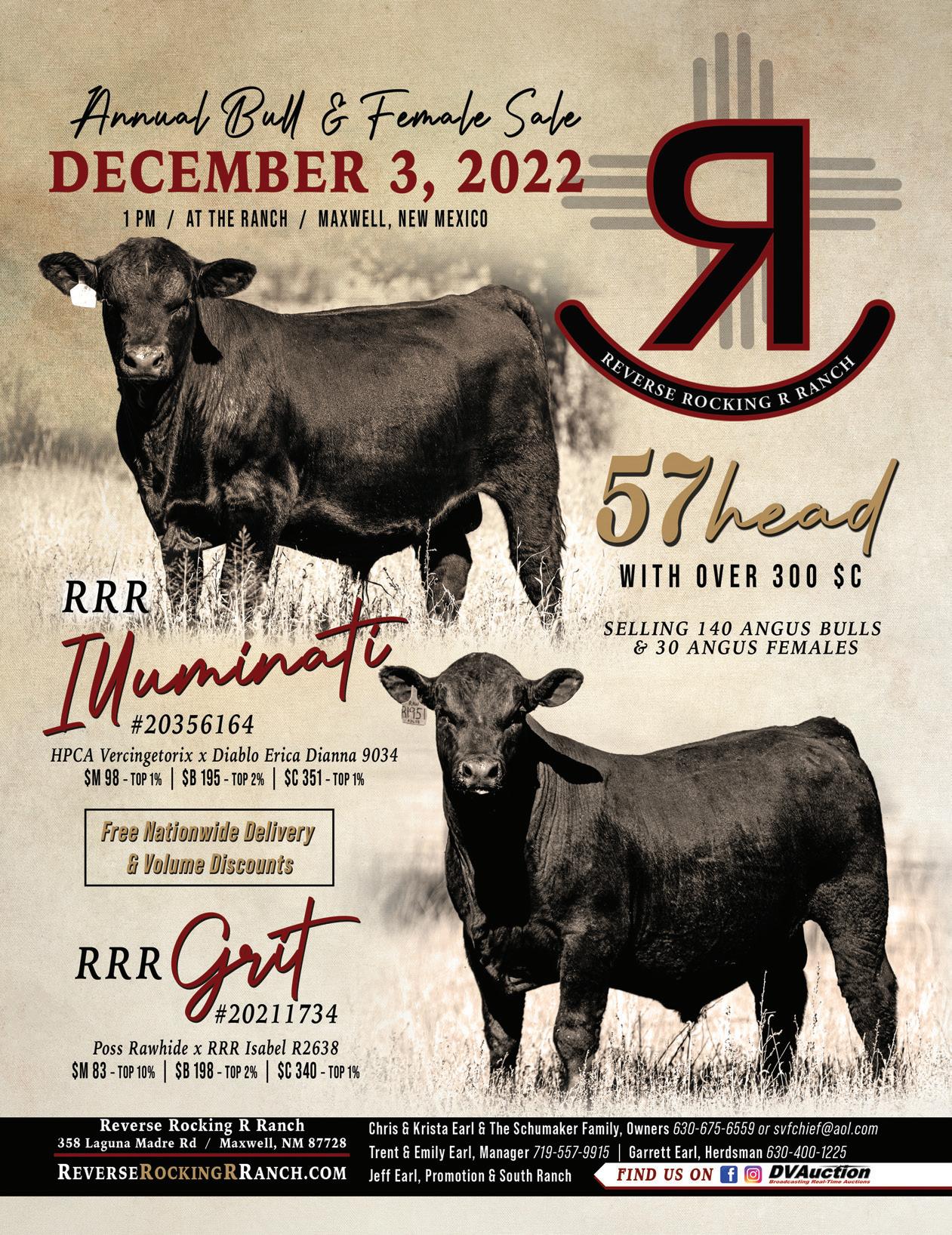
in Alamogordo. After a short courtship, they were married on August 20, 1954. They were married for 49 years when GB passed away in 2003.
They lived on the White Sands Ranch and raised their family, until 1990 when they moved to La Luz Canyon. Yvonne had won derful memories of living on the ranch, of driving 600 head of cattle to pasture over 6 days and nights, raising quarter horses, branding, working their meat business, and the quietude and beautiful sunsets there.
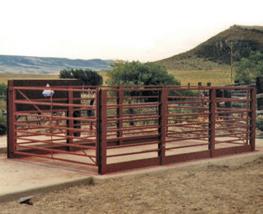


Yvonne enjoyed being a mother, cooking, sewing, gardening, and canning. Her family was central to her existence. She was the quintessential hostess, and entertained people from all walks of life that found their way to their ranch, from military Generals
to wanderers. Yvonne was Otero County Probate judge for 8½ years. She was a member of Otero CowBelles, PEO chapter AO, Desert Hills Church of Christ, Sacra mento Mountain Historical society, Tularosa Basin Historical society, and Otero County Republican party. Yvonne truly enjoyed people. She enjoyed dancing, and until recently, rarely missed going to the dances with friends.
Yvonne is survived by her brother, Larry Walker of La Luz; her children, GB Oliver III (wife Theone), Audra Nichols ( Matt Lasiter), and John Oliver, all of La Luz; her grandchil dren: GB Oliver IV (wife Jamie), Summer Oliver Boyd (husband Seth), Trenton Oliver, Caleb Nichols, John Nichols (wife Patty), Sam Nichols, Joe Nichols (wife Allyson), Kyan Tilton (husband Reese); great-grand children: GB Oliver V, Nora and Charlotte

Oliver, Emmie and Jinsen Boyd, Jack and Dean Nichols, Hunter, Liam, and Trace Tilton; as well as many nieces and nephews.
At Yvonne’s request, in lieu of flowers, donations may be made to the Tularosa Basin or Sacramento Historical societies.


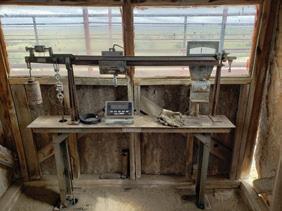
The memorial service for Yvonne Oliver will be held at 1:00 pm, Wednesday, Novem ber 16, 2022, at the Flickinger Center.
Editor’s Note: Email caren@aaalivestock.com. Memorial donations may be sent to the Cattlegrowers’ Foundation, a 501(c)3, tax deductable charitable foundation serving the rights of ranch families and educating citizens on governmental actions, policies and practices. Cattlegrowers Foundation, Inc., P.O. Box 7517, Albuquerque, NM 87194. The Stockman runs memorials as a courtesy to its readers. Verbatim pieces must be emailed to us, & may be printed at 10¢ per word. ▫
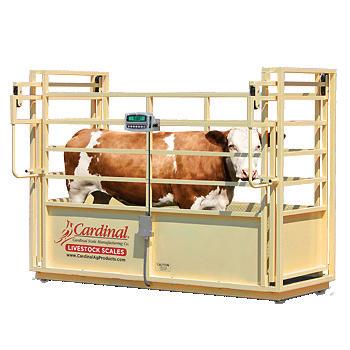
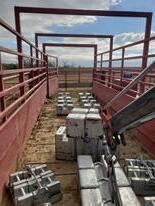


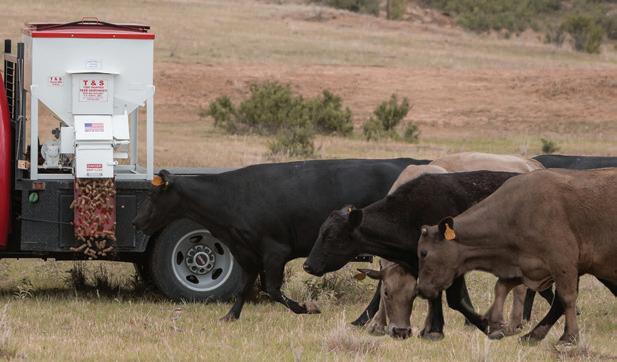
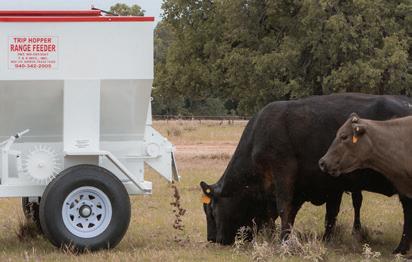
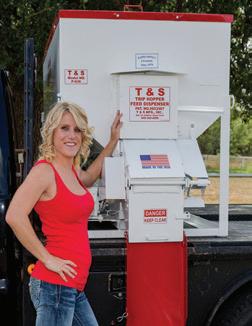
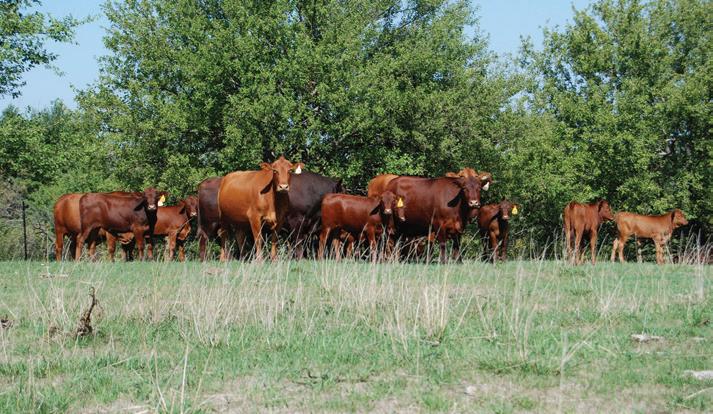



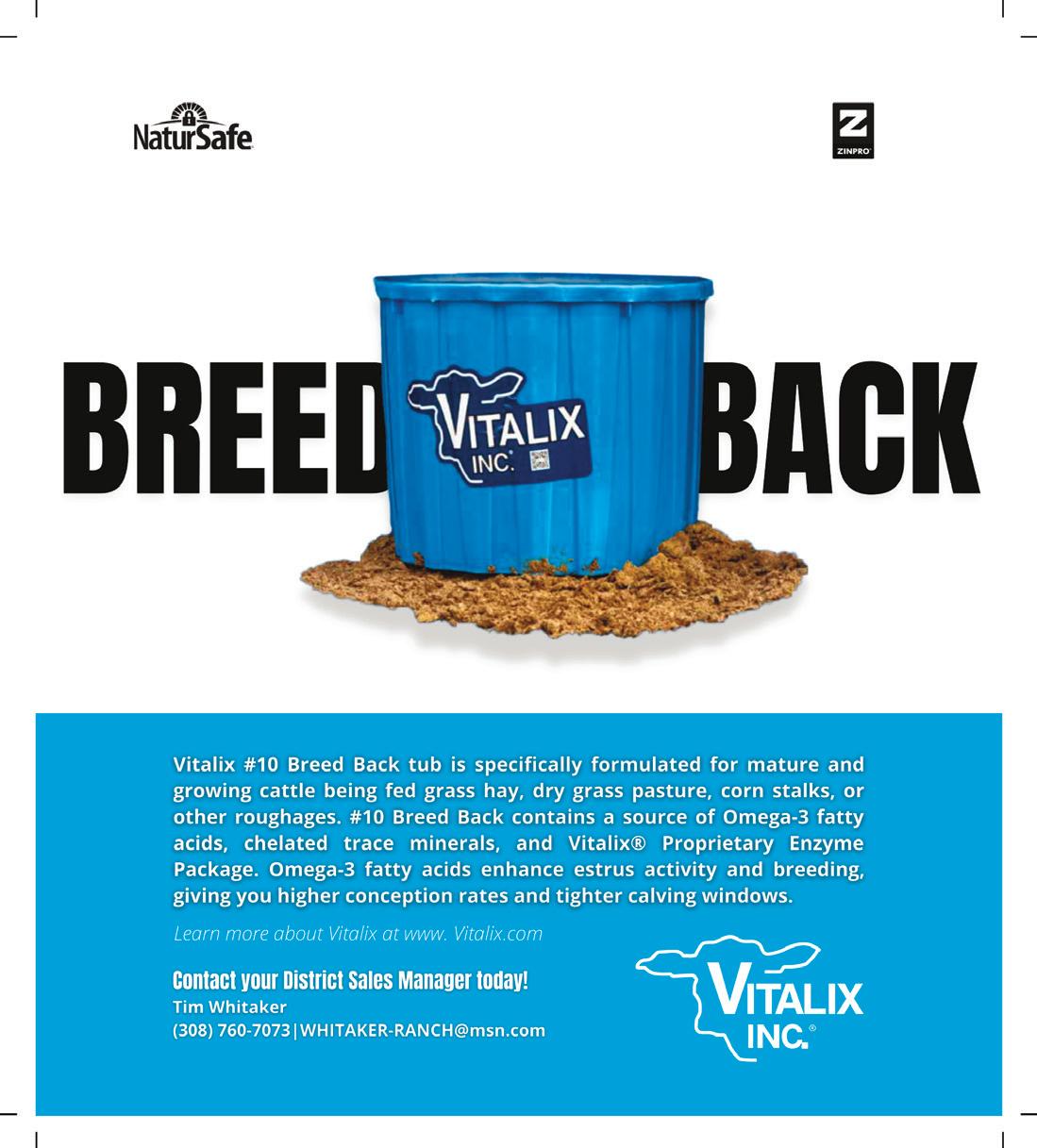







Socorro, Catron and Sierra Counties are creating a County Livestock Loss Authority to help ranchers get compen sation for cattle lost to wolves and to reduce adverse wolf and livestock interactions.
Sierra County will be the fiscal agent for the entity. Socorro County commissioners discussed the agreement to create the Live stock Loss Authority in their Sept. 27 meeting.
According to the three-county agreement, the Loss Authority will try to access available federal, state and private funding to help ranchers who have had an economic impact from the Mexican Grey Wolf Recovery Program.

The Mexican wolf was listed as endan gered in 1976, and the recovery program released the first captive wolves into Arizona and New Mexico in 1998. There are existing ways that livestock producers are compen sated for depredation of livestock. The new entity would help ranchers navigate receiv ing those funds.

Commissioner Glen Duggins said cattle do not breed as well with a wolf hanging around, during a discussion of the proposal.

Some producers have almost been wiped out, said County Attorney Adren Nance.
“It looks like we’ll have a fair amount of funding, which is great, and I think we’ll get even more next year, which is sorely needed,” said Nance. “When you go from a 90 percent calf crop to a 10 percent calf crop, you just really can’t stay in business.”
In other business, the Commissioners heard from Hop Canyon Road residents who are frustrated with ongoing flooding issues in their area. The county has been trying to acquire funding from NMDOT to get an engineering study done to properly alleviate the flooding issues. That application for funding was recently rejected.
Two Hop Canyon residents discussed the economic and psychological impact that the ongoing flooding has had on them.
One resident, Janet Cliff, said that her property taxes were reduced this year because all of the flooding has reduced her property value. She attributes the flooding issues on her property for the last four years to a county drainage improvement that redi rected water to her land and driveway. ▫

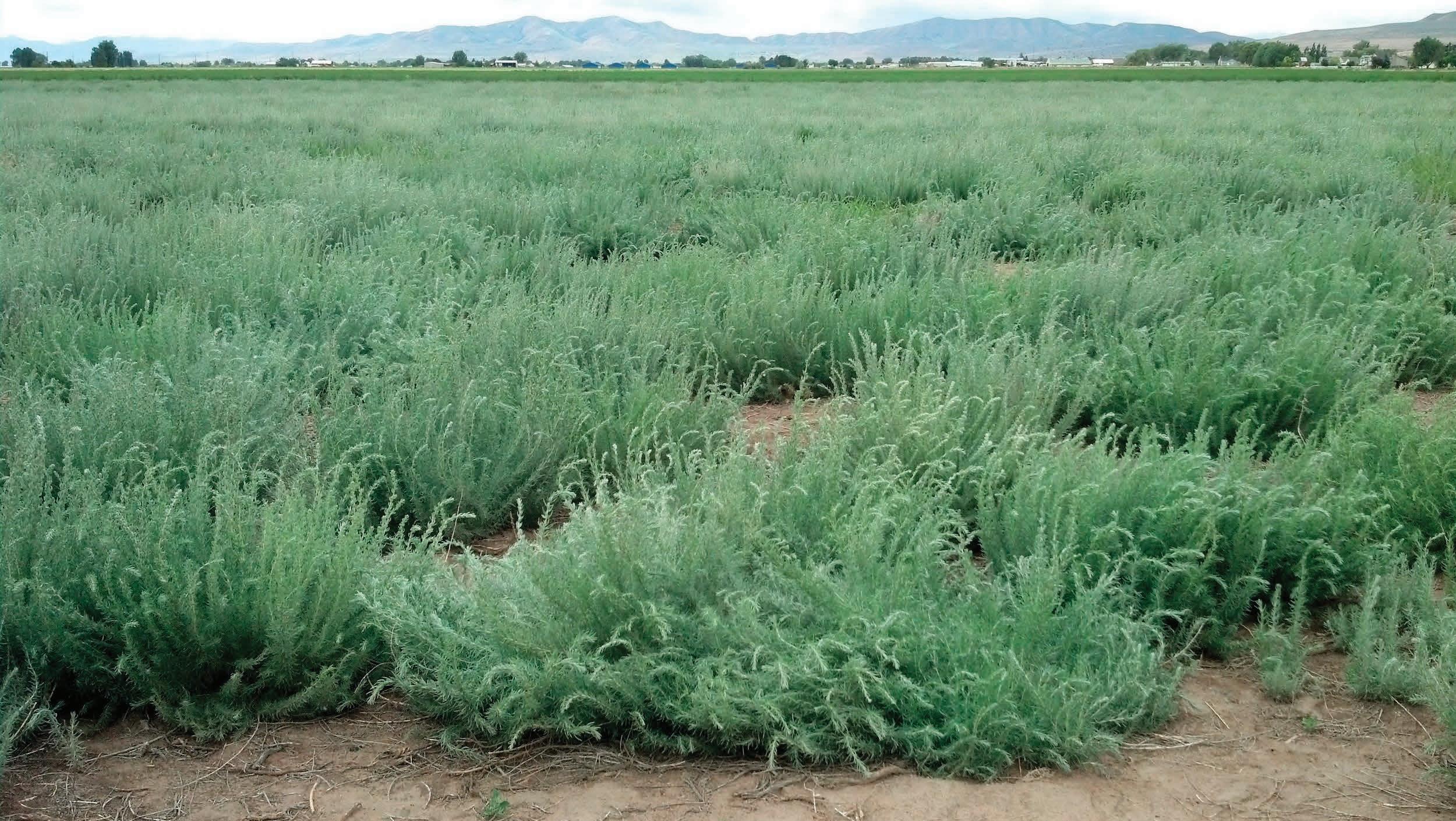
‘Don’t judge a book by its cover’ haven’t we all grown up hearing this English idiom? Yet, it’s human nature to do just that, especially in the agriculture industry, ‘we have to trust our gut.’ Plant when we feel there might be rain coming, prolong harvest to just the right sweet spot, move the cows at just the right time, and so on. We must; our livelihood generally depends on these decisions. Sometimes though, we connect feelings, words, or experiences to a negative belief just by circumstance, which can sometimes lead to a missed opportunity. Forage bassia, (Bassia prostrata (L.)), is commonly known as summer cypress, alfalfa of the desert, or forage kochia. Ah, right there, as your read ‘kochia’ did you feel it? That negative association with that dreaded, fast-spreading, annual kochia weed (Kochia scoparia). We spend so much time, money, and labor fighting weeds that even entertaining the thought of growing a plant that shares a name with one feels wrong. Forage bassia, however is anything but a weed.
Forage Bassia is a semi-evergreen, shrub-like, longlived, perennial introduced from the deserts and semiarid provinces of the Mediterranean and Eurasia. It is part of the Chenopod family, which contains other highly nutritional arid rangeland species like four-wing saltbush and winterfat and is one of the most important heavily grazed forages in regions with less than 12.5 cm (5 inches) of rain a year. It was initially introduced into the U.S. in 1966 as a plant that could provide forage while competing with Halogeton on droughty, saline soils. Since then, the plant has proven itself as a very highly valued winter forage; it helps control erosion; serves as a shelter and provides tasty seeds for song and game birds; acts as a greenstrip/ firebreak, and generally thrives on poor-quality sites. Additionally, forage bassia has stabilized disturbed sites (overgrazed, burned, droughted, etc.) by competing against annual species such as cheatgrass, halogeton, and medusahead, yet, is non-invasive to native perennial plant communities. In late fall, while the dormant grasses are high in fiber (energy) but low in protein, forage bassia has high crude protein (between 9 – 18%) and great digestibility but does not cause nitrate or oxalate toxicity making it an excellent choice to optimize forage protein and energy levels during the dietarily stressful winter months. In fact, most ranchers who’ve had to supplement with pellets and/or hay during winter have almost eliminated that cost in few years after overseeding their rangeland with forage bassia.
There seem to be more fires, less water, and more damaged rangeland each year. Utilizing greenstrips to reduce or stop range fires is a must. Fires can damage greenstrips, but research has shown that forage bassia has an excellent post-burn survival rate. Scan this code to see just how burn-resistant this plant is! This video was taken in late October when the plants were dry and hadn’t received water in months. Gas was poured on the plant to aid fire ignition. Overall, forage bassia excels in a wide variety of soils but handles alkaline, bare soils very well while providing many other benefits. It is a unique plant, and Westfork has aided ranchers in sowing and establishing hundreds of thousands of acres across the western U.S. since 1988. Research has shown that it should be seeded (broadcasted aerially or drilled into prepped or native sites) in late fall or early winter for the best germination and establishment, so contact us today! Westfork would like to work with you to overseed forage bassia on your current range stand or reclaim land using our favorite rangeland mix, Range Changer, to help you increase your carrying capacity by, on average, six-fold. Scan the QR code below to learn more about this amazing plant, our company, or both. Or email us at shane@rangechanger.com
Presented by:
Scan here to learn more



AMexican gray wolf that conservation advocates say was genetically signifi cant to the species’ recovery in the wild has been found dead in New Mexico.
The U.S Fish & Wildlife Service (FWS) confirmed the death of the captive-bred and released Mexican gray wolf known as
No.1693. The wolf was discovered on October 8. FWS officials have not released details on his killing because it is still under investiga tion by law enforcement.

The death came just days after FWS announced a revision to the Mexican gray wolf recovery plan with proposed actions to reduce human-caused wolf mortality.
Mexican wolf No. 1693 was released into the wild in 2018 when he was just 15 days old. He was cross-fostered into a wild wolf den in an effort to increase the genetic diversity of the wild population of wolves, a step biol ogists say is critical to the survival of the species.
FWS biologists use genetic criteria to make fostering decisions.
He and his mate, wolf No. 1728, were captured and moved from the Rainy Mesa area near Reserve, New Mexico, in the spring of 2021. The pair had two sets of litters since then.
The family, named Seco Pack, success fully survived the Black Fire this summer, which became New Mexico’s second-largest wildfire on record. It ripped through the range where the Seco Pack had been observed.

His killing is a violation of the Endan gered Species Act, and is subject to civil and criminal penalties, up to a year in prison and a $50,000 fine, with additional New Mexico state penalties for violating the Wildlife Con servation Act.
In addition to GPS collars, wolves are counted using on-the-ground methods, such as monitoring wildlife cameras and wolf howling, as well as observing tracks and scat.
During the first week of January, FWS officials confirmed a Mexican gray wolf was shot and killed near Flagstaff. On June 18, the body of an adult male was found with a gunshot wound in eastern Arizona.
On October 14, 2021, a federal court in Arizona sent the 2017 recovery plan back to the wildlife agency to address the threat of human-caused mortality. The revised plan included new site-specific management actions to address threats, including educa tion and outreach, an increase of law enforcement presence in areas designated as mortality hot spots and the use of livestock conflict-avoidance measures. ▫

Fall competition for the New Mexico High School and Junior High School Rodeo Asso ciation ended in Las Cruces with contestants and families enjoying the last rodeo of the season. Spring will start up next semester, and contestants will have four more rodeos to work before state finals in May. A great big thank you to the directors and sponsors of the rodeo, it takes a lot to make this happen and it is always appreciated. See you kids in the spring! For event standings or any other information on the NMHSRA, please visit the website at www.nmhsra.com. Special thank you goes out to Julie Carter, Julie Carter Photography, for making sure the NM Stockman had pictures of contestants!
All Around Cowboy Cutter Pareo

All Around Cowgirl Caydence Roberts
Build A Cowboy Bareback Riding No Entries
Build A Cowboy Bull Riding No Entries
Bareback Riding Wacey Schalla
Bull Riding Wacey Schalla
Saddle Bronc Monte Faulkner
Tie Down Cutter Pareo
Steer Wrestling Tydon Tsosie
Team Roping Lyvan Gonzalez & Cason Hatley
Barrels Caydence Roberts
Pole Bending Jorianne Mirabal
Goat Tying Wacey Trujillo
Breakaway Evann Segura
Girls Cutting Addison Kinser
Boys Cutting Sterlin Mitchell
Reined Cow Horse Sterlin Mitchell
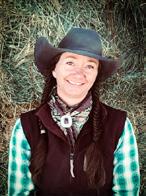
Light Rifle Zane Cline
Boys All Around Tyan Gonzales
Girls All Around Anistyn Abel
Steer Bareback Slade Thompson
Steer Saddle Bronc Haize Price

Bull Riding No Qualified Rides
Tiedown Savino Frank
Chute Dogging Rody Mack
Team Roping Syndee Wilson & Bryce Stone
Girls Breakaway Anistyn Abel
Girls Goat Tying Anistyn Abel
Pole Bending Shae Rios
Barrel Racing Clair Biebelle
Boys Breakaway Liam Powell
Ribbon Roping Gonzales, Tyan & Cylee Jo Roberts
Boys Goat Tying Tyan Gonzales
Light Rifle Zoey Cline
All Around Cowboy Wacey Schalla
AA Cowgirl Caydence Roberts
Build A Cowboy Bareback Riding No Entries
Build A Cowboy Bull Riding No Entries
Bareback Riding Wacey Schalla Bull Riding Wacey Schalla Saddle Bronc Mitchell Story - CO Member
Tie Down Dillon Mathis
Steer Wrestling Tydon Tsosie Team Roping Evann Segura & Cole Wilson
Barrels Caydence Roberts
Pole Bending Jorianne Mirabal
Goat Tying Wacey Trujillo
Breakaway Rylee Grace Abel
Girls Cutting Tiffanie McCormick
Boys Cutting Chris Carson
Reined Cow Horse Sterlin Mitchell Light Rifle Zane Cline Trap Shooting Kassidy Lightfoot
Boys All Around Slade Thompson
Girls All Around Baye Boutwell
Steer Bareback No Qualified Rides
Steer Saddle Bronc Slade Thompson
Bull Riding Slade Thompson Tiedown Trip Saulsberry
Chute Dogging Rody Mack
Team Roping Holt Haynes & Haxton Haynes
Girls Breakaway Baye Boutwell Girls Goat Tying Teagan Trujillo
Pole Bending Channing Robinson Barrel Racing Ava Packouz

Boys Breakaway Kyon Hatley Ribbon Roping Logan Phillips & Hayslee Fair
Boys Goat Tying Tyan Gonzales Light Rifle Zoey Cline ▫

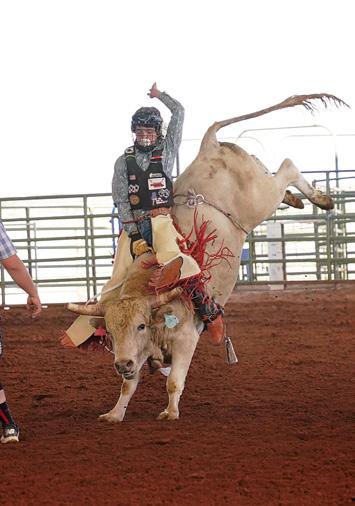
AForest Service employee has been arrested by a local sheriff in response to a prescribed burn.

Can this be true? Apparently so.

On October 19 the Forest initiated a burn in the Malheur National Forest, saying, “After carefully monitoring conditions across the Forest, fire officials have determined that conditions are within specific parameters, including temperature, relative humidity, and fuel moisture to begin prescribed fire operations in specifically planned units.”
But they lost control of the burn and it crossed over to private property on a ranch owned by the Holliday sisters. The sisters lived nearby, knew the conditions were dry, were scared and called 911.
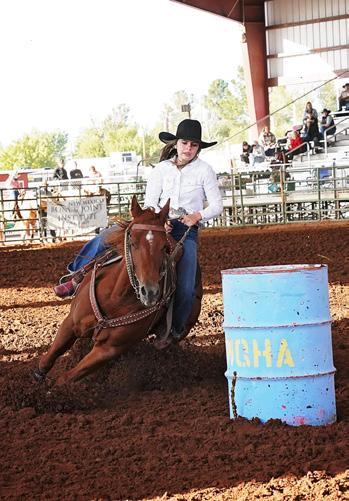
The sheriff of Grant County, Todd McKinley then arrested the “burn boss” of the Forest Service project and charged him with “reckless burning.” At that time the sheriff issued a statement saying, “The Grant County Sheriffs Office arrested a 39-year-old Forest Service Employee for Reckless Burning and transported him to the Grant County jail.

The press release stated “the incident is under investigation.”
In a press interview Sheriff McKinley said “everybody knew it was a bad burn, should not be happening” and “it was a bad time to burn.”
It should also be noted that Grant County District Attorney Jim Carpenter said, “This case will be evaluated once the investigation is complete, and if appropriate, Snodgrass (the “burn boss”) will formally be charged… if it is determined that he acted recklessly. That the USFS was engaging in a prescribed burn may actually raise, rather than lower the standard to which Snodgrass will be held.”
The District Attorney also said, “To be clear, the employer and/or position of Snodgrass will not protect him if it is determined that he acted recklessly.”
The DA added, “Many will attempt to hype this into something that it is not,” Car penter added. “The question is whether one neighbor, given the prevailing conditions, was reckless when starting fires adjacent to
another neighbor.”
Some are concerned by this event. Steve Ellis, with the National Association of Forest Service Retirees, said he had never heard of a Forest Service employee being arrested for doing prescribed fire.
“To go out and start arresting people is not appropriate. And it sends a terrible signal to our wildland fire people out there now.”
However, others disagree. “It’s an isolated example, and I would not anticipate that it would have a big impact on work that’s going on across the West,” said Lenya Quinn-Da vidson, the director of the Northern California Prescribed Fire Council.
On my blog, THE WESTERNER , I reminded everyone that two members of the Hammond family went to prison for starting their own prescribed fire that crossed over to federal property.
This brought two types of response.
Floyd Rathbun wrote:
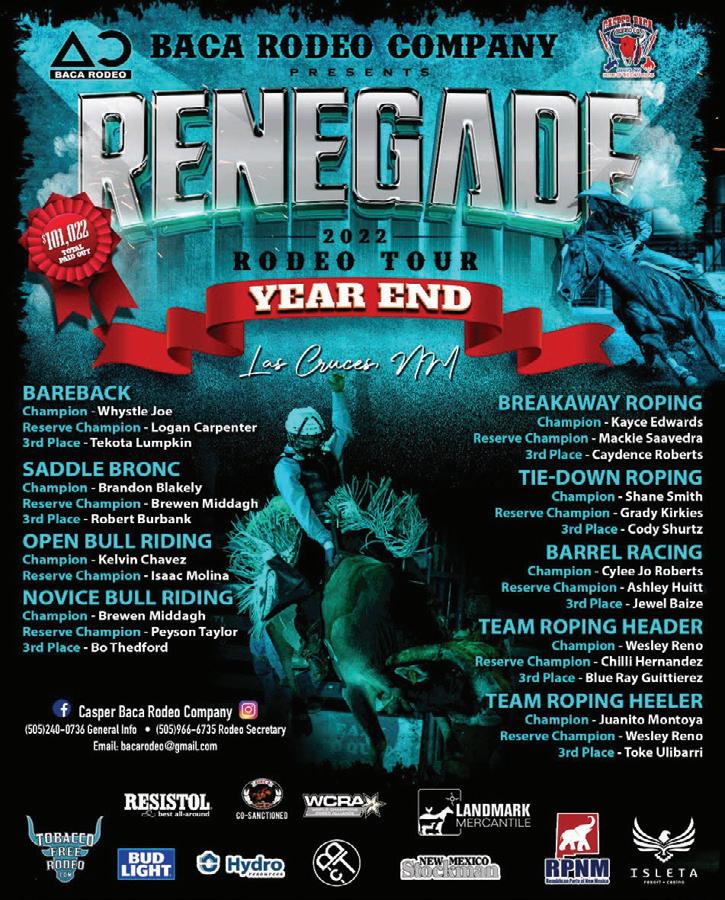
“Some of us have not forgotten the treat ment of the Hammond family by the US Department of Interior.
Maybe this FS character will be allowed to upgrade to the Hammond cell”
But Anonymous wrote: “Interesting case here but silly to bring the Hammonds into it, the situations are not
remotely similar.”
And I responded:
“the situations are not remotely similar.”
Its the principle of the thing
A rancher starts a burn on private prop erty which ends up on federal property, and goes to prison. Even tried as a terrorist to get the mandatory minimum.
The feds start a burn on federal property which escapes to private property. And then?
I don’t believe it is “silly” to compare the two events in the sense that I have described it.
Perhaps this comment expressed it best:
“This arrest may be among the best things that happened to the Forest Service in decades. Public accountability. We’re all for prescribed burns. What part of the prescrip tion burns 20 acres of private land? This is about good government – not party this or that whining or nonsense. The arrest and charges should also go the district ranger who approved the burn in those conditions. Holding the burn boss and district ranger
personally, financially liable will also help instill responsibility and accountability in their decisions.
Burning folks’ pastures is the antithesis of “working with the local community.
We should have more ways to hold gov ernment accountable and responsible. Our elected officials and judges too often fail the task.”
We will keep watching this one for you.
If I was forced to bet on this, I would have to bet the county will back down because a) their case or jurisdiction is flimsy b) the cost of litigating the issue will be high or c) they will succumb to the threat of all federal funding being withdrawn from the county.
Until next time, be a nuisance to the devil and don’t forget to check that cinch.
Frank DuBois was the NM Secretary of Agriculture from 1988 to 2003, is the author of a blog: The Westerner (www.thewesterner.blogspot.com) and is the founder of The DuBois Rodeo Scholarship and The DuBois Western Heritage Foundation ▫
A Lazy 6 Angus Ranch . . 18, 103
Ag Lands Southwest . . . 95
Ag New Mexico FCS, ACA 8
Alisa Ogden . . . . . . 80
American Angus Association 33
American Heritage Bank / Colten Grau 43
Anita Hand . . . . . . 86
B&R Construction 103
Bar G Feedyard 37
Bar M Real Estate . 98, 101
Bayer Environmental Science . . . . . . . 87
Bert Ancell 82
Betson . . . . . . . 81
Big Mesa Realty . . . .100
Bill King 19, 84
Bill Sauble . . . . . . 86
BJM Sales & Service Inc 102
Black Angus “Ready for Work” Bull Sale 26
Bob & Jane Frost . . . . 80
Bob Homer . . . . . . 85
Bobby Jones 78
Border Tank Resources . .102
Bradley 3 Ranch, Ltd 28, 105
Brazos . . . . . . .129
Brennand Ranch 28, 106
Brinks Brangus / Westall Ranch, . 67, 106
Bronson Corn 82
Brownfield Ranch & Farm Properties 101
Citizens Bank of ClovisMoriarty . . . . . . . 112
CKP Insurance . . . . . . 11
Clark Anvil Ranch 106 Clovis Livestock Auction 39 Coba Select Sires 105 Conniff Cattle Co . . 20, 105 Copeland & Sons Herefords 84
Cornerstone Ranch . . 21 Cox Ranch Herefords 106
CS Cattle Co . . . . . . . 80 Culbertson - Whatley Ranch . . . . . . . . 83
Dairy Farmers of America 58
Dave & Cindy Kenneke 86 David & Joan Kincaid 85 Denetclaw 77
Denton Photography . 108 Depot Farm & Ranch 3
Desert Scales & Weighing Equipment 103 Dexter Livestock Commission . . . . . . 17
Diamond Arrow Ranch 86 Diamond Seven Angus 104 Domenici Law Firm, PC 41 Express Scales Services 92 505 Trucks, LLC 102 Fallon-Cortese Land . 99 Farm Credit of New Mexico 9 Farmway Feed Mill . . 41
Farr Cattle Co 81
FBFS / Larry Marshall . 113
Harrison Quarter Horses 102 Hartzog Angus Ranch 23, 104
Headquarters West / Traegen Knight 101
Headquarters West Ltd / Sam Hubbell 98 Heartstone Angus, LLC 22 Henard Ranch 105 Hi-Pro Feeds / Sendero . 2 Hooper Cattle Company 115 Hubbell Ranch 25, 103 Hudson LS Supplements 56 Hutchison Western 8 Industrious America . 102
Innovative Solar Systems 13 InoSol Castrator 72 Insurance Services of New Mexico 50
Int’l Brangus Breeders . 68
Isa Beefmasters 104
J & J Auctioneers . . 32
J-C Angus Ranch . . 30 James Sammons III 100
Jeannne & Widge . . 81
Jeff Decker 86
Jim Lyssy . . . . . . . . 85
Joe Clavel 83
Joe Delk 85
Joe Stubblefield & Assoc100
John Conniff 86
John Richardson . . . 85
Jon Swapp 81
Jones . . . . . . . . . 86
José J . Varela Lopez . . 78
Major Ranch Realty 96, 101
Manford Cattle 104
Manzano Angus . . 30, 104
Marjorie Lantana . . 81
Manchester Mfg 73 Matlock & Associates . 94
McKenzie Land & LS 15, 77 McPherson Heifer Bulls 30, 104
Mead Angus . . . 28, 41
Melody Christmas . . 58
Mesa Tractor, Inc 65, 103 Michelle & Jerry Maynard 78 Mike Casabonne Family 78
Mike Corn . . . . . 82
Miller Angus . . . 27, 104
Monfette Construction Co 58, 102
Motley Mill & Cube 122
Nelson’s Meats . . . 107
Neogen 55
Nikki Hooser . . . . 80
NM Angus Bull & Heifer Sale 29
NM Beef Council 80
NM Premier Ranch Properties . . . . 98
NM Wool Growers 82
NM Federal Lands Council 34
NM Purina Dealers . . 132
NMSU . . . . . . . 86
C Bar Ranch . . . 28, 105
Candy Ray Trujillo’s
Black Angus . . . . . 28
Carson Real Estate Inc 37
Carter Brangus 72, 104
Carter’s Custom Cuts . . . 16
Casey Beefmasters 105
Casper Baca Rodeo 126, 127
Cattle Guards / Priddy Construction . . . . .112
Cattlemen’s Livestock Auction 44
Cauthorn & Griffin Insurance 14
Caviness Packing Co . . . . 38
Chas S Middleton & Son . . . . . . .100
Chip Cole Ranch Real Estate 100
FBFS / Monte Anderson 109 Ferguson Ranch 74 Figure 4 Cattle Co . . 106 First American Bank 57 Five States Livestock Auction 49 4G Angus . . . . . . . 22
K2 Red Angus . . . . 75
Kaddatz Auctioneering & Farm Equipment 103
Ken Ahler
Real Estate Co , Inc 99
L & H Manufacturing . 107 Lack-Morrison Brangus 73
Laflin Ranch . . . . . 28
Lane Grau . . . . . . . 83
NMSU Animal & Range Sciences . . . 40, 45, 91 Northwest Nebraska High Country . . . 81
O’Neill Land 99
Old Mill Farm & Ranch Supply 66
Lavender Brangus 70
Genex / Candy Trujillo 103
Golden Hz Farms . . . 120
Grant County Copper CowBelles . . . . . . . 17 Grau Charolais 93, 103 Grau Ranch . . . . . . 6, 106 Great Basin Seed . . . 124 Hargrove Ranch Insurance 90
Lazy D Ranch Red Angus 74, 103
Lazy S Ranch Willcox . 30
Livestock Nutrition Center . . . . . . . . 130
Lonestar Stockyards, LLC 48 Loren Patterson 83
Lust Angus . . . . . . 34
Lyssy & Eckel Feeds 116
Olson Land and Cattle . 20, 104
Parker Brangus 69, 73 Pat Boone . . . . . 84
Pat Woods 82
Paul McGillard / Murney Assoc 100
Perez Cattle Company . 103 Pratt Farms . . . . 105
Punchy Cattle Co 112
R L . Cox Company 63, 102
Ramro LLC / RJ Cattle Co 71
Randell Major . . . . . 84
Range Changer . . . .123
Republic Ranches, LLC 100

Reverse Rocking R Ranch . 117
Rex & Carol Wilson . . . 83
Rio Grande Scales & Equipment . . 102, 118
Rio Hondo Land & LS Co . 72
Riverside Angus 26
Robbs Brangus . . . . . 73
Robertson Livestock 102
ROD Ranch . . . . . . 70
Roswell Brangus Breeders Co-op 131
Roswell Livestock Auction 36
Running Creek Ranch . .105
Rush Farms Inc 80
Salazar Ranches . . . . 41
Santa Rita Ranch . 74, 104
Sato Lee 83
Sci-Agra Inc . . . . . .103
Scott Land 97
Sidwell Family . . . . . 77
Sidwell Farm & Ranch Realty 101

Singleton Ranches . . 78
Skaarer Brangus 72, 103
Sowers . . . . . . . . 103
Specialized Crop Insurance7
Stallard Real Estate Services . . . . . . . 37
Steve Jensen 120
Stockmen’s Realty . . . 97
Suther Feeds 5

2 Bar Angus . . . . . 22, 104
T & S Manufacturing 119
T4 Cattle Company . . 79
TechniTrack, LLC 102
Ted & Judy Rush 86
Terrell Land & Livestock Co 100
The Hat Ranch . . . . . . 82

The Ranches 45 Thompson Ranch . . 31, 106
Tire Water Troughs . . 63
Tom Dominguez 85
Tom Paterson . . . . . . 77
Tom Robb & Sons 105
Torrez . . . . . . . . . 77
Townsend Brangus . . 72
Troy Floyd 72
Ty Jones Cattle Co . . . 46
U Bar Ranch . . . . . . 32 United Fiberglass, Inc 42 USA Ranch . . . . . . 106
Verde Real Estate 98
Virden Perma Bilt Co . 103
Vitalix, Inc 120
W&W Fiberglass Tank Co . 47
Waypath . . . . . . . . 35 Weaver Ranch 24
Wesley Grau . . . . . 78
West Star Herefords 107 Western Tank & Trailer . 124
Western Trading Post . 122 Williams Ranch Supply 121 Williams Windmill, Inc . . 103, 108
WW - Paul Scales . . 46
Zia Real Estate 99



Bunks Feed Hobbs, NM
Jim Selman • 575-397-1228
Case & Co. Tucumcari, NM
Luke Haller • 575-403-8566
Cowboy’s Corner Lovington, NM
Wayne Banks • 575-396-5663
Creighton’s at The Fort Fort Sumner, NM
Garland Creighton, 575-760-6149
Creighton’s Town & Country Portales, NM
Garland Creighton, 575-356-3665
Double D Animal Nutrition Artesia, NM
Don Spearman • 575-302-9280
Guadalupe Mountain Farm, Ranch & Show Supplies Carlsbad, NM
Amber Hughes • 575-988-3508
One Stop Feed, Inc. Clovis, NM
Austin Hale • 575-762-3997
Purina Animal Nutrition Eastern NM
Steve Swift, 575-760-3112
Purina Animal Nutrition Western NM
Joram Robbs, 520-576-8011
Roswell Livestock & Farm Supply Roswell, NM 575-622-9164
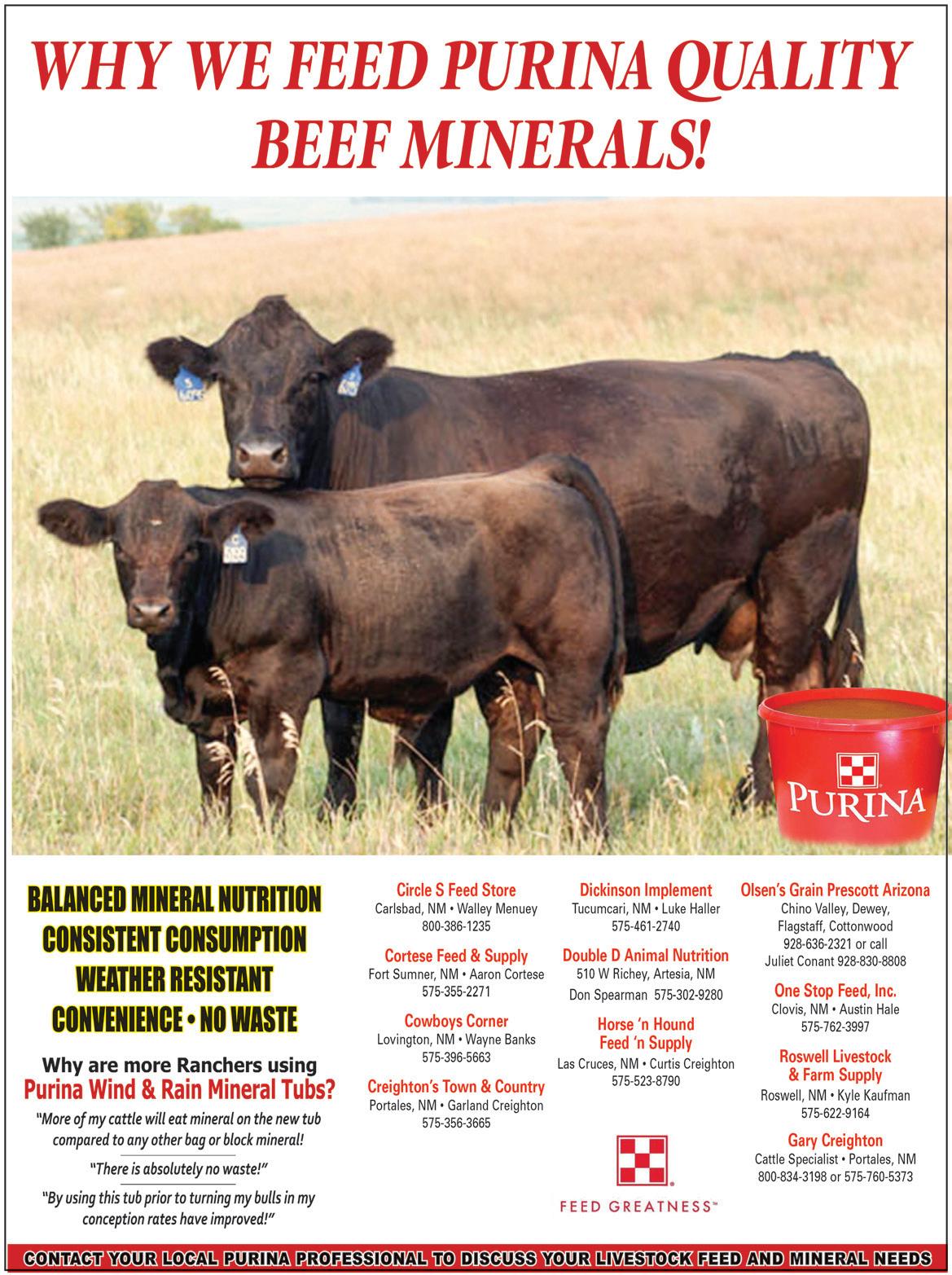
Williams Ranch Supply Quemado, NM
Jimbo & Trisha Williams 505-238-4656